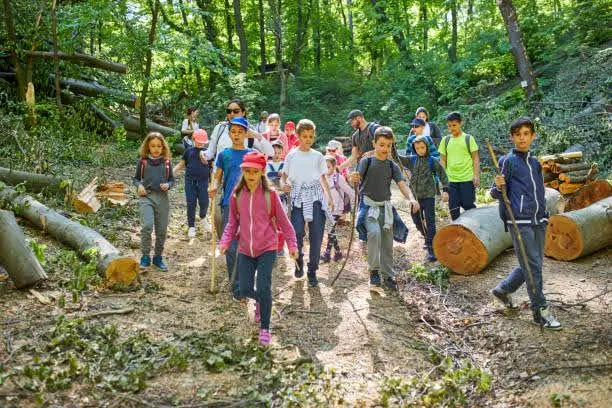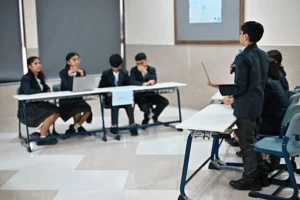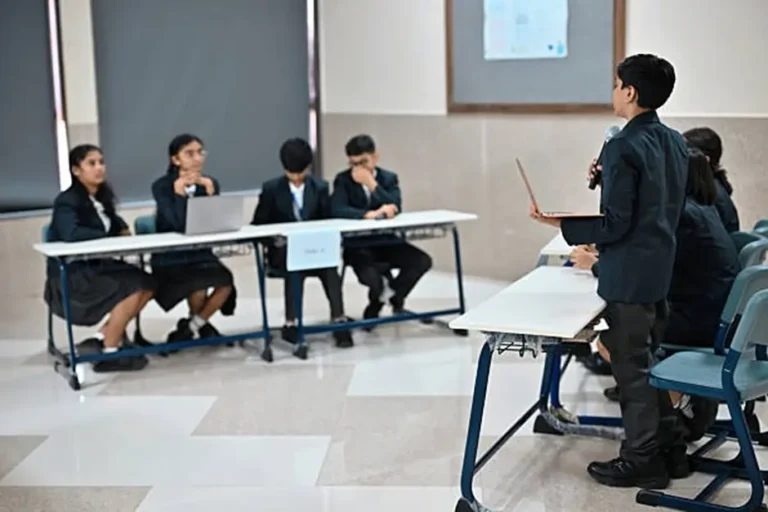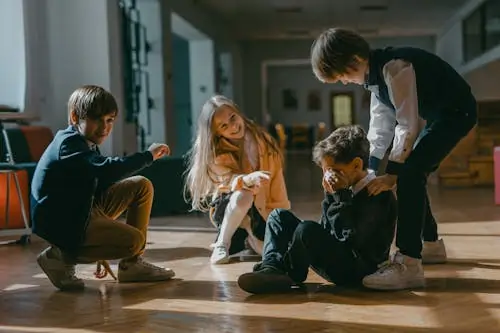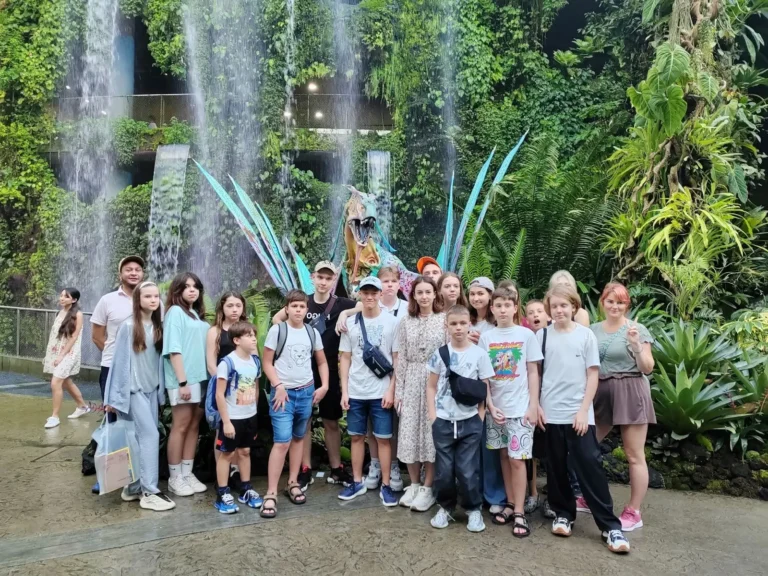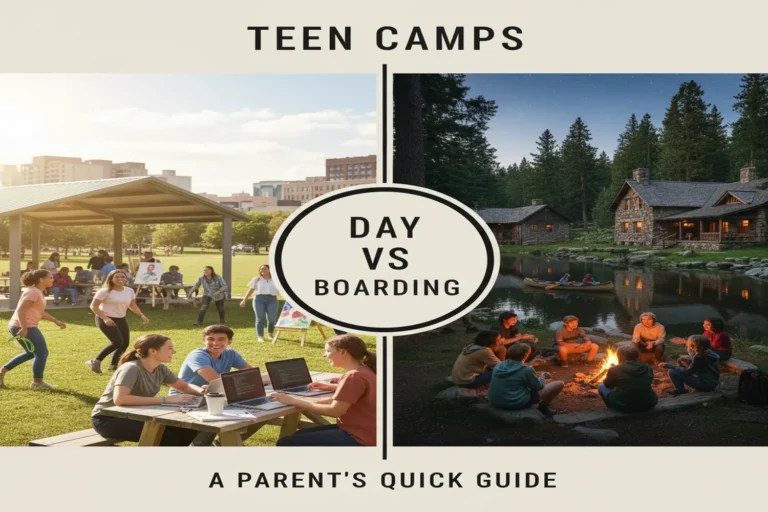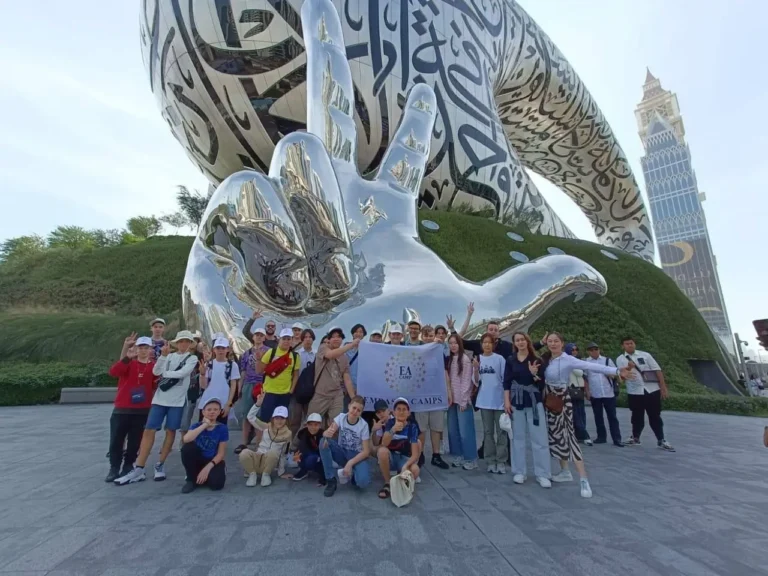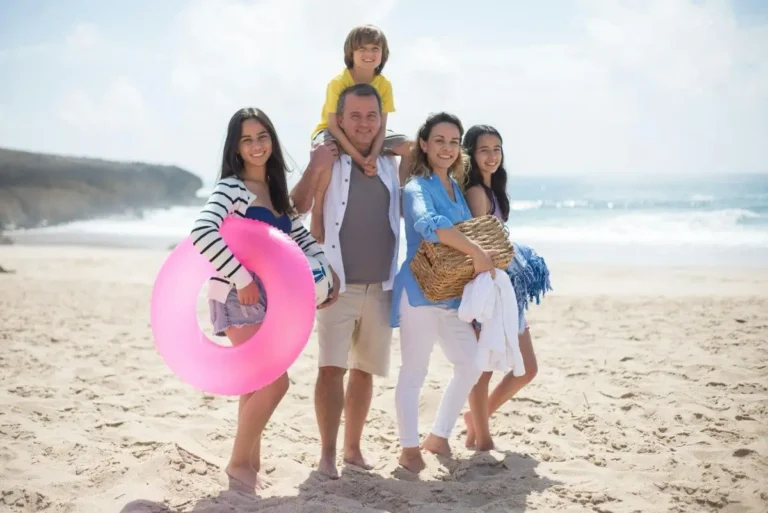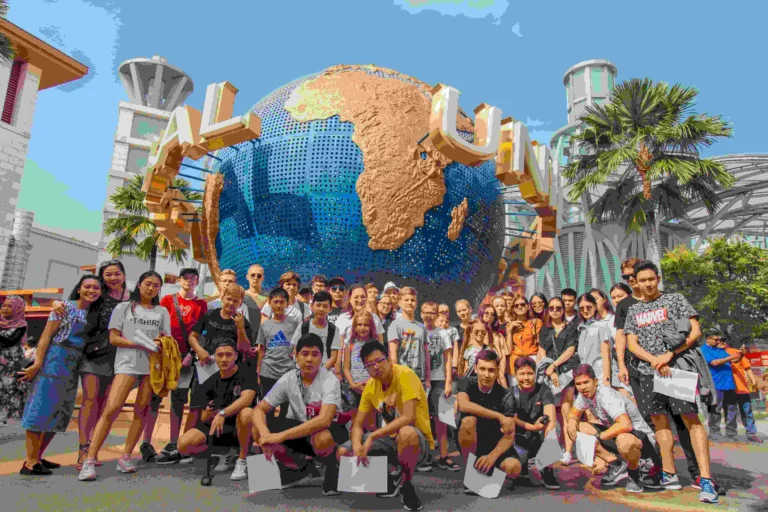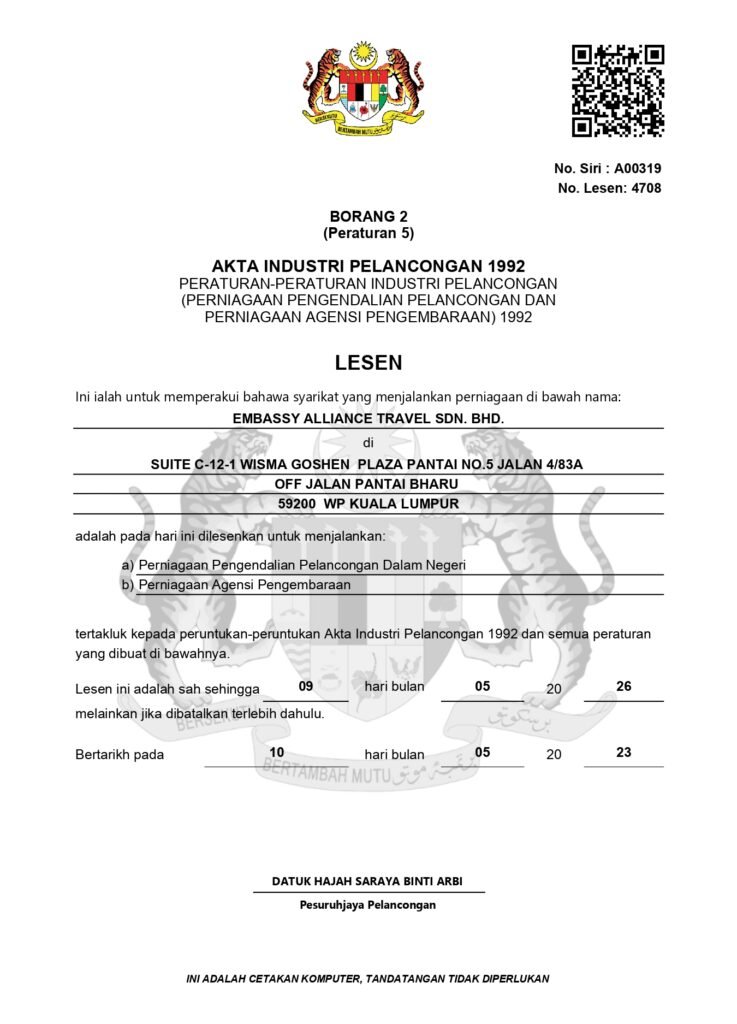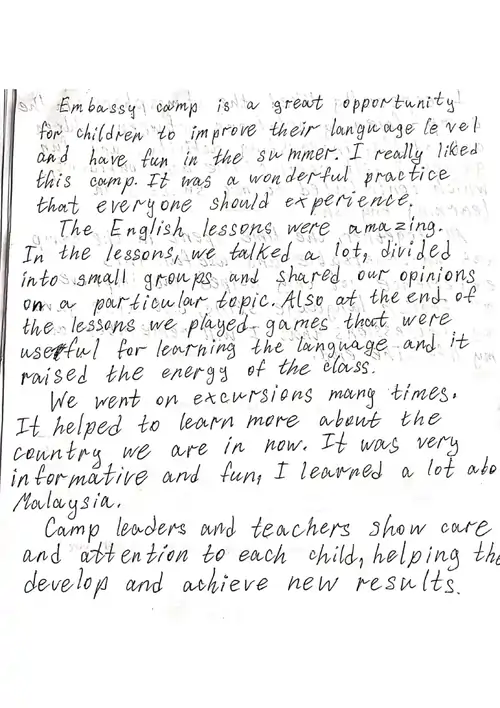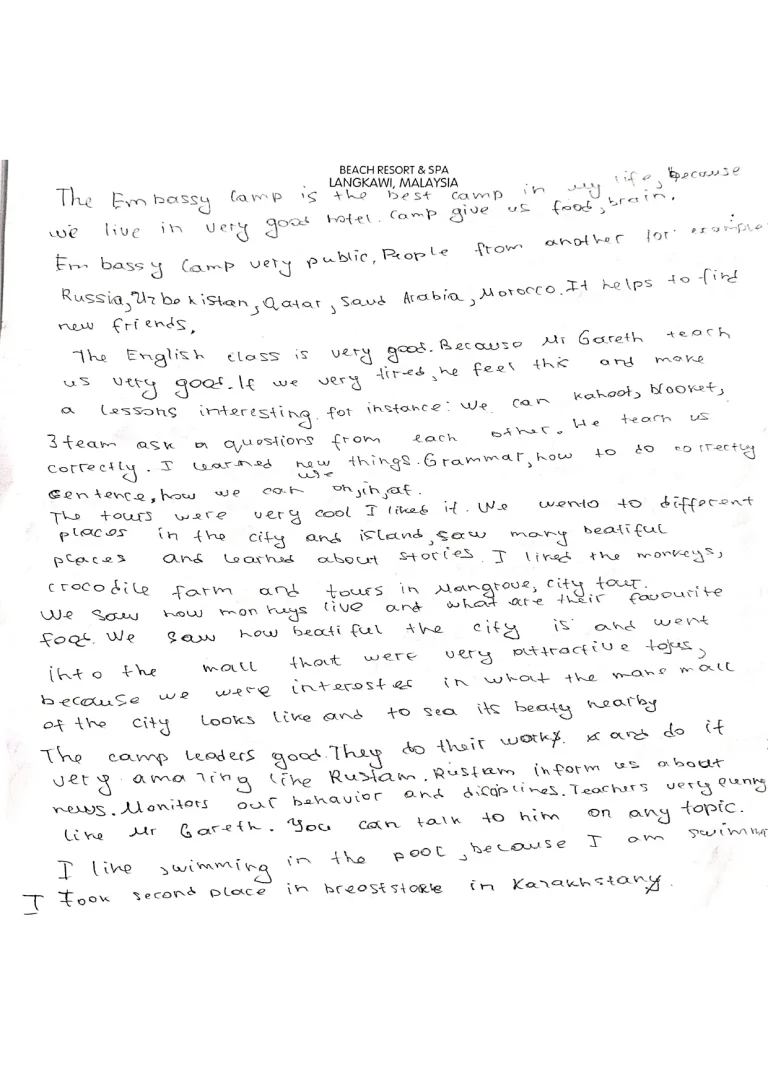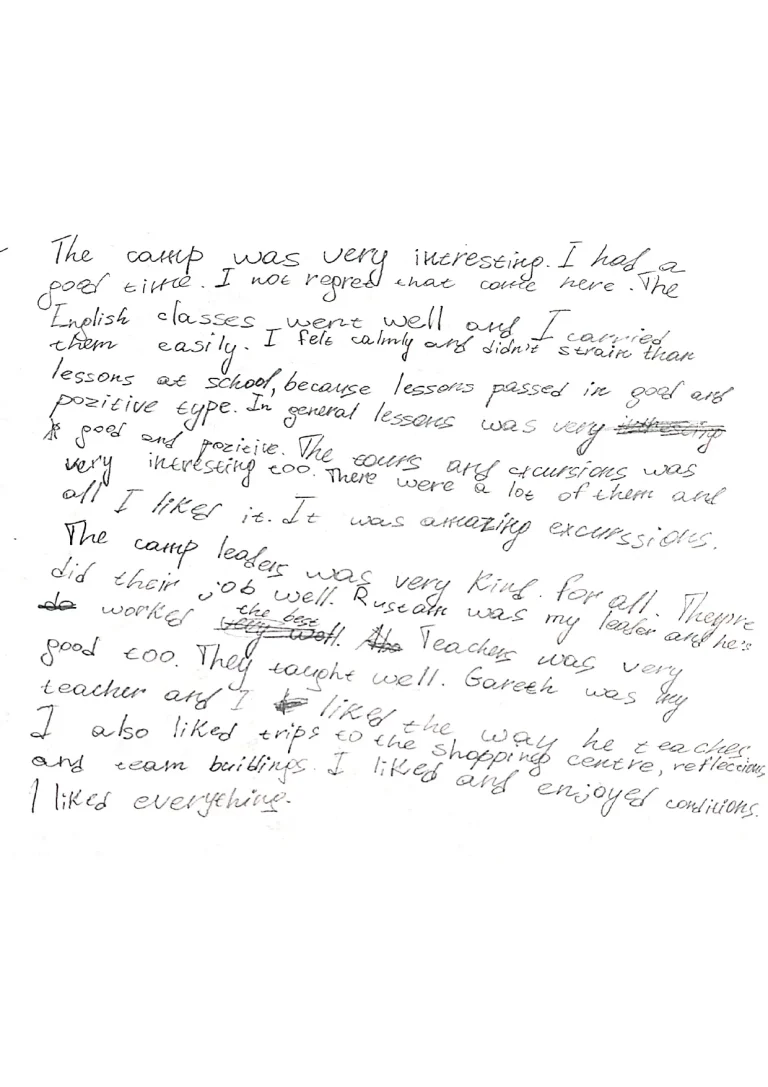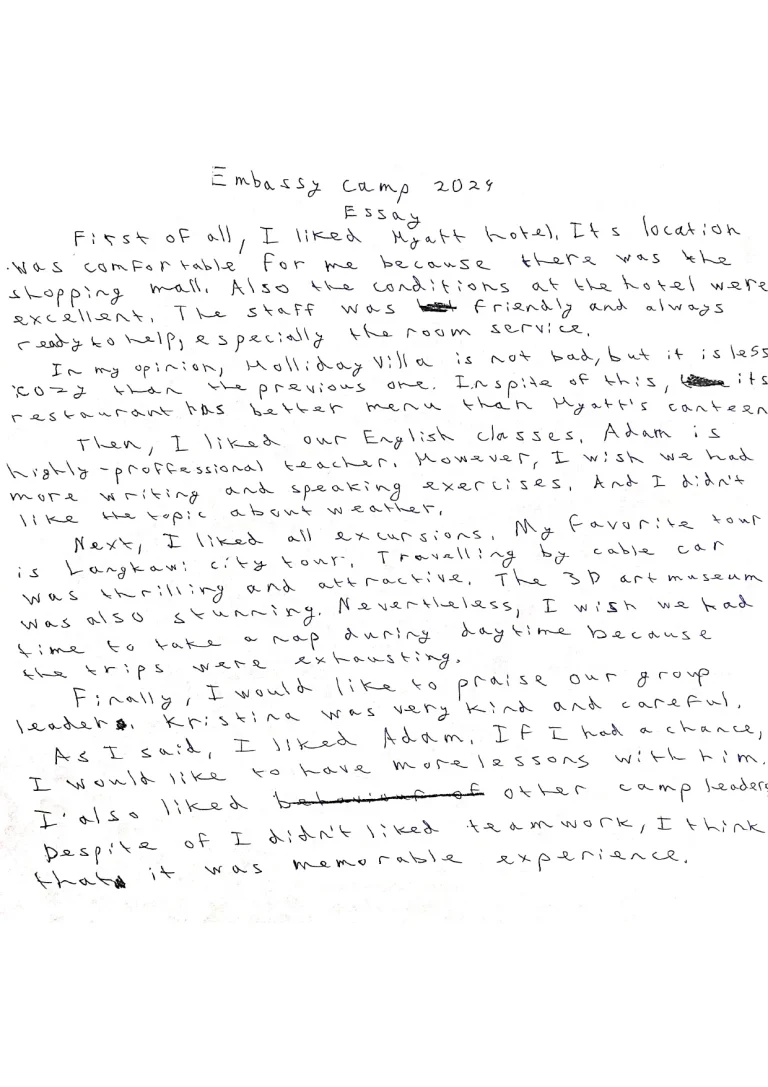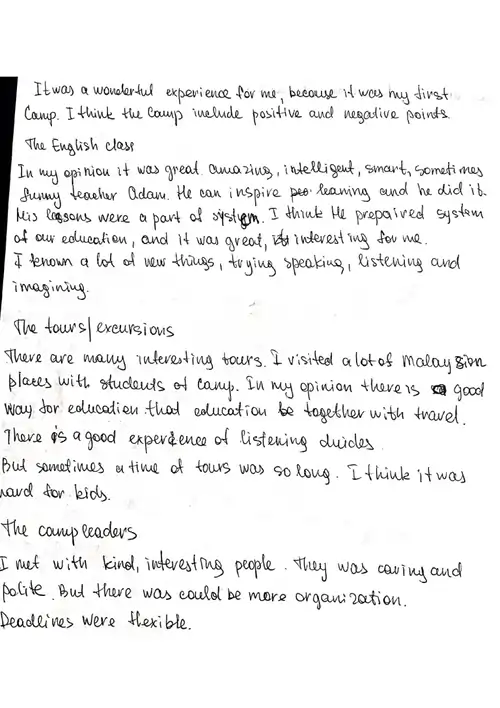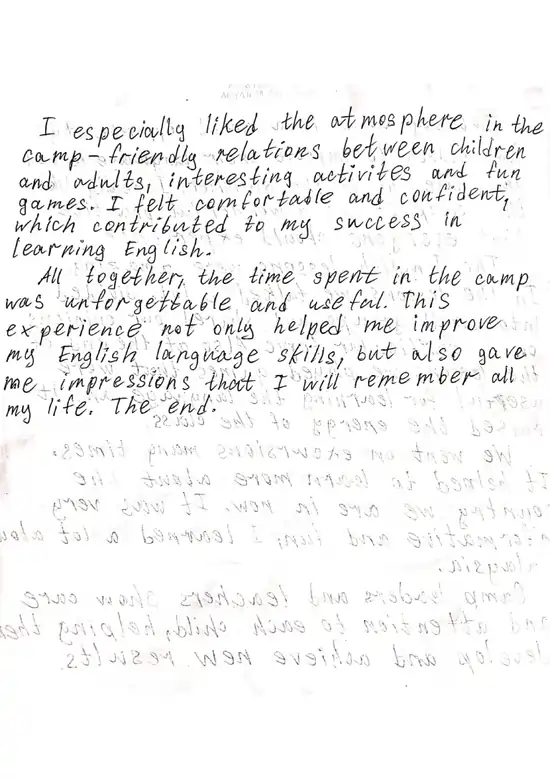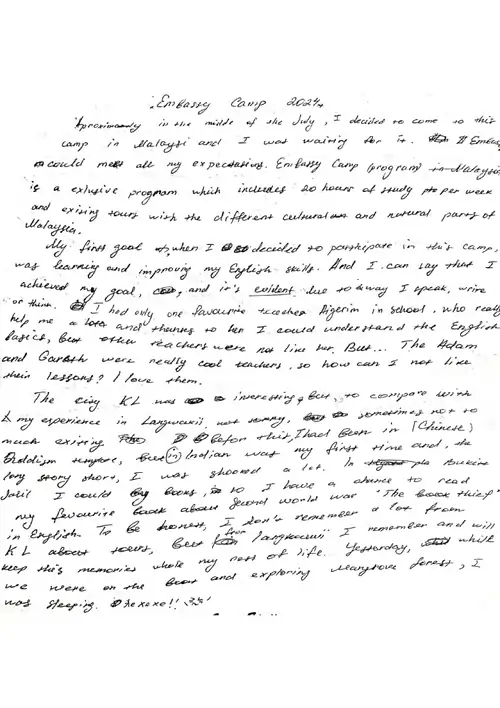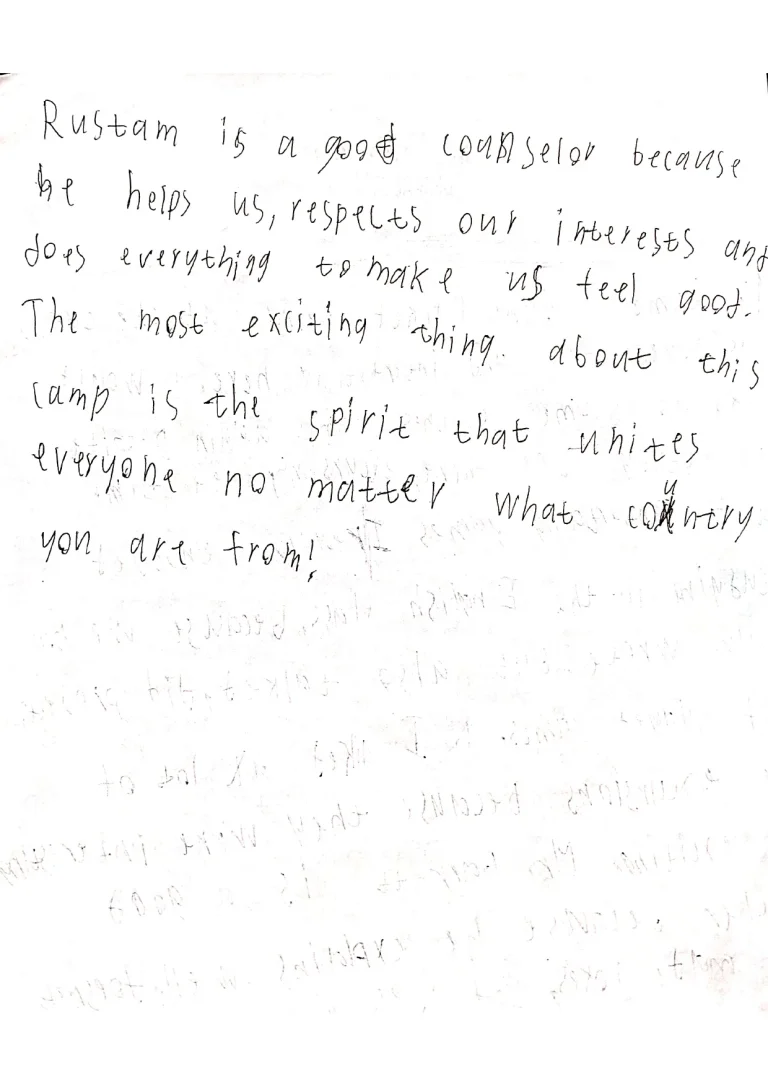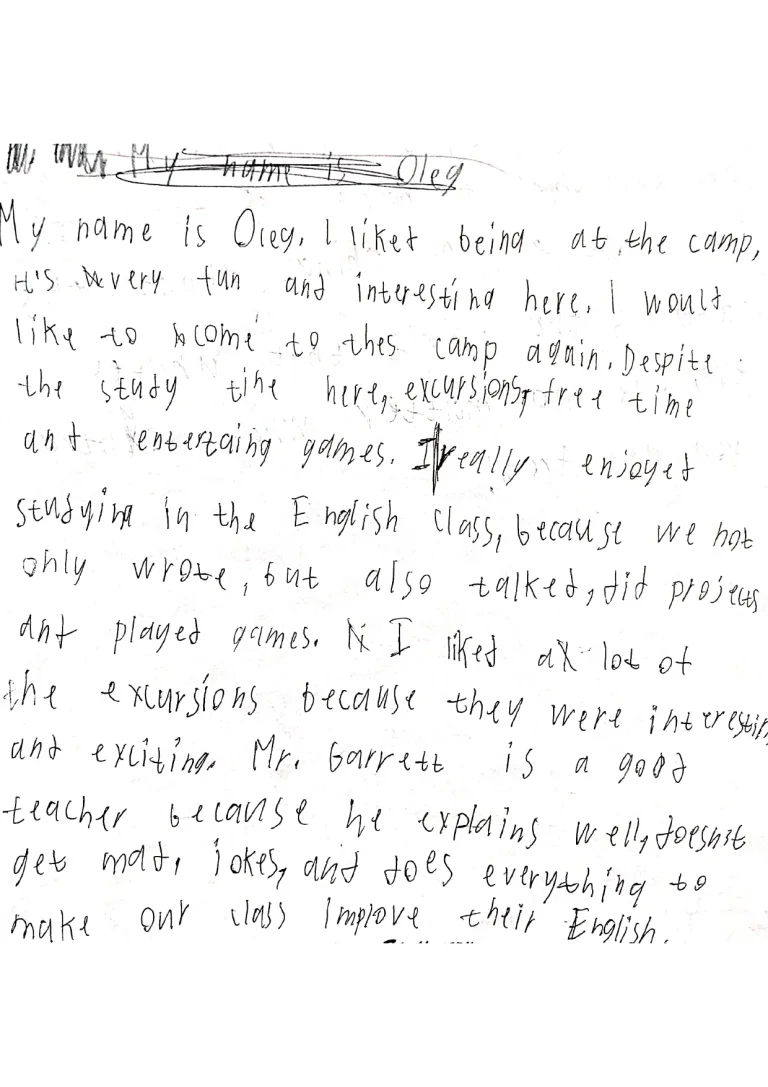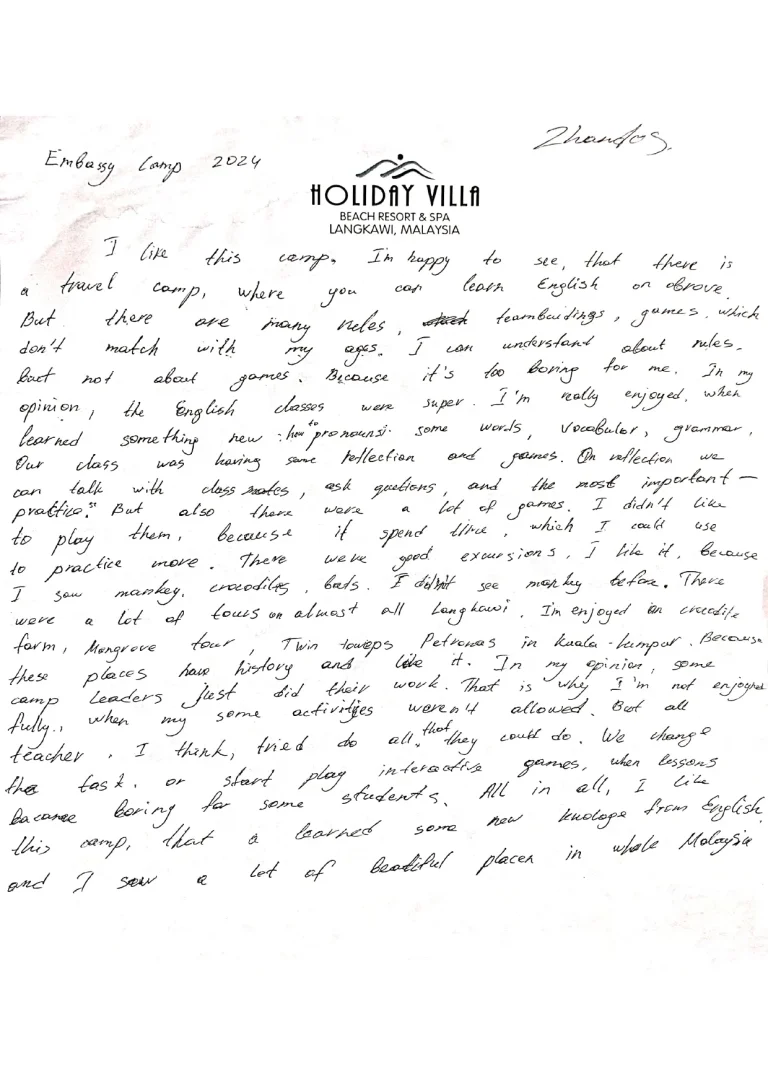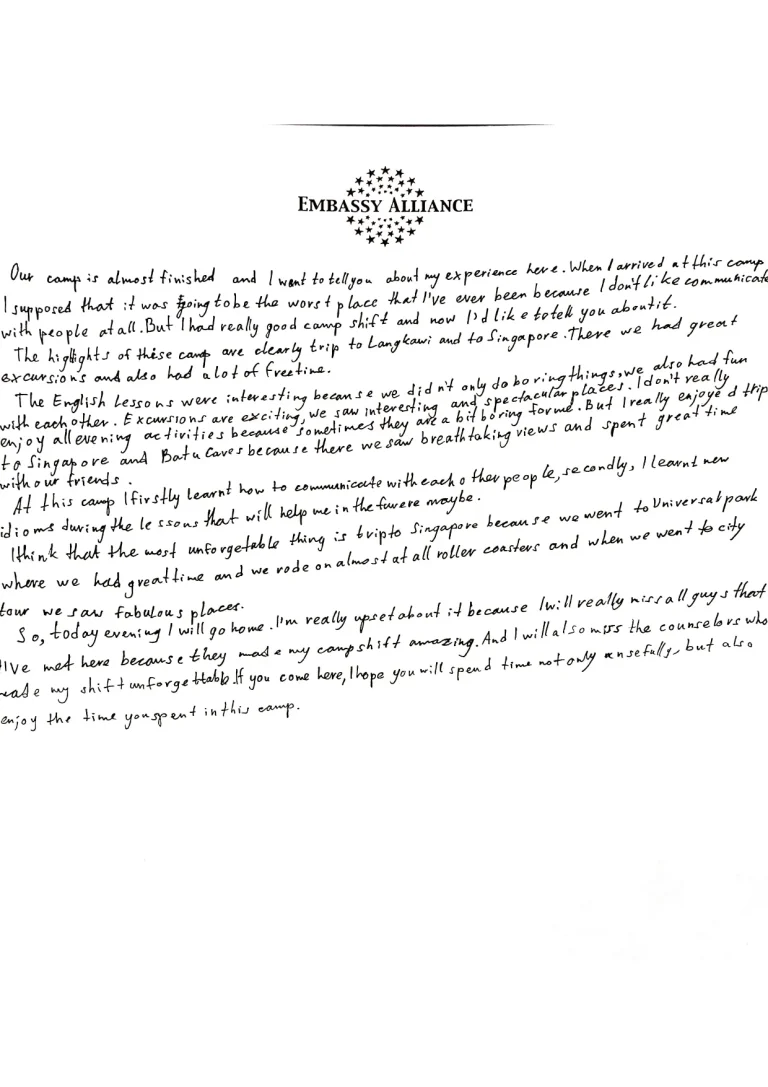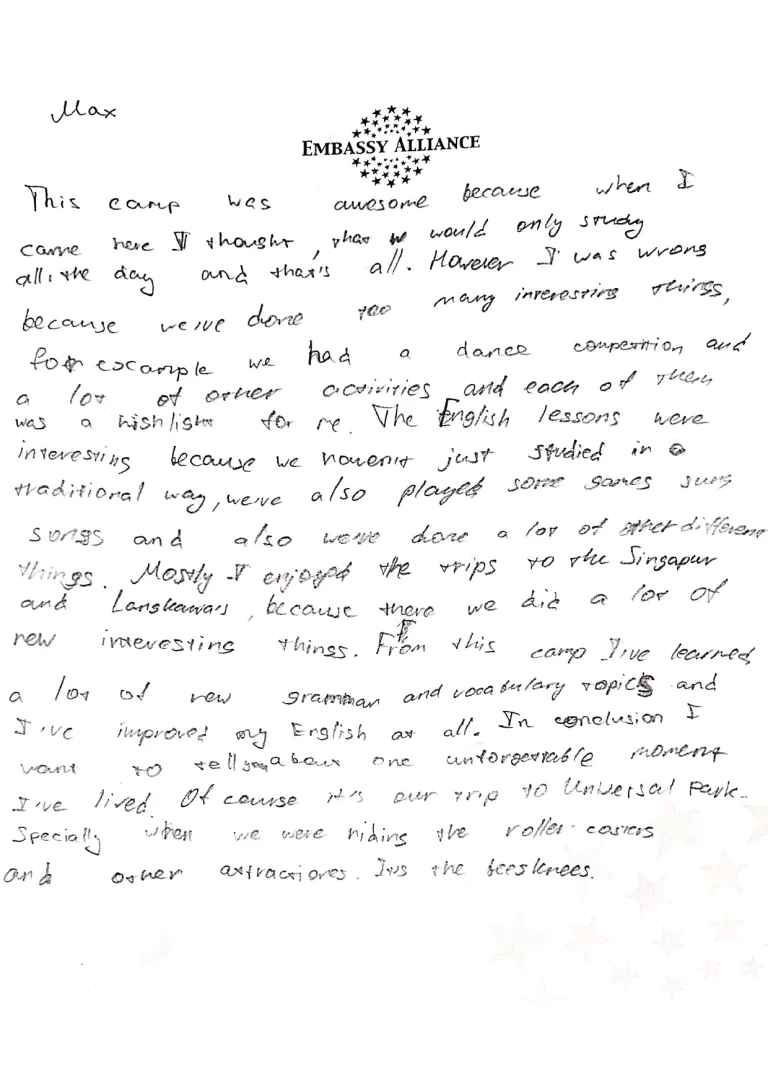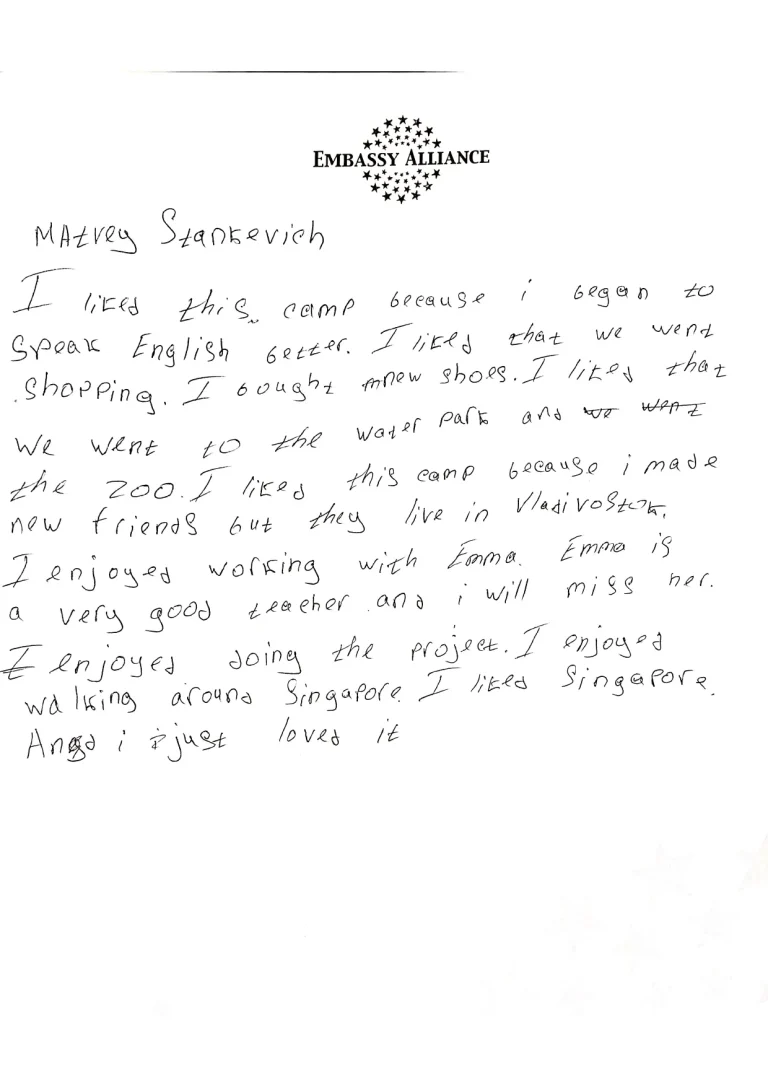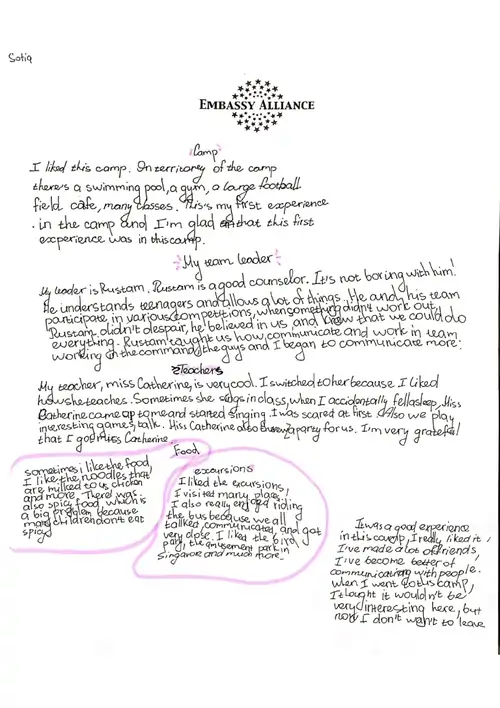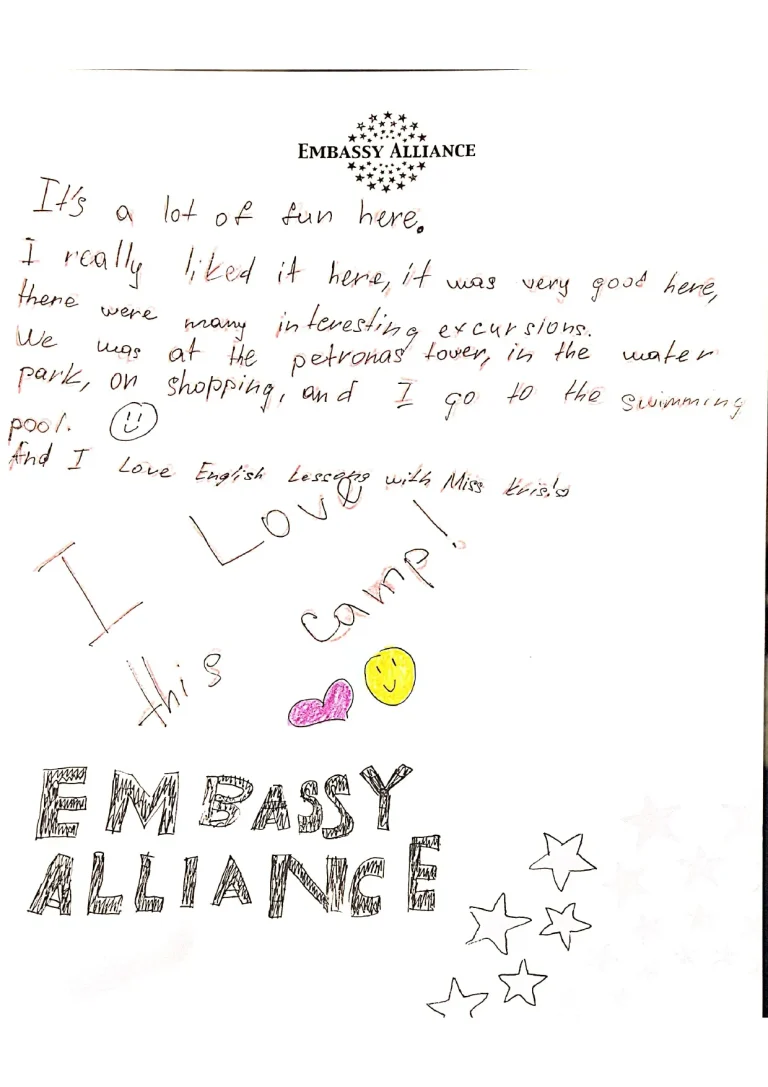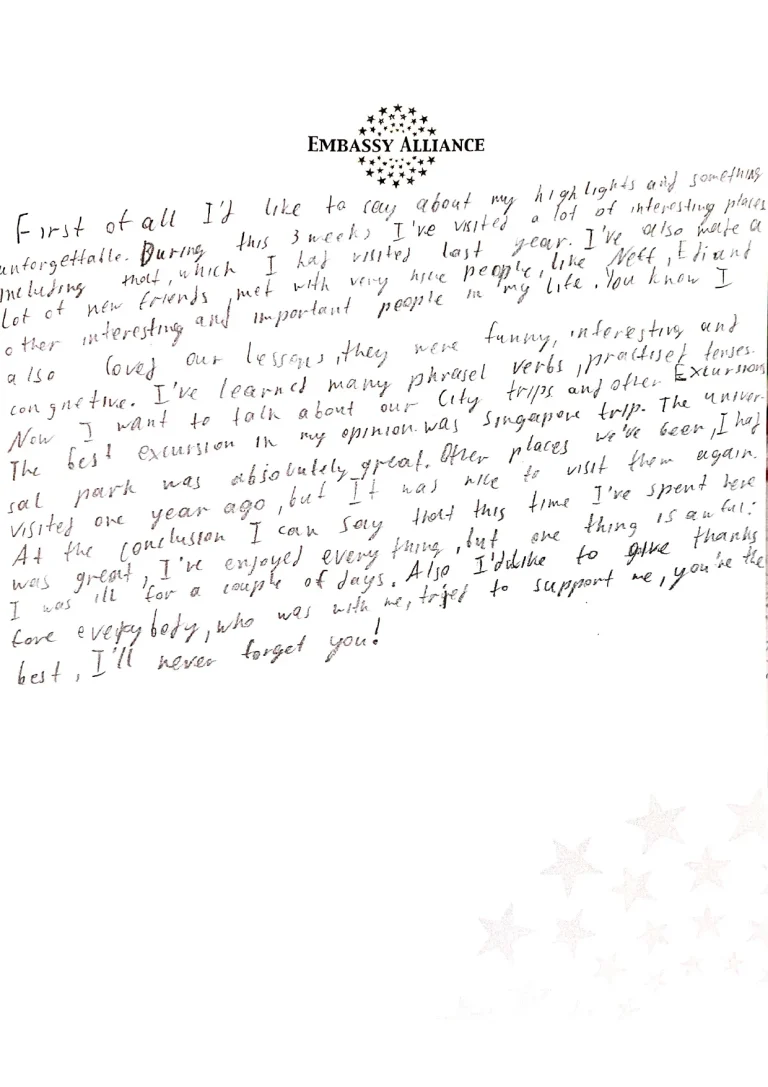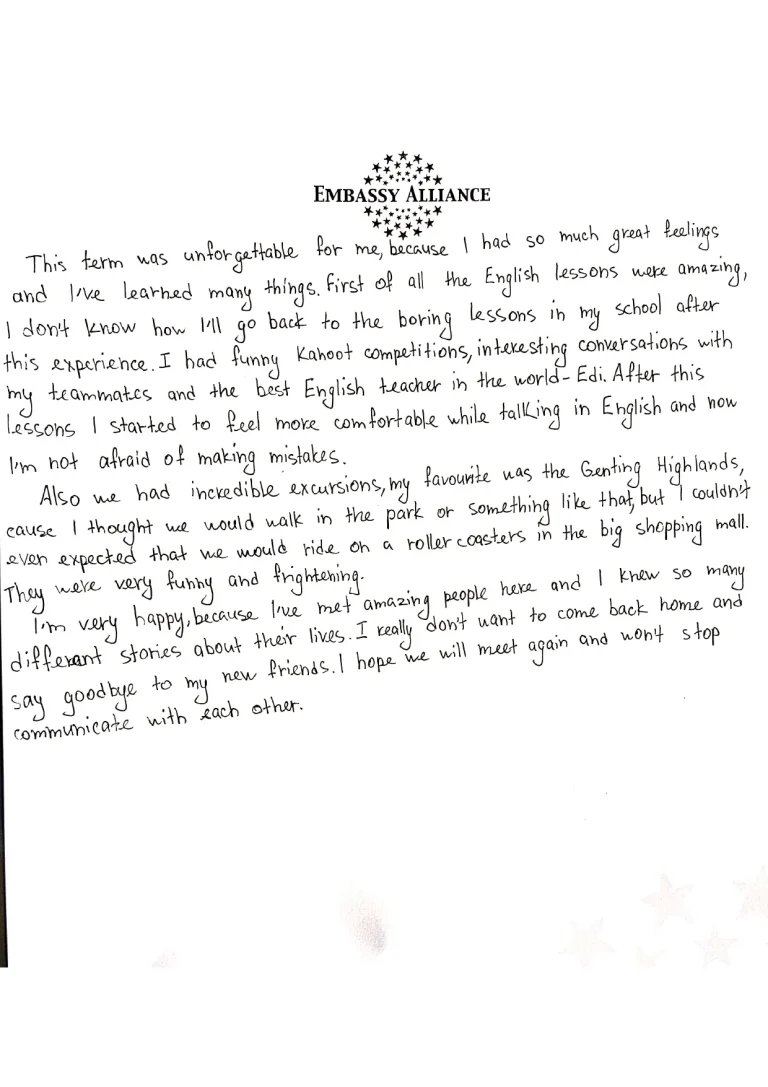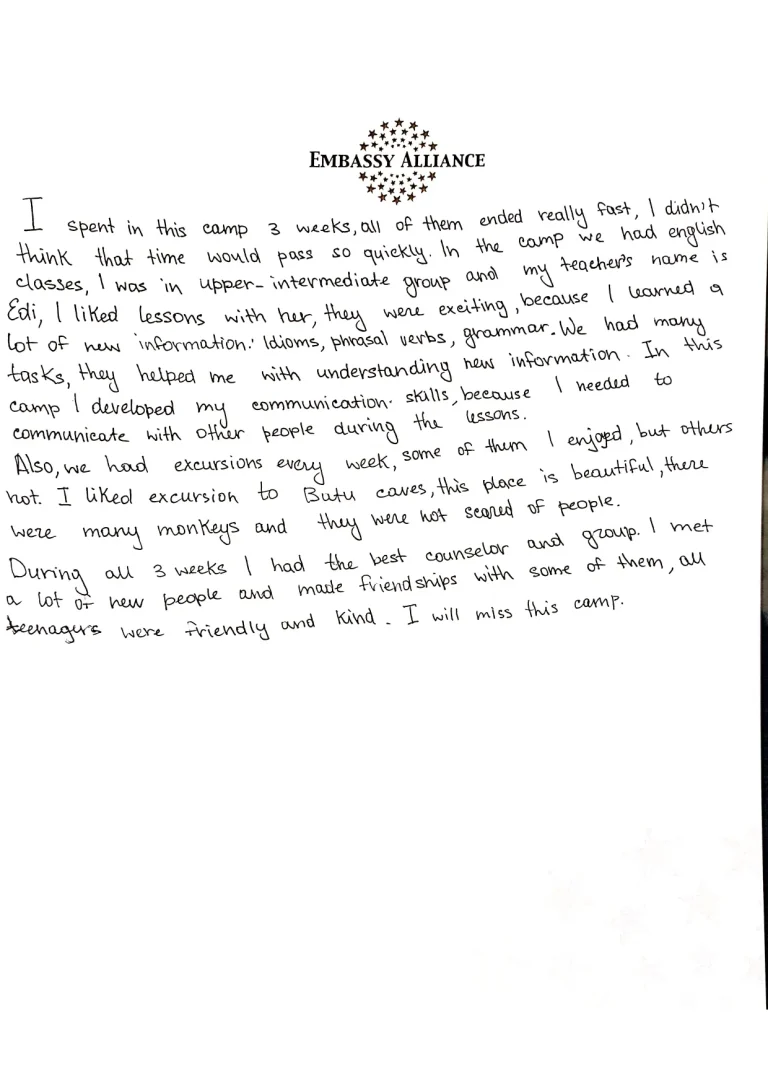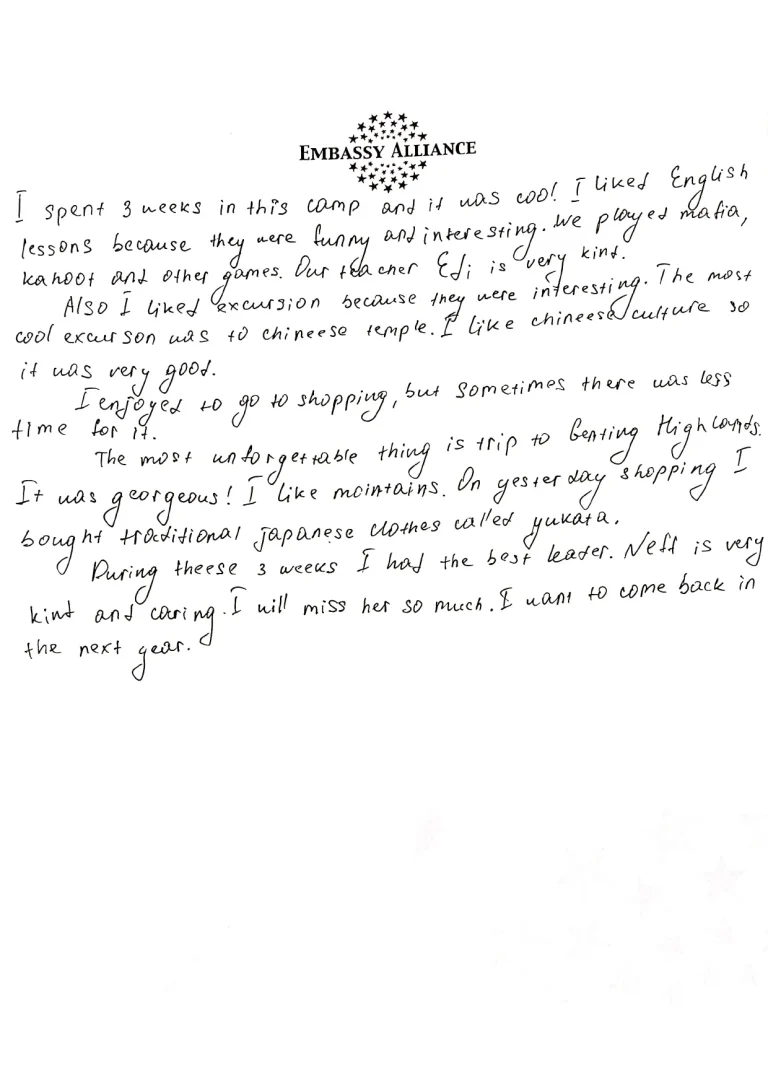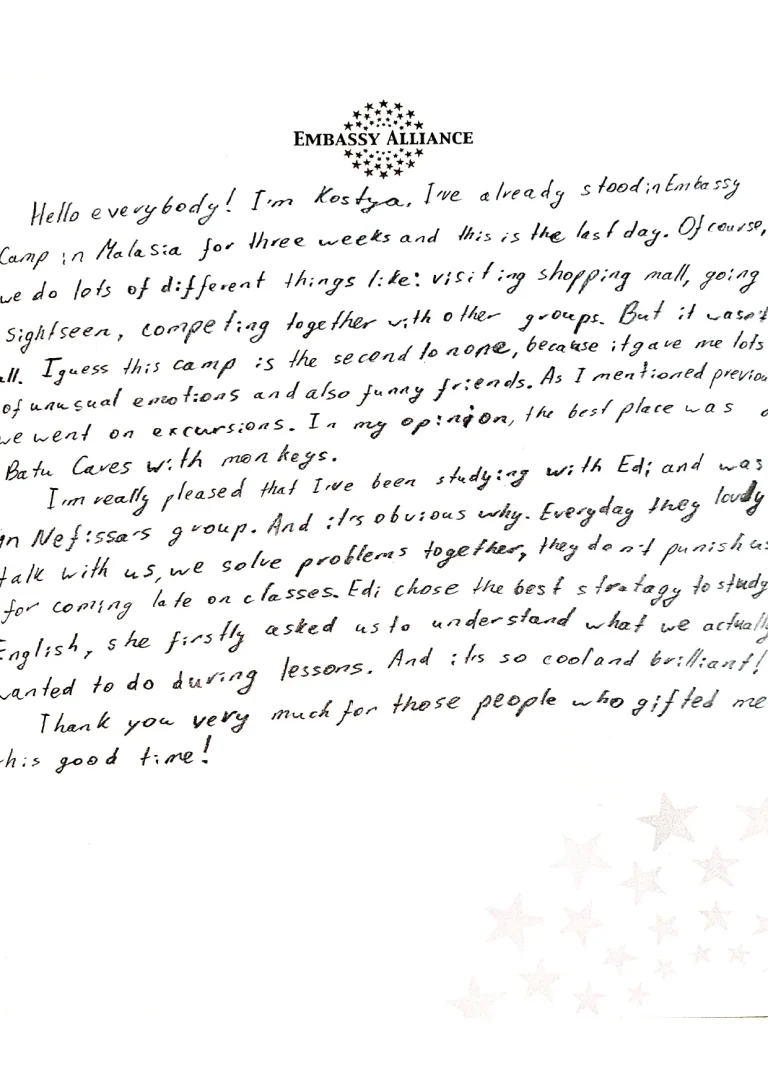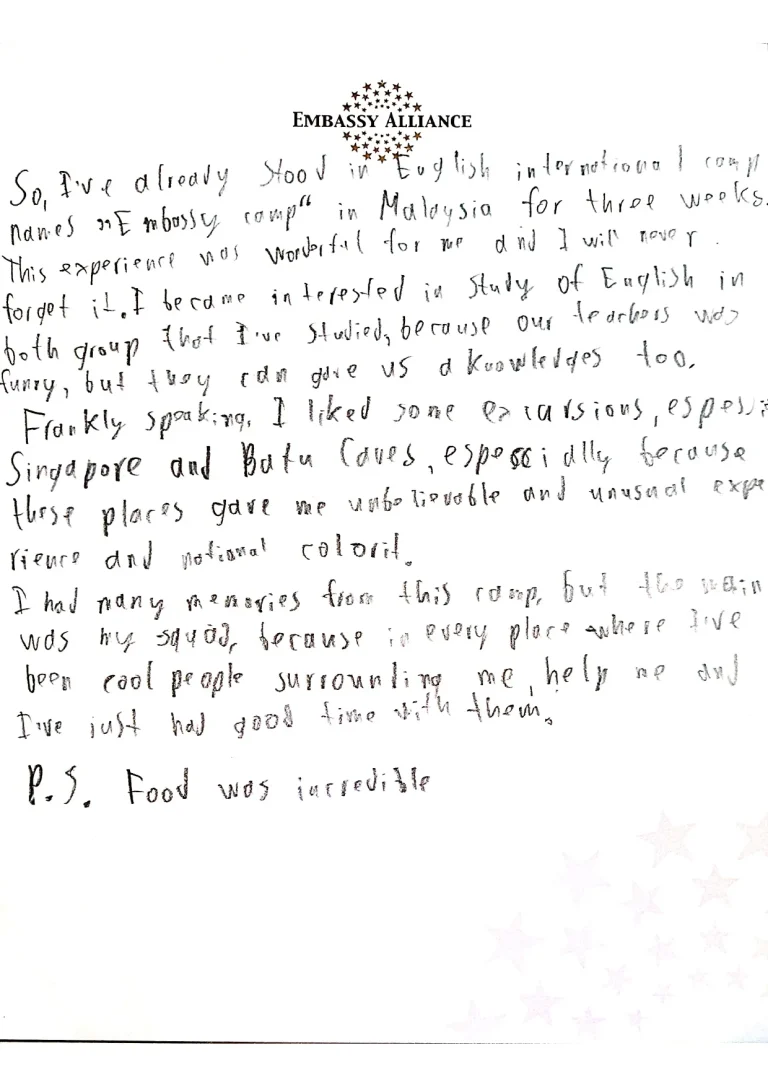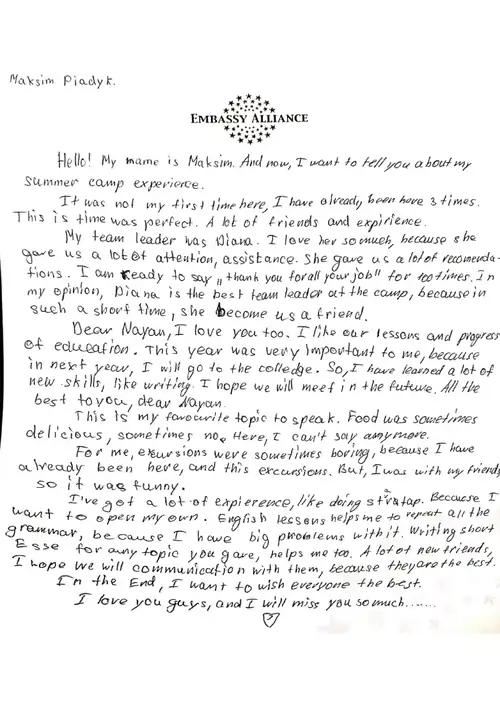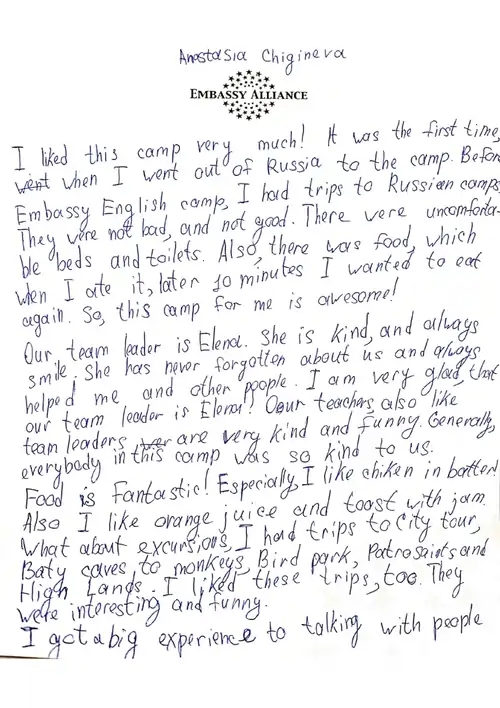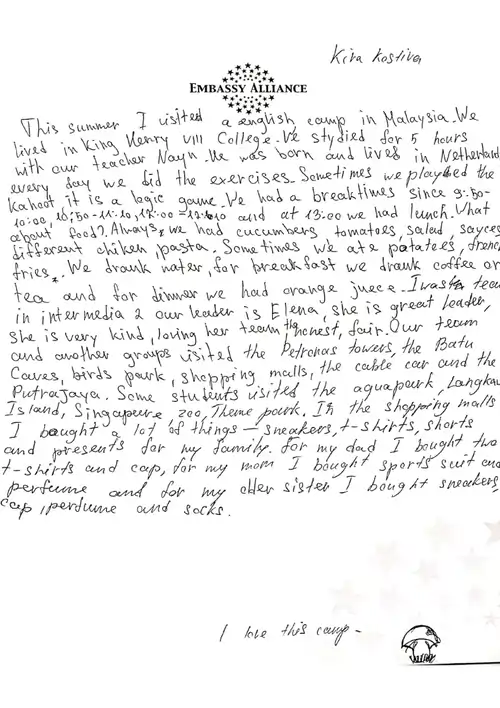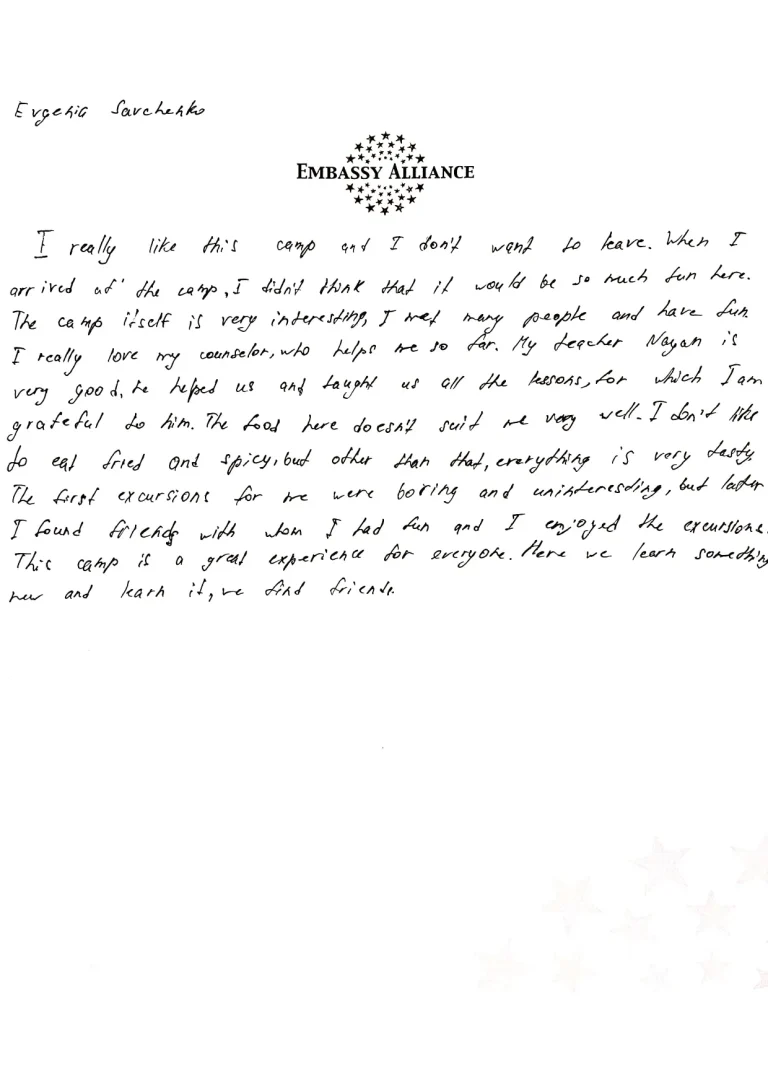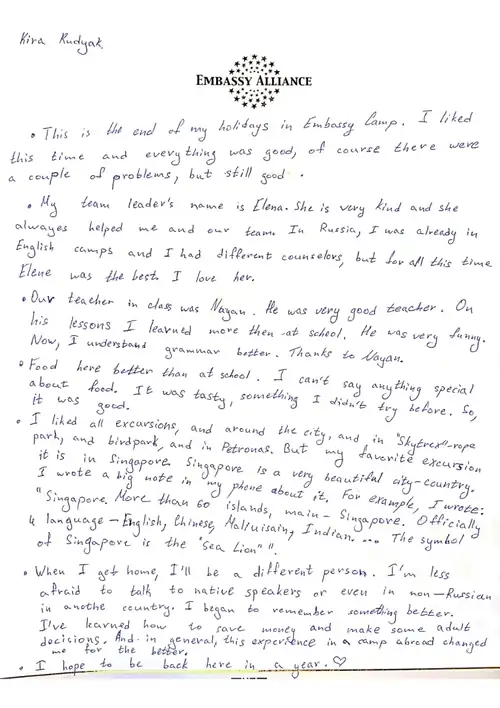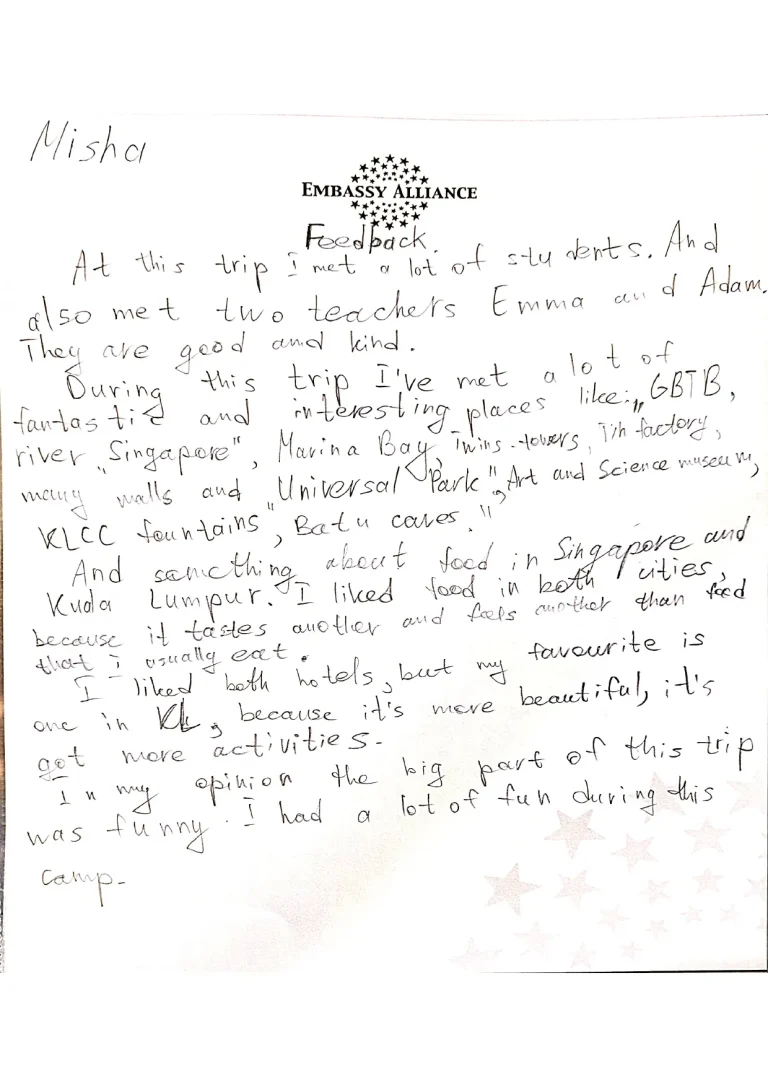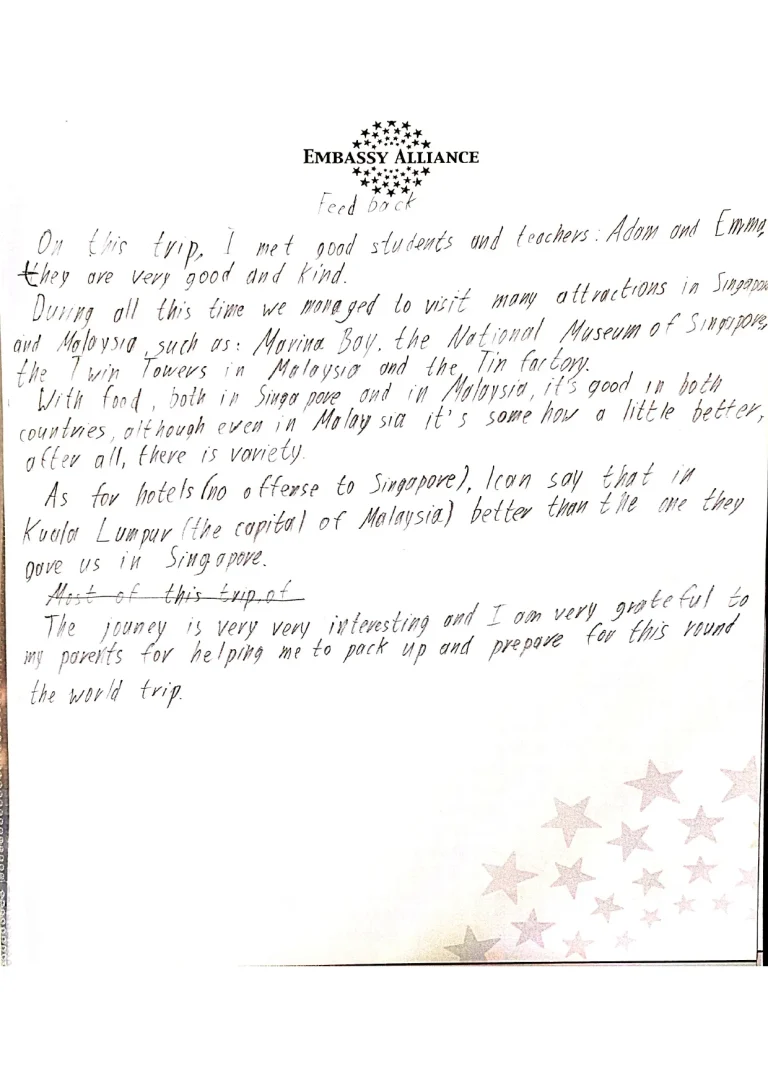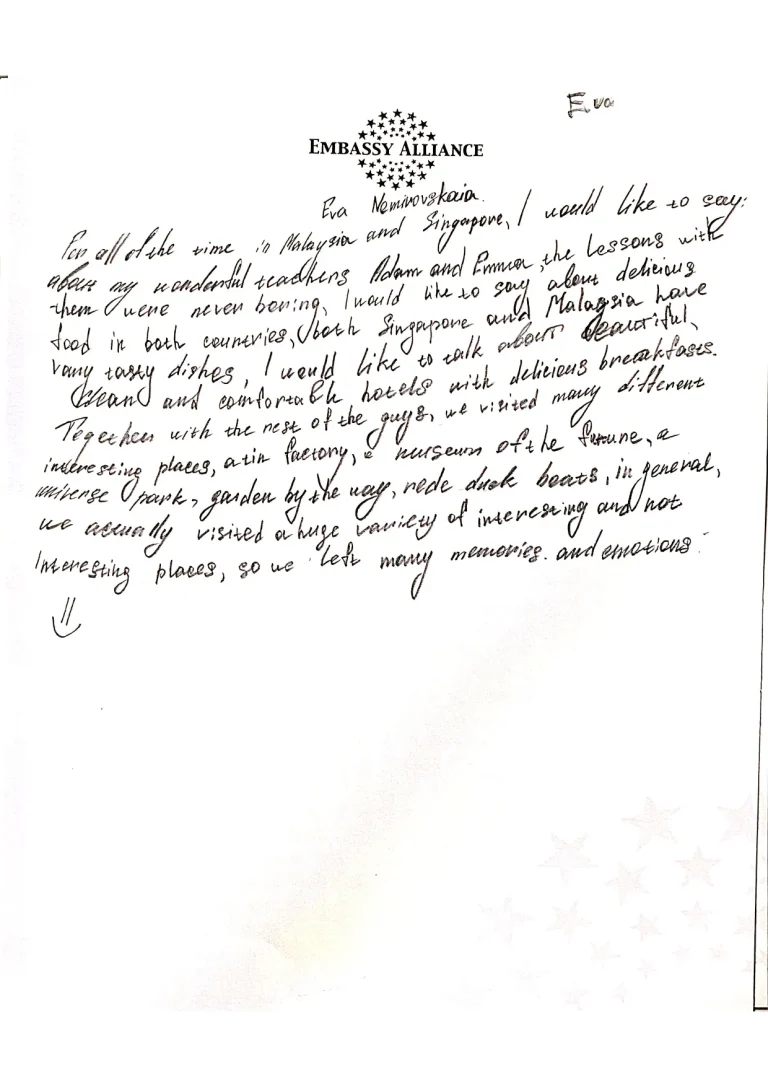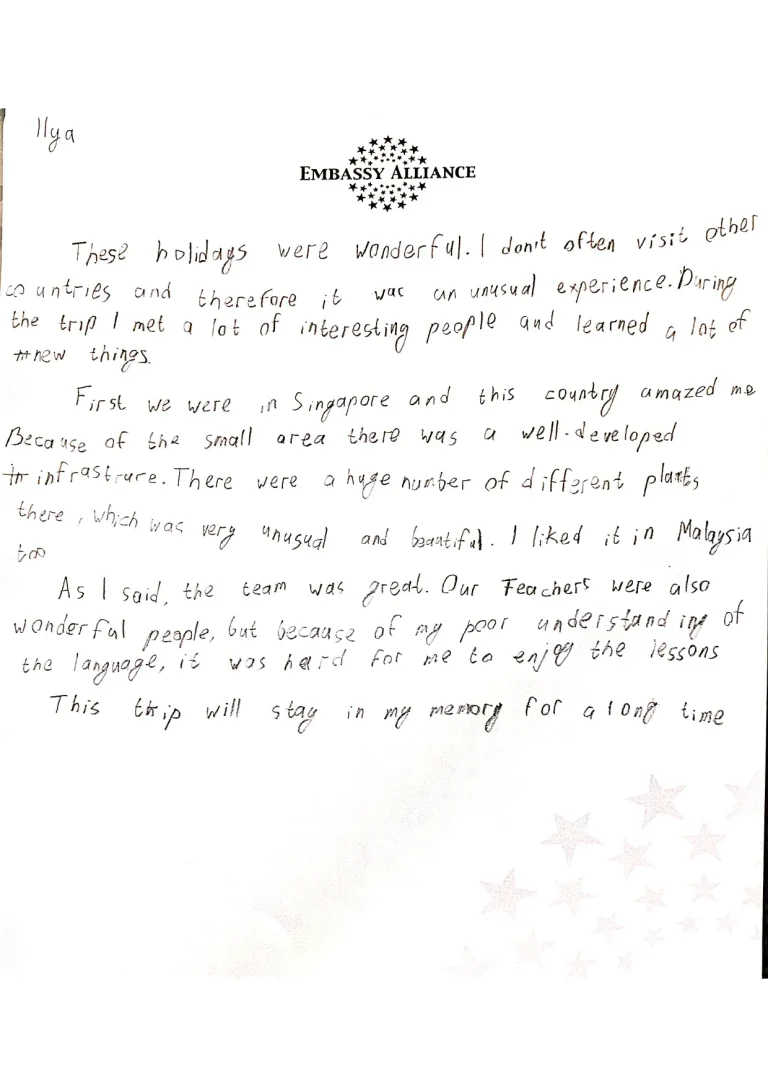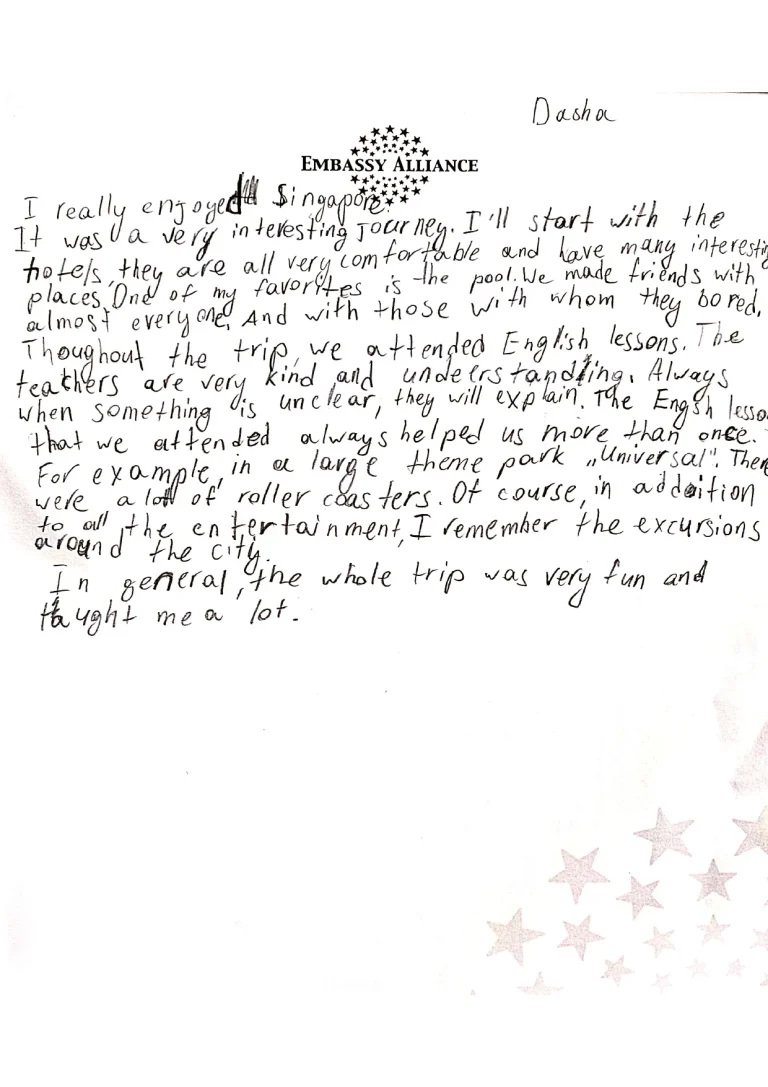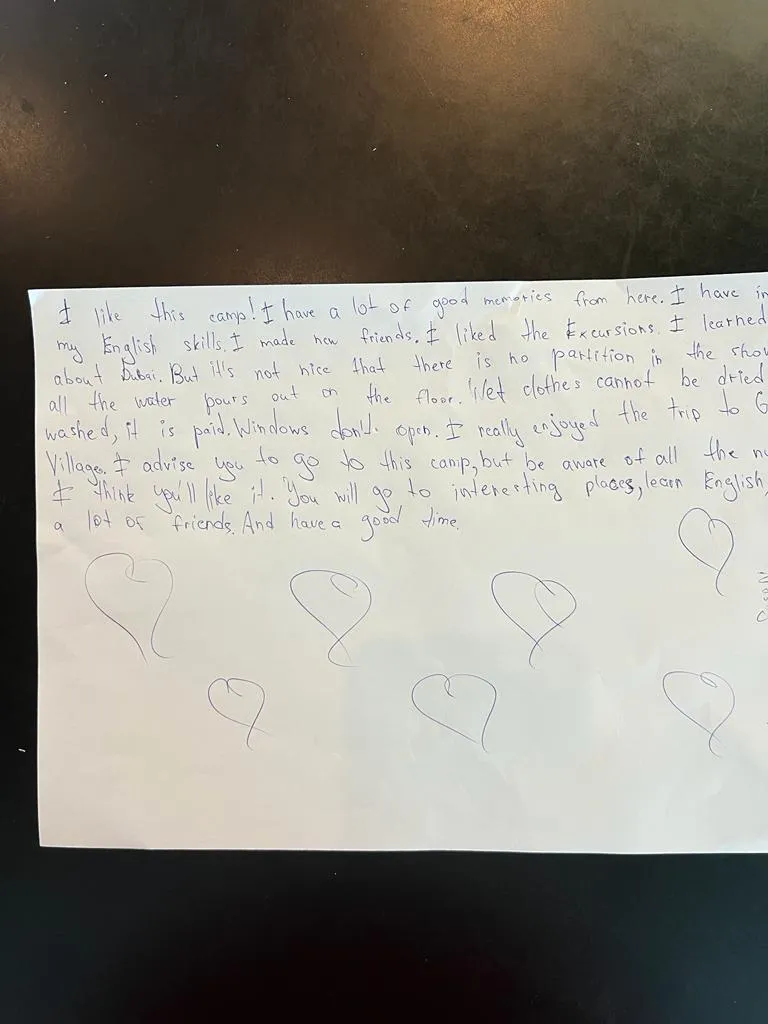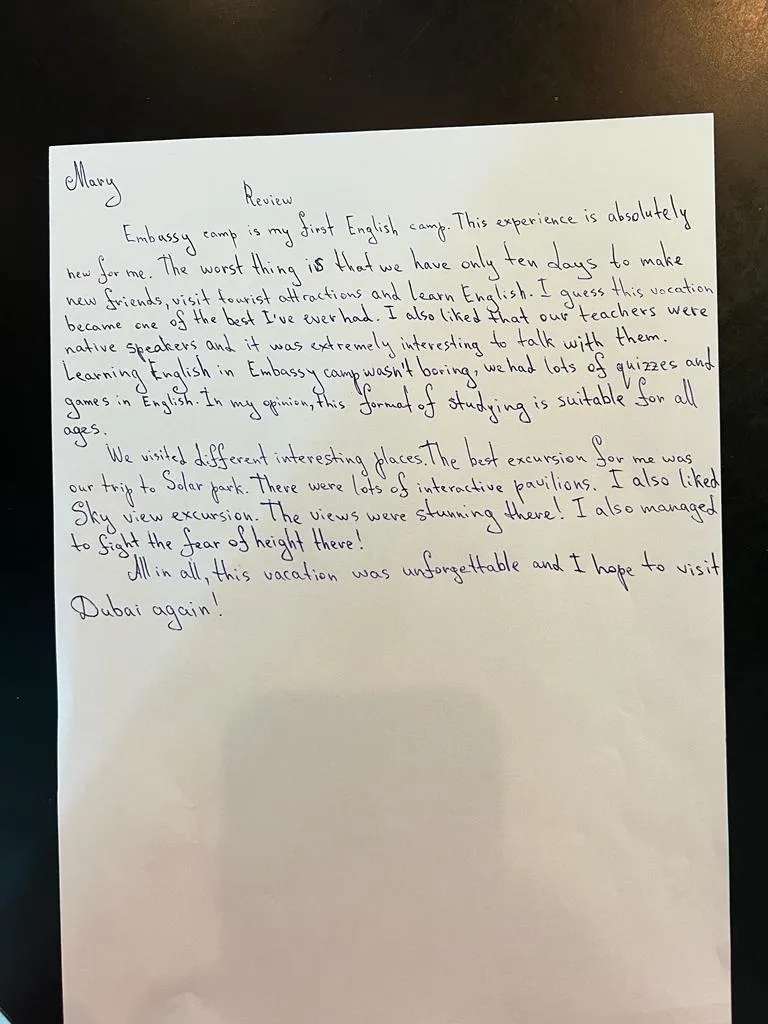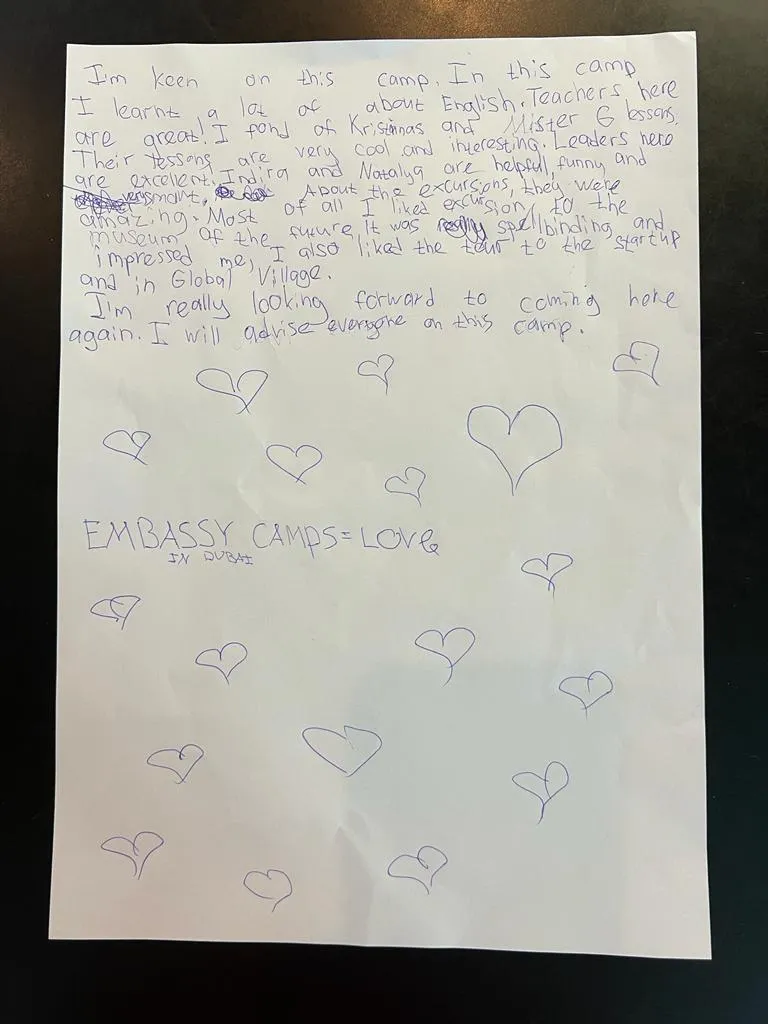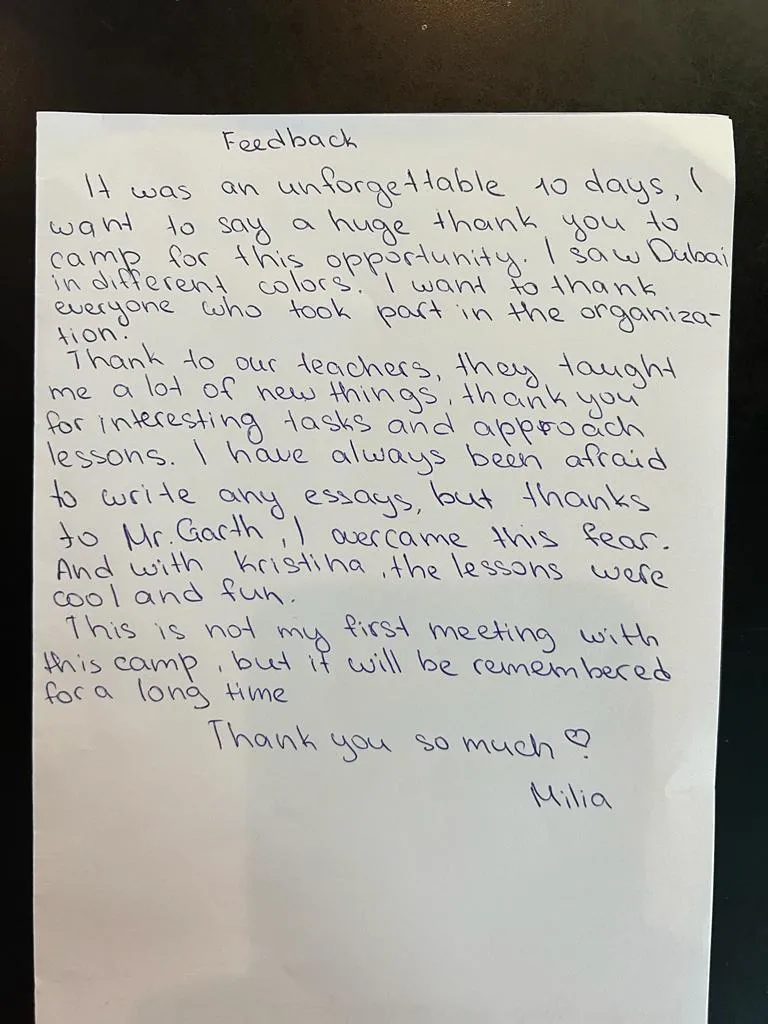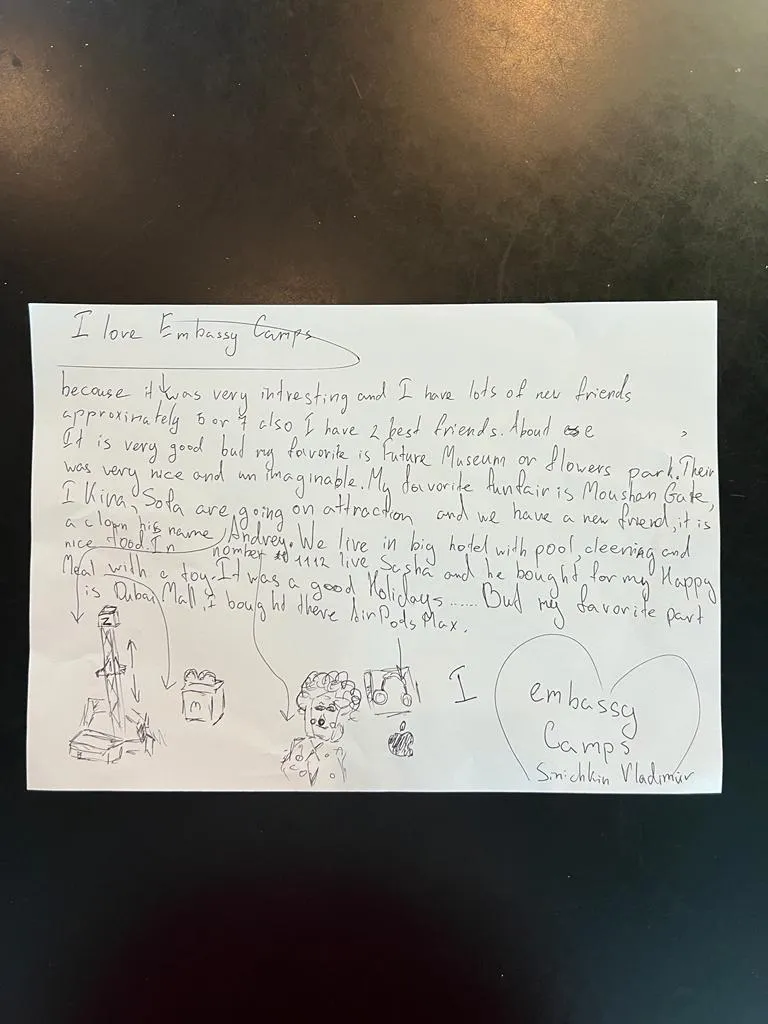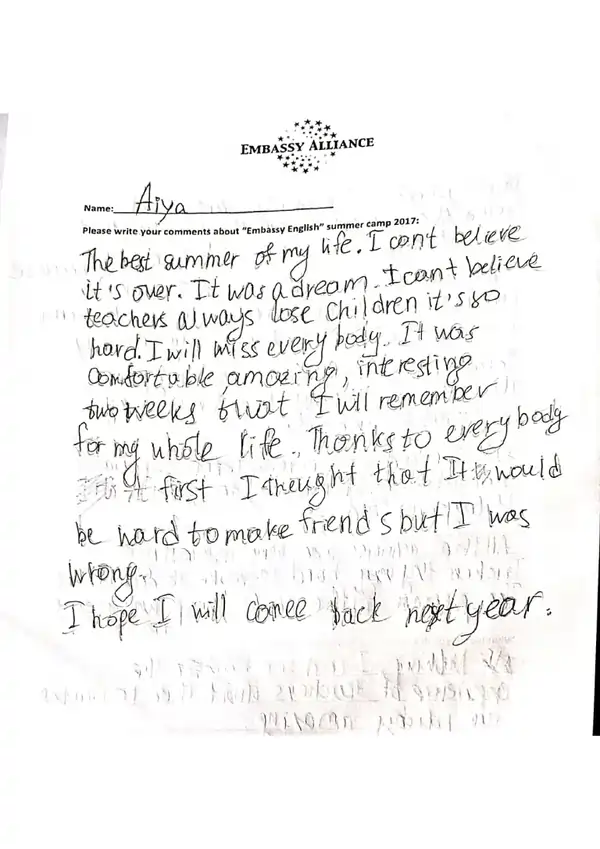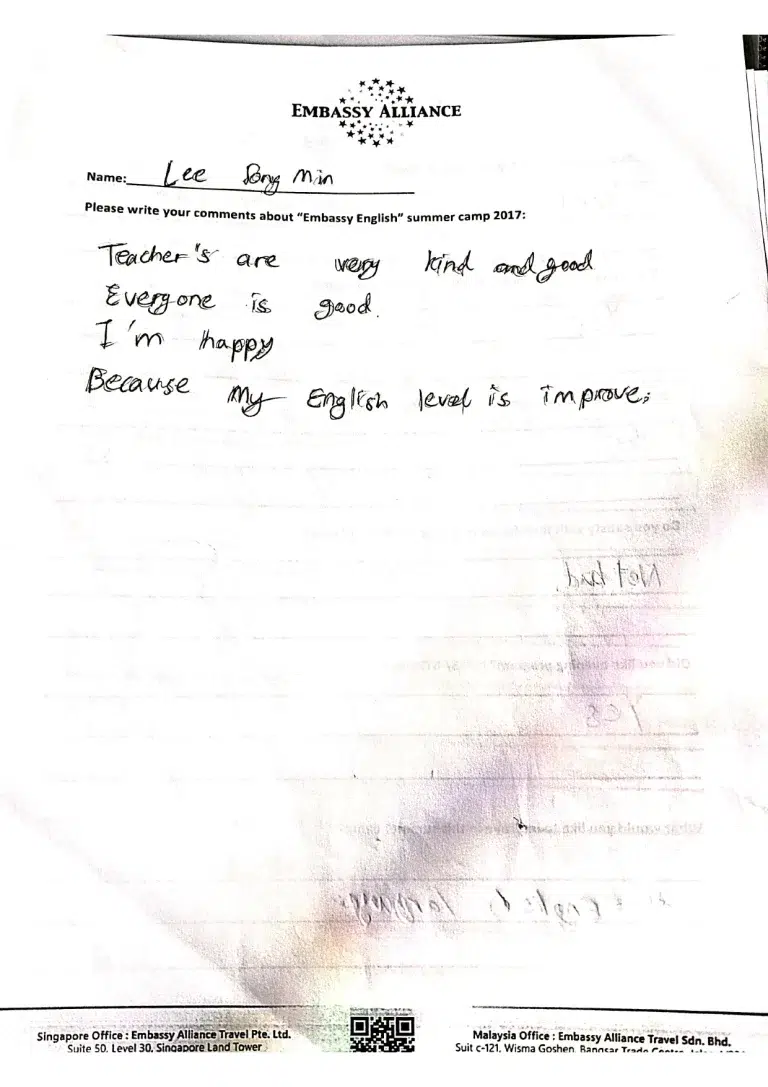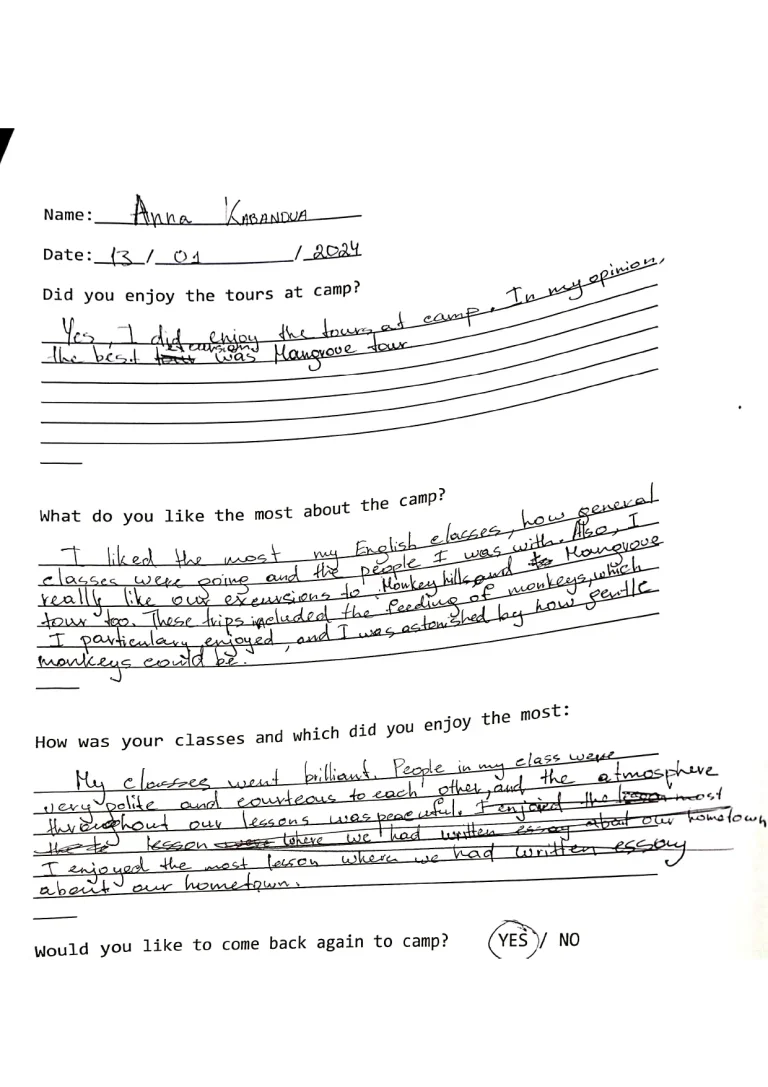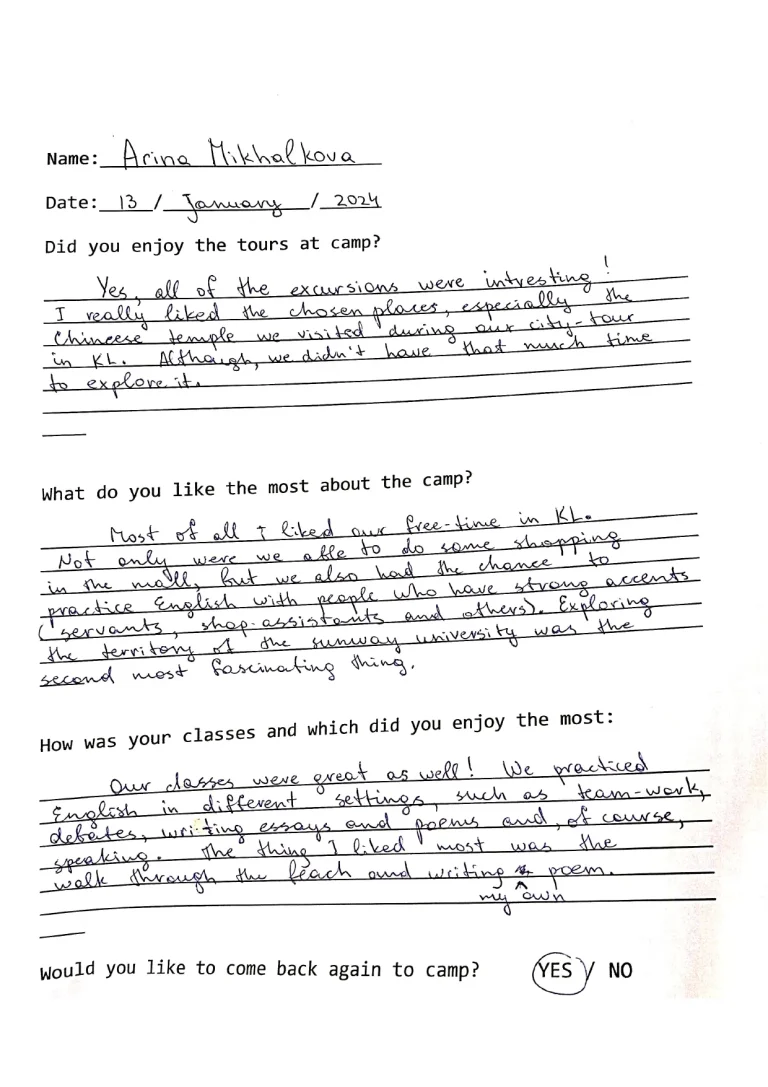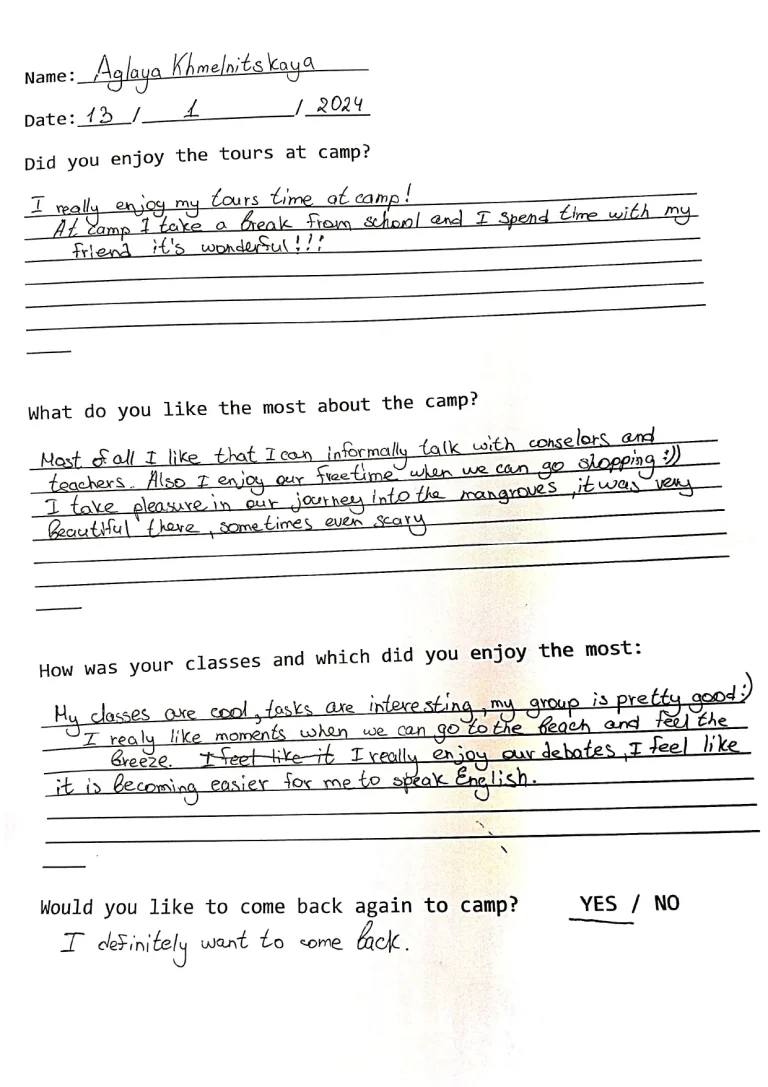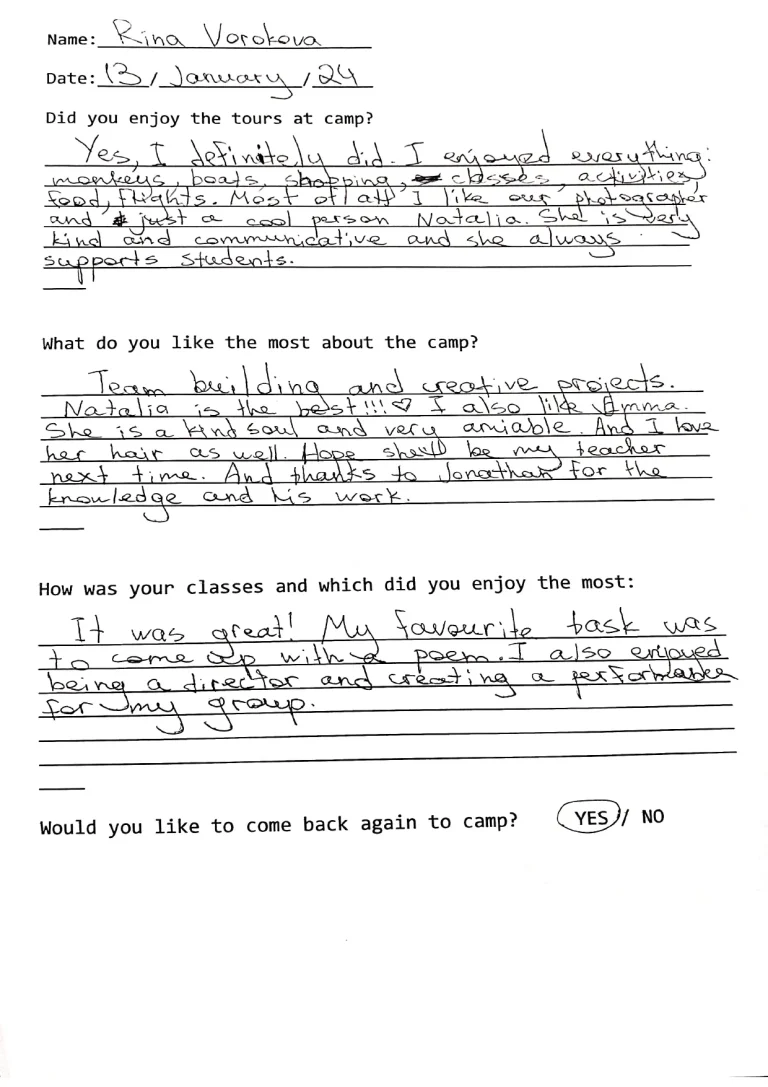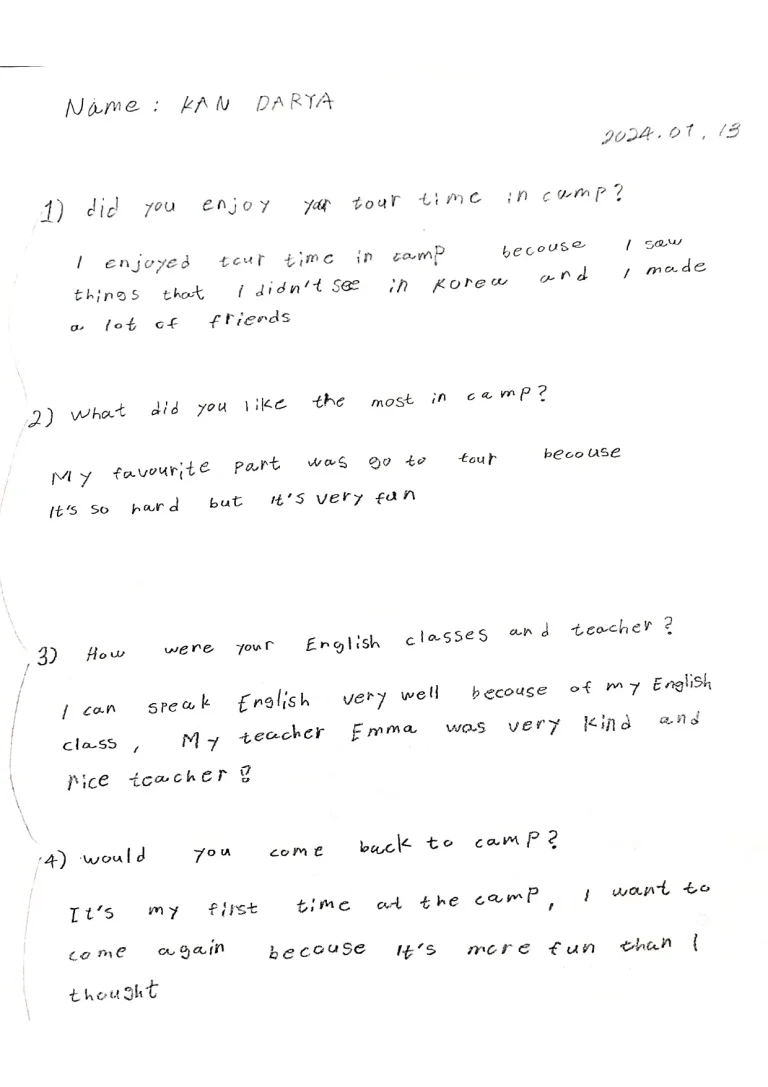Where Will Your School Tour Destinations Be in 2025?
School tour destinations in 2025 are shaping up to be more adventurous, educational, and globally diverse than ever. From walking the ruins of Rome to diving into coral reefs in Cairns, students now have the opportunity to explore the world as their classroom. These tours are not just trips—they’re immersive journeys that ignite curiosity and fuel a lifelong passion for learning.
Why School Tour Destinations Inspire Learning
The best school tour destinations combine culture, history, science, and fun, giving students lessons they can’t learn from textbooks alone. Whether it’s observing real-time evolution in the Galápagos or retracing civil rights movements in Washington, D.C., these tours turn theory into experience, helping students connect deeply with global knowledge and empathy.
Discover the World’s Best School Tour Destinations
We’ve scoured the globe to bring you 50 school tour destinations that shine for school groups in 2025. Organized by region—North America, Europe, Asia, Africa, South America, Oceania, and beyond—each spot offers a mix of education, culture, and fun. Expect historical landmarks, cutting-edge innovation, and natural wonders, all tailored to inspire young minds. Let’s dive into the ultimate guide for planning your next school adventure.
Region: North America
North America’s Top School Tour Destinations
North America’s top school tour destinations in 2025 offer an exciting mix of history, innovation, culture, and natural wonder. From exploring democracy in Washington, D.C. and STEM breakthroughs in Orlando, to tracing revolutions in Boston and uncovering Aztec roots in Mexico City, this region turns textbooks into real-life adventures. Students can walk through centuries of change, dive into science and space, and engage with multicultural communities across vibrant cities and breathtaking landscapes. Whether it’s politics, tech, environment, or the arts—North America delivers lessons that stay with students long after the journey ends.
1. Washington, D.C.: Exploring Power and History
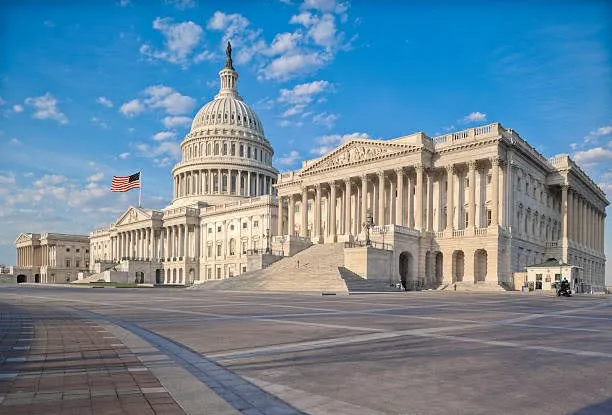
Washington, D.C. ranks among the most powerful school tour destinations in 2025—not just because it’s the U.S. capital, but because it offers students a real-world crash course in history, politics, and civil rights. Every monument tells a story. Every museum opens a world of ideas.
Start the trip at the Capitol Building or the Supreme Court to understand how American democracy works. Guided tours often allow students to sit in on live hearings or debates, making classroom lessons come alive. The Smithsonian museums—like the National Museum of American History or the National Air and Space Museum—are perfect for hands-on learners. Imagine seeing the Wright brothers’ plane or touching moon rock!
Students can visit the Martin Luther King Jr. Memorial, the Vietnam Veterans Memorial, and even take guided civil rights walking tours that connect history with ongoing social change. For creative learners, storytelling workshops and debate simulations turn abstract ideas into action.
In spring, D.C. comes alive with blooming cherry blossoms around the Tidal Basin—an unforgettable scene for photography and journaling. Fall offers equally beautiful foliage with comfortable temperatures.
Food trucks by the National Mall, paddle boating in the Jefferson Memorial Basin, and scavenger hunts around historical landmarks make the experience exciting and engaging for students of all backgrounds.
As far as school tour destinations go, Washington, D.C. combines learning with inspiration. It shows students that history isn’t something they just read about—it’s something they can walk through, question, and even help shape.
Best Time to Visit:
The optimal periods for school tours in Washington, D.C., are spring (March to May) and autumn (September to November). During these seasons, the city experiences mild temperatures and vibrant foliage, enhancing outdoor educational experiences. Springtime also offers the added spectacle of cherry blossoms around the Tidal Basin, coinciding with the National Cherry Blossom Festival.
Must-Visit Places:
- The National Mall: A central hub featuring iconic monuments like the Lincoln Memorial, Washington Monument, and the U.S. Capitol.
- Smithsonian Institution Museums: A collection of 19 museums, including the National Air and Space Museum and the National Museum of American History, offering free admission.
- National Archives Museum: Home to the original Declaration of Independence, U.S. Constitution, and the Bill of Rights.
- Library of Congress: The world’s largest library, providing insights into the nation’s literary and historical heritage.
- Supreme Court: Offers educational tours about the U.S. judicial system.
Activities to Do:
- Guided Tours: Organize visits to the Capitol Building and the White House to understand legislative and executive functions.
- Interactive Exhibits: Engage with hands-on displays at the Smithsonian museums, fostering experiential learning.
- Cultural Performances: Attend shows at the Kennedy Center to experience America’s performing arts scene.
- Historical Walks: Explore neighborhoods like Georgetown, rich in colonial history and architecture.
Local Cuisine to Try:
- Half-Smoke Sausage: A D.C. specialty, best experienced at Ben’s Chili Bowl.
- Mumbo Sauce: A tangy condiment unique to D.C., often paired with fried chicken or wings.
- Ethiopian Cuisine: Reflecting the city’s diverse population, areas like Shaw and Adams Morgan offer authentic Ethiopian dishes.
Educational Highlights:
Washington, D.C., serves as a living classroom, offering students firsthand experiences of U.S. history, government, and culture. From exploring foundational documents at the National Archives to understanding legislative processes at the Capitol, the city provides immersive learning opportunities. Its diverse neighborhoods and cultural institutions further enrich students’ understanding of America’s multifaceted identity.
2. Orlando: Blasting Off with Science and Fun
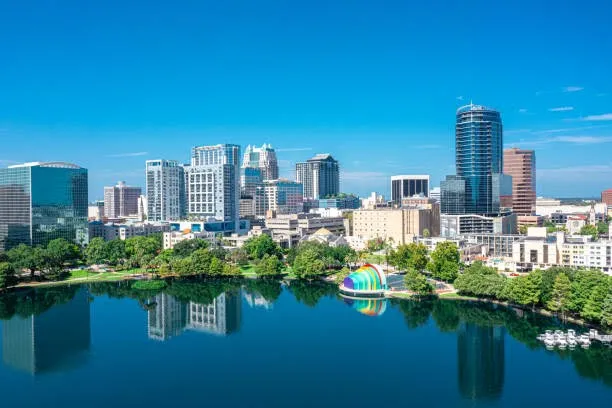
Orlando is one of the most exciting school tour destinations in 2025, especially for science lovers, aspiring astronauts, and future innovators. While it’s known for its world-class theme parks, Orlando offers a unique blend of education and entertainment that makes it perfect for students.
The highlight of any school tour here is the Kennedy Space Center. Students can explore NASA’s space programs, meet real astronauts, and take part in training simulations that feel straight out of a sci-fi film. There’s even the chance to witness an actual rocket launch if timed right—an unforgettable moment for young minds.
But Orlando doesn’t stop at space. Behind-the-scenes tours at Universal Studios and Disney’s EPCOT introduce students to physics, engineering, robotics, and animation. EPCOT’s World Showcase is a bonus for cultural exploration, where students can experience food, traditions, and design from 11 countries in one park.
Educational stops like the Orlando Science Center provide hands-on exhibits covering environmental science, digital tech, biology, and more. Workshops and STEM challenges here keep kids curious and engaged.
In between learning, students can enjoy the rides, water parks, and interactive experiences—making it a trip they’ll talk about all year long. Educators love how easy it is to balance structured learning with fun in Orlando.
As one of the most well-rounded school tour destinations in the U.S., Orlando gives students the thrill of discovery, the excitement of innovation, and a whole galaxy of memories.
Best Time to Visit:
The ideal periods for school tours in Orlando are late winter to early spring (February to April) and early fall (September to early November). These times offer pleasant weather and shorter lines at attractions, enhancing the overall experience.
Must-Visit Places:
- Kennedy Space Center: Located about an hour from Orlando, this center offers immersive exhibits on space exploration, including the Apollo/Saturn V Center and astronaut encounters.
- Orlando Science Center: A hands-on science museum featuring exhibits like NatureWorks, Kinetic Zone, and DinoDigs, promoting interactive learning.
- EPCOT at Walt Disney World: Explore innovations in technology and global cultures through various pavilions and attractions.
Activities to Do:
- Engage in astronaut training simulations and space shuttle experiences at the Kennedy Space Center.
- Participate in STEM workshops and interactive exhibits at the Orlando Science Center.
- Explore international cultures and technological advancements at EPCOT’s World Showcase.
Local Cuisine to Try:
- Cuban Sandwiches: A nod to Florida’s Cuban heritage, featuring roasted pork, ham, Swiss cheese, pickles, and mustard.
- Key Lime Pie: A tangy dessert originating from the Florida Keys, made with key lime juice, egg yolks, and sweetened condensed milk.
- Gator Bites: For the adventurous, try this local delicacy made from alligator meat, often deep-fried and served with dipping sauces.
Educational Highlights:
Orlando offers a unique blend of entertainment and education. Students can delve into the wonders of space at the Kennedy Space Center, explore scientific principles through interactive exhibits at the Orlando Science Center, and gain a global perspective at EPCOT’s international pavilions. These experiences foster curiosity and inspire learning beyond the classroom.
3. Quebec City: Stepping Into French Heritage
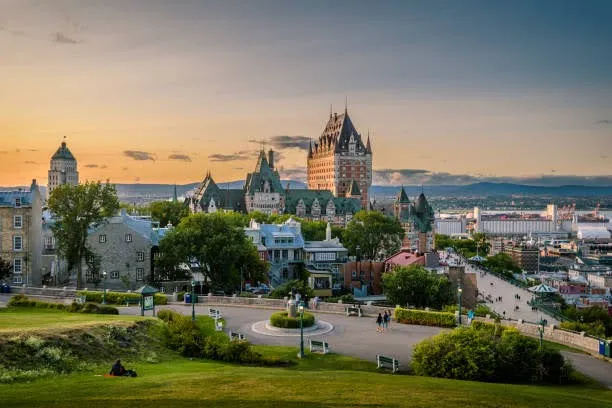
Quebec City is one of the most culturally rich school tour destinations in 2025—especially for schools looking to give students a taste of European charm without leaving North America. It’s a fully French-speaking city where students can immerse themselves in language, culture, and history all at once.
Students will wander through Old Quebec, a UNESCO World Heritage Site filled with cobblestone streets, fortified city walls, and historical buildings like Château Frontenac and Place Royale. It’s like walking through a real-life history book. Bilingual walking tours help students practice their French while learning about the city’s colonial roots.
The Plains of Abraham brings history to life with reenactments and interactive exhibits on the French and British battles that shaped Canada. Meanwhile, at the Musée de la Civilisation, students explore both modern Québecois life and Indigenous heritage through thought-provoking displays.
Beyond history, Quebec City offers culinary adventures—students can try classic dishes like poutine or tour local maple syrup farms to see traditional production in action. Seasonal events like the New France Festival or winter’s Carnaval de Québec provide vibrant, immersive experiences.
This destination is especially great for language immersion programs, cultural studies, and history classes. Teachers can also incorporate journaling exercises, scavenger hunts, or even photo essays into the trip.
As one of the most unique school tour destinations in North America, Quebec City offers a safe, beautiful, and inspiring environment for students to learn, explore, and connect with a different culture—right in their own hemisphere.
Best Time to Visit:
For school tour destinations that offer a blend of historical exploration and cultural festivities, May to October is ideal for Quebec City. During these months, students can experience the city’s vibrant festivals, such as the Quebec City Summer Festival and the New France Festival, which provide immersive insights into the region’s rich heritage. The pleasant weather also enhances walking tours through the city’s historic districts.
Must-Visit Places:
- Old Québec (Vieux-Québec): A UNESCO World Heritage Site, this area offers cobblestone streets, 17th-century architecture, and landmarks like Place Royale and Notre-Dame de Québec Basilica-Cathedral.
- Château Frontenac: One of the most photographed hotels globally, offering guided tours that delve into its storied past and architectural significance.
- Plains of Abraham: A historic battlefield turned urban park, providing educational insights into pivotal moments of Canadian history.
- Montmorency Falls Park: Home to a waterfall taller than Niagara Falls, with activities like cable car rides and a suspension bridge walk.
- Musée de la civilisation: An interactive museum offering exhibits on Quebec’s cultural and social history, ideal for student engagement.
Activities to Do:
- Guided Walking Tours: Explore the historic streets of Old Québec, learning about the city’s colonial past and architectural evolution.
- French Immersion Programs: Participate in language workshops that enhance French language skills through interactive activities.
- Sugar Shack Visits: Experience traditional maple syrup production, including tastings and demonstrations, offering cultural and culinary education.
- Winter Carnival Participation: Engage in North America’s largest winter festival, featuring ice sculptures, parades, and cultural performances.
- Aquarium du Québec: Discover marine life native to the St. Lawrence River and the Arctic, enhancing ecological and environmental studies.
Local Cuisine to Try:
- Poutine: A quintessential Quebec dish consisting of fries topped with cheese curds and gravy.
- Tourtière: A savory meat pie traditionally served during holidays, reflecting Quebec’s culinary heritage.
- Maple Taffy: A sweet treat made by pouring hot maple syrup onto snow, then rolled onto sticks.
- Artisanal Cheeses: Sample local varieties like Le 1608 and La Tomme à Rudy, known for their unique flavors and traditional production methods.
- Cretons: A seasoned pork spread commonly served with toast, offering a taste of traditional Quebecois breakfast fare.
Educational Highlights:
Quebec City stands out among school tour destinations for its rich tapestry of history, language, and culture. Students can immerse themselves in a predominantly French-speaking environment, enhancing language skills and cultural understanding. The city’s well-preserved architecture and historical sites offer tangible connections to North American colonial history. Engaging in local traditions, festivals, and culinary experiences further enriches the educational journey, making Quebec City a multifaceted destination for student learning.
4. Boston: Tracing Revolution and Innovation
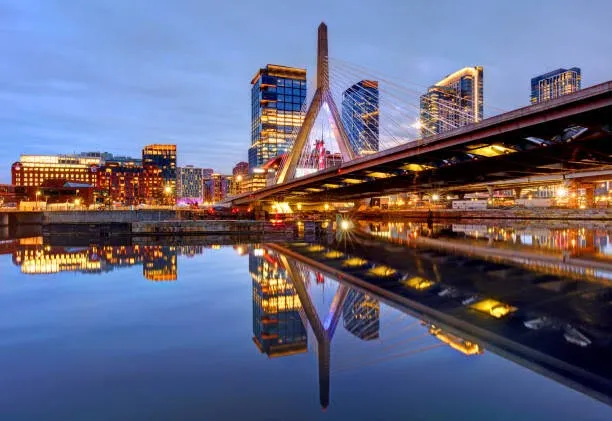
Boston blends revolutionary history with cutting-edge education, making it one of the most inspiring school tour destinations in 2025. Known as the “Cradle of Liberty,” Boston invites students to walk in the footsteps of America’s founding figures—while also looking ahead at what the future holds.
The trip usually begins with the Freedom Trail, a 2.5-mile path connecting 16 historically significant sites. Students can stand where the Boston Tea Party took place, visit Paul Revere’s home, and explore the Old North Church. Each stop sparks discussion on independence, civic duty, and social change.
Beyond history, Boston is home to world-class institutions like Harvard and MIT. Many tours offer access to labs, innovation centers, and student panels, where young visitors can learn about robotics, climate research, and entrepreneurship. This exposure often sparks big dreams.
Art and science lovers will enjoy the Museum of Fine Arts and the Museum of Science, both packed with hands-on exhibits and workshops tailored for school groups. Students can even hop on a boat for whale-watching or explore the Boston Harbor Islands.
Food markets like Quincy Market offer local favorites like lobster rolls and chowder—perfect for cultural immersion through cuisine. The city is compact, walkable, and rich with learning opportunities.
Boston remains a top choice among school tour destinations because it gives students a deeper appreciation for both where we’ve been and where we’re going. It’s the perfect blend of past and possibility.
Best Time to Visit:
For school tour destinations that offer a blend of historical exploration and pleasant weather, late September to mid-October is ideal for Boston. During this period, students can enjoy the city’s vibrant fall foliage and participate in various cultural events, enhancing their educational experience.
Must-Visit Places:
- Freedom Trail: A 2.5-mile red-brick path connecting 16 significant historical sites, including the Old North Church and Paul Revere’s House, offering insights into America’s revolutionary past.
- Boston Tea Party Ships & Museum: An interactive experience where students can reenact the historic protest, deepening their understanding of colonial resistance.
- Museum of Science: Featuring over 700 interactive exhibits, this museum provides hands-on learning in various scientific fields, from physics to biology.
- Fenway Park: As America’s oldest Major League Baseball stadium, a tour here offers lessons in sports history and architectural preservation.
- Harvard University & MIT: Visits to these prestigious institutions can inspire students and provide a glimpse into higher education opportunities.
Activities to Do:
- Guided Historical Tours: Explore Boston’s rich history through walking tours of the Freedom Trail and other historic neighborhoods.
- STEM Workshops: Participate in educational programs at the Museum of Science, enhancing students’ understanding of scientific concepts through interactive exhibits.
- Harbor Cruises: Learn about Boston’s maritime history and enjoy scenic views of the city from the water.
- University Campus Tours: Gain insights into college life and academic programs through guided tours of Harvard and MIT.
Local Cuisine to Try:
- Clam Chowder: A creamy soup rich with clams and potatoes, a staple in Boston’s culinary scene.
- Lobster Roll: Fresh lobster meat served in a toasted bun, often accompanied by a side of fries.
- Boston Baked Beans: Slow-cooked beans sweetened with molasses, reflecting the city’s colonial heritage.
- Cannoli: Crispy pastry shells filled with sweet ricotta cream, especially popular in the North End.
- Fenway Frank: A classic hot dog enjoyed by fans at Fenway Park, symbolizing Boston’s sports culture.
Educational Highlights:
Boston stands out among school tour destinations for its unparalleled blend of historical significance and academic excellence. Students can walk the same paths as revolutionary figures, engage with cutting-edge scientific exhibits, and explore world-renowned universities. The city’s diverse offerings ensure a comprehensive educational experience that caters to various interests and subjects.
5. San Francisco: Bridging Tech and Nature
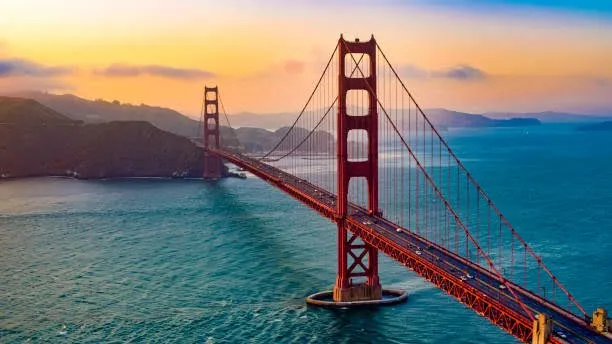
San Francisco is one of the most diverse school tour destinations in 2025, offering students the chance to explore cutting-edge technology, iconic landmarks, and environmental awareness—all in one vibrant city. It’s where golden hills meet innovation hubs, and learning feels like an adventure.
Start the journey with a walk across the Golden Gate Bridge, followed by a ferry ride to Alcatraz Island, where students can explore the famous former prison and reflect on justice and incarceration. For tech-focused groups, nearby Silicon Valley offers curated tours to major companies like Google, Apple, or Meta, exposing students to the future of AI, software, and robotics.
One of the must-visits is the Exploratorium, a museum where science is hands-on and play-based. From light experiments to human perception exhibits, every corner is interactive and unforgettable. Add a visit to the California Academy of Sciences, where students can explore an indoor rainforest, natural history museum, planetarium, and aquarium—all under one roof.
Cultural exploration continues in Chinatown, the oldest in North America, and the Mission District, where students learn about Latinx culture through street art, food, and community stories. Environmental awareness is a strong theme here too, with lessons on urban sustainability and ocean conservation woven into many programs.
San Francisco stands out among school tour destinations by offering a blend of innovation, activism, and natural beauty. It’s an eye-opening experience that shows students how the future and the past coexist—and how they can shape both.
Best Time to Visit:
For school tour destinations focusing on both innovation and natural beauty, September to November is ideal. During these months, San Francisco experiences its warmest weather, providing clear skies and comfortable temperatures for outdoor educational activities. This period also avoids the peak tourist season, allowing for a more immersive experience at various attractions.
Must-Visit Places:
- Golden Gate Bridge: An iconic symbol of engineering prowess, offering insights into civil engineering and design.
- Exploratorium: A hands-on science museum that encourages interactive learning across various scientific disciplines.
- Alcatraz Island: Provides historical context on the U.S. penal system and offers lessons in social studies and history.
- California Academy of Sciences: Combines an aquarium, planetarium, and natural history museum, making it a multifaceted educational stop.
- Tech Interactive in nearby San Jose: Offers students a deep dive into the world of technology and innovation, aligning with STEM curricula.
Activities to Do:
- Participate in interactive exhibits at the Exploratorium to foster a hands-on understanding of scientific concepts.
- Engage in guided tours of Alcatraz Island to learn about its historical significance and unique ecosystem.
- Explore the diverse marine life at the California Academy of Sciences’ aquarium, enhancing marine biology studies.
- Attend workshops at Tech Interactive to understand the latest in technological advancements and their real-world applications.
- Walk through the city’s various neighborhoods to study urban development and cultural diversity.
Local Cuisine to Try:
- Sourdough Bread: A San Francisco staple, perfect for discussions on fermentation and food science.
- Mission-style Burritos: Reflects the city’s rich cultural tapestry and offers a taste of local culinary innovation.
- Dungeness Crab: Seasonally available, providing a delicious way to discuss marine ecosystems and sustainable fishing practices.
- Ghirardelli Chocolate: Offers insights into the history of chocolate production and its economic impact on the region.
- Dim Sum in Chinatown: Allows students to experience cultural diversity and culinary traditions firsthand.
Educational Highlights:
San Francisco stands out among school tour destinations for its unique blend of technological innovation and natural beauty. Students can explore cutting-edge science and technology at institutions like the Exploratorium and Tech Interactive, while also appreciating the city’s rich history and diverse ecosystems. This combination makes San Francisco a dynamic and multifaceted destination for educational enrichment.
6. Mexico City: Uncovering Aztec and Urban Life
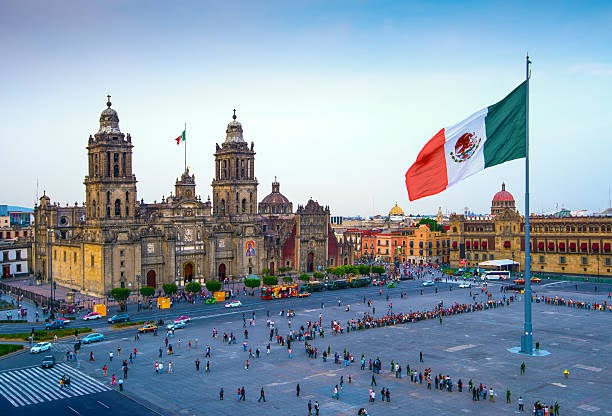
Mexico City is one of the most underrated yet exciting school tour destinations in 2025. It’s a sprawling metropolis where ancient civilizations meet contemporary art, urban culture, and vibrant street life. For students, it’s a chance to understand history, heritage, and modern challenges all at once.
Begin with the ancient ruins of Templo Mayor, right in the city center, where students can learn about the Aztec Empire and how Spanish colonization transformed it. Just an hour away, the Pyramids of Teotihuacán offer a chance to climb the Pyramid of the Sun and imagine what life was like in pre-Columbian times.
The National Museum of Anthropology is a must-visit, offering world-renowned exhibitions on Indigenous history, languages, and crafts. For art lovers, a tour of Frida Kahlo’s Blue House and Diego Rivera’s murals gives students a powerful look at culture, revolution, and expression.
Students can engage in workshops that cover topics like sustainability in mega-cities, local food systems, and climate impact. Neighborhoods like Coyoacán and Roma Norte offer walking tours rich with color, architecture, and food—perfect for sensory learning and observation exercises.
Food is a learning experience here too. From street tacos to traditional dishes like tamales, students explore the cultural importance of cuisine and its connection to heritage and daily life.
As a dynamic school tour destination, Mexico City gives students a deep appreciation of layered histories and thriving cultures, helping them see the world—and themselves—through a wider lens.
Best Time to Visit:
For school tour destinations aiming to explore both historical and cultural facets, November to April is ideal for Mexico City. This period falls within the dry season, offering pleasant weather conducive to outdoor educational activities. Visiting in early November also provides the unique opportunity to experience Día de los Muertos (Day of the Dead) festivities, a vibrant cultural event that offers deep insights into Mexican traditions.
Must-Visit Places:
- Templo Mayor: An archaeological site that was once the main temple of the Aztecs in their capital city, Tenochtitlan.
- National Museum of Anthropology: Home to the Aztec Sun Stone and extensive exhibits on Mexico’s pre-Columbian civilizations.
- Chapultepec Castle: The only royal castle in the Americas, offering panoramic views and rich historical exhibits.
- Frida Kahlo Museum (La Casa Azul): The former residence of the iconic artist, showcasing her life and works.
- Xochimilco: Known for its network of canals and colorful trajineras, reflecting ancient agricultural practices.
Activities to Do:
- Participate in guided tours of the National Museum of Anthropology to delve into Mexico’s rich cultural heritage.
- Engage in a boat ride through Xochimilco’s canals, learning about the ancient chinampa farming system.
- Attend workshops at the Frida Kahlo Museum, exploring her artistic contributions and personal history.
- Explore the historic center, visiting landmarks like the Palacio de Bellas Artes and the Zócalo, to understand colonial and modern influences.
- Visit local markets such as La Ciudadela to experience traditional crafts and interact with artisans.
Local Cuisine to Try:
- Tacos al Pastor: Marinated pork tacos, a staple of Mexico City’s street food scene.
- Chiles en Nogada: A patriotic dish featuring poblano chiles stuffed with picadillo, topped with walnut sauce and pomegranate seeds.
- Tamales: Corn dough filled with meats or cheeses, steamed in corn husks, reflecting pre-Hispanic culinary traditions.
- Pan de Muerto: A sweet bread traditionally baked during Día de los Muertos celebrations.
- Churros with Hot Chocolate: A popular treat, especially from establishments like El Moro, renowned for their churros.
Educational Highlights:
Mexico City stands out among school tour destinations for its unparalleled blend of ancient history and modern urban life. Students can explore the remnants of the Aztec empire at Templo Mayor, gain insights into pre-Columbian cultures at the National Museum of Anthropology, and understand colonial influences through the city’s architecture and museums. The city’s vibrant neighborhoods, such as Coyoacán and Roma, offer immersive experiences into Mexico’s artistic and cultural evolution. These diverse educational opportunities make Mexico City a dynamic and enriching destination for student travelers.
7.Vancouver: Blending Nature and Culture
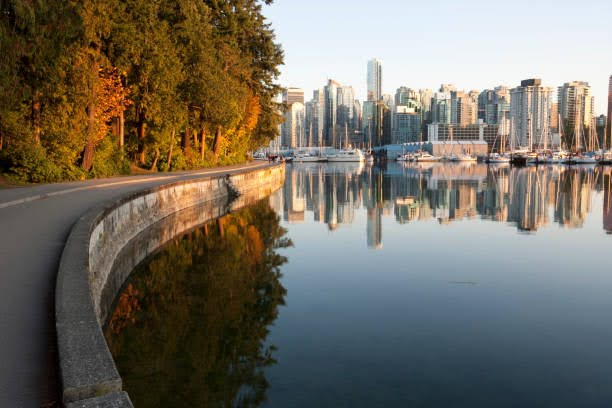
Vancouver is one of the most eco-conscious and visually stunning school tour destinations in 2025. Located between the Pacific Ocean and the Coast Mountains, it offers students a unique chance to explore the intersection of environment, Indigenous heritage, and multiculturalism—all in one trip.
A visit here starts at Stanley Park, a massive urban forest with totem poles and eco-guided walks through centuries-old cedar trees. Students can learn about local ecosystems, marine biodiversity, and environmental sustainability in real time. Nearby, the Vancouver Aquarium hosts marine science programs where students study conservation and wildlife rehabilitation.
At the Museum of Anthropology at the University of British Columbia, students get a powerful introduction to First Nations culture, with access to one of the world’s largest collections of Indigenous art and artifacts. Tours are interactive, sparking discussions about colonialism, reconciliation, and identity.
Vancouver also leads by example when it comes to green infrastructure. Students can tour LEED-certified buildings, ride the SkyTrain (North America’s longest fully automated light metro), and explore how the city is planning for a sustainable future.
Cap off the experience at the Capilano Suspension Bridge Park, where students challenge themselves physically and mentally while learning about rainforest ecology. Local street food tours and Chinatown history walks round out the cultural mix.
Among all North American school tour destinations, Vancouver stands out for its deep respect for nature, its multicultural vibe, and its ability to teach students how cities can live in harmony with the planet.
Best Time to Visit:
For school tour destinations that offer a blend of cultural immersion and natural beauty, spring (March to May) and autumn (September to November) are ideal times to visit Kyoto. During these seasons, students can witness the breathtaking cherry blossoms and vibrant fall foliage, enhancing their appreciation of Japan’s seasonal aesthetics. These periods also coincide with various traditional festivals, providing deeper insights into Japanese culture.
Must-Visit Places:
- Kiyomizu-dera Temple: An iconic wooden temple offering panoramic views of Kyoto, exemplifying traditional Japanese architecture.
- Fushimi Inari-taisha Shrine: Famous for its thousands of vermilion torii gates, providing a unique hiking experience through sacred trails.
- Arashiyama Bamboo Grove: A serene bamboo forest that offers a tranquil setting for reflection and photography.
- Nijo Castle: A UNESCO World Heritage Site showcasing the lifestyle of the Edo period shogunate.
- Gion District: Kyoto’s famous geisha district, where students can observe traditional teahouses and possibly spot a geisha or maiko.
Activities to Do:
- Tea Ceremony Participation: Engage in a traditional Japanese tea ceremony, learning about its cultural significance and rituals.
- Kimono Wearing Experience: Dress in traditional attire and stroll through historic districts, enhancing cultural appreciation.
- Calligraphy Workshops: Learn the art of Japanese calligraphy, understanding the importance of kanji characters.
- Zen Meditation Sessions: Participate in meditation practices at local temples, promoting mindfulness and inner peace.
- Samurai and Ninja Experiences: Visit museums or participate in workshops to learn about the history and skills of these iconic figures.
Local Cuisine to Try:
- Kaiseki Ryori: A traditional multi-course meal that emphasizes seasonal ingredients and meticulous presentation.
- Yudofu: A simple yet flavorful tofu dish, often enjoyed in temple settings, reflecting Kyoto’s Buddhist culinary traditions.
- Obanzai: Kyoto-style home cooking, featuring a variety of small, seasonal dishes.
- Matcha Sweets: Delicacies made with finely ground green tea powder, offering a taste of Kyoto’s renowned tea culture.
- Nishin Soba: Buckwheat noodles served with sweetened herring, a local specialty that combines unique flavors.
Educational Highlights:
Kyoto stands out among school tour destinations for its rich tapestry of history, culture, and tradition. Students can delve into Japan’s imperial past, explore the philosophies of Zen Buddhism, and gain hands-on experience with traditional arts. The city’s well-preserved sites and immersive activities provide an unparalleled educational journey into the heart of Japanese heritage.
8. New Orleans: Celebrating Music and Resilience
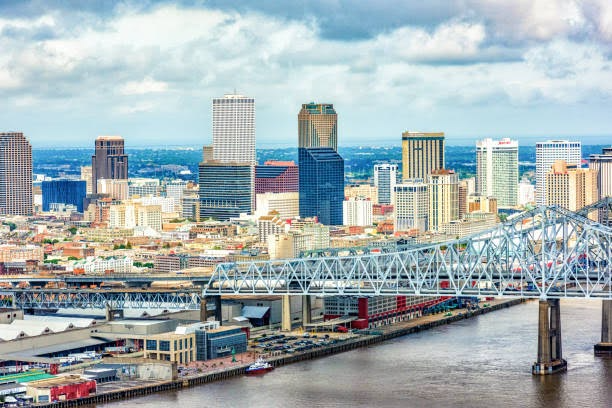
New Orleans is one of the most soulful and emotionally rich school tour destinations in 2025. It’s a city with deep roots, vibrant culture, and a story of resilience that speaks to students across disciplines—from history to music to social justice.
Start the tour in the French Quarter, where cobblestone streets, gas lamps, and historic balconies make students feel like they’ve stepped into another time. Guided walking tours explain the city’s Creole roots, architectural heritage, and influence from French, Spanish, African, and Caribbean cultures.
At Preservation Hall, students can enjoy live jazz performances and even take part in music workshops. The New Orleans Jazz Museum offers interactive exhibits on the evolution of American music, tying sound to historical context in powerful ways.
Field trips to the Whitney Plantation and Lower Ninth Ward Living Museum open students’ eyes to slavery, civil rights, and Hurricane Katrina’s aftermath. These visits often include talks from local activists or survivors—turning the experience into a lesson in empathy and social responsibility.
Of course, no visit is complete without exploring the food culture. Students can try dishes like jambalaya, beignets, and po’boys while learning about the cultural stories behind them. Cooking classes and market tours make food part of the educational journey.
New Orleans is a school tour destination that stirs the mind and the soul. It shows students how culture, history, and community come together to rebuild, celebrate, and inspire.
Best Time to Visit:
For school tour destinations that offer a blend of cultural immersion and pleasant weather, February to May is ideal for New Orleans. This period encompasses vibrant events like Mardi Gras and the Jazz & Heritage Festival, providing students with firsthand experiences of the city’s rich traditions. The mild temperatures during these months also make outdoor educational activities more enjoyable.
Must-Visit Places:
- French Quarter: The historic heart of New Orleans, featuring landmarks like Jackson Square and the St. Louis Cathedral, offering insights into the city’s colonial past.
- National WWII Museum: An expansive museum that provides an in-depth look into the American experience during World War II, with immersive exhibits and artifacts.
- Audubon Nature Institute: Home to the Audubon Zoo, Aquarium, and Insectarium, offering interactive learning experiences about wildlife and conservation.
- Garden District: Known for its well-preserved antebellum mansions and historic cemeteries, providing a glimpse into 19th-century Southern life.
- Mardi Gras World: A behind-the-scenes look at the creation of the city’s famous parade floats, showcasing the artistry and history of Mardi Gras.
Activities to Do:
- Swamp Tours: Explore the unique ecosystems of Louisiana’s bayous, observing wildlife like alligators and learning about wetland conservation.
- Cooking Classes: Participate in hands-on sessions to learn traditional Creole and Cajun recipes, understanding the cultural significance of local cuisine.
- Music Workshops: Engage with local musicians to learn about the origins of jazz and its impact on American music history.
- Historical Walking Tours: Discover the city’s diverse neighborhoods, each with its own unique stories and architectural styles.
Local Cuisine to Try:
- Gumbo: A hearty stew combining meats or seafood with vegetables and spices, reflecting the city’s diverse cultural influences.
- Beignets: Deep-fried pastries dusted with powdered sugar, famously served at Café du Monde.
- Po’ Boys: Traditional sandwiches filled with fried seafood or meats, served on French bread.
- Jambalaya: A flavorful rice dish mixed with meats, seafood, and vegetables, showcasing Creole cooking techniques.
- Pralines: Sweet confections made from sugar, butter, and pecans, offering a taste of Southern hospitality.
Educational Highlights:
New Orleans stands out among school tour destinations for its rich tapestry of history, music, and culture. Students can delve into pivotal moments of American history at the National WWII Museum, explore the roots of jazz in its birthplace, and experience the unique blend of French, Spanish, and African influences that define the city’s identity. The city’s resilience, showcased through its recovery from events like Hurricane Katrina, offers valuable lessons in community strength and adaptation.
Region: Europe
Europe’s Classic School Tour Destinations
Europe’s classic school tour destinations in 2025 are like stepping into a living museum—where ancient ruins, revolutionary ideas, and artistic masterpieces come together in unforgettable ways. From walking through the Parthenon in Athens to analyzing the Berlin Wall’s lasting impact, students experience history where it happened. Cities like Paris, Rome, and Amsterdam offer not just lessons in art and architecture, but deep dives into politics, philosophy, and cultural exchange. With every cathedral climbed, museum explored, and street corner uncovered, Europe transforms education into an immersive, multi-sensory journey that fuels curiosity and global understanding.
9. Berlin: Reflecting on Walls and Renewal
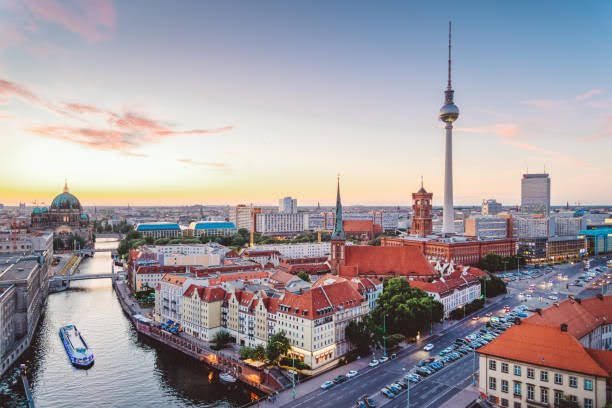
Berlin is one of the most thought-provoking school tour destinations in Europe, offering a deep dive into history, politics, art, and urban transformation. It’s where students witness how a city divided by war became a global symbol of unity and progress.
Start with the Berlin Wall Memorial, where students can trace the Cold War’s history, see original wall segments, and hear powerful personal stories through outdoor exhibits and documentaries. At the Topography of Terror Museum, students learn how Nazi propaganda and secret police shaped Europe’s darkest era—critical lessons for any history, sociology, or ethics class.
Berlin also offers hope and rebirth. Visits to the Reichstag Building and Brandenburg Gate symbolize democracy and peace, while modern art galleries like the East Side Gallery—where the Berlin Wall became a canvas for change—show how creativity thrives in former conflict zones.
Workshops on journalism, freedom of speech, and memorial design give students the chance to reflect and engage. Educators can also arrange visits to Holocaust remembrance centers or dialogue sessions with German students.
Beyond the heavy topics, Berlin has lighter cultural gems like currywurst tastings, graffiti tours, river cruises, and bike explorations of the Tiergarten. It’s a city that balances history with vibrancy.
As one of the most meaningful school tour destinations, Berlin challenges students to think critically, understand complex histories, and appreciate how cities can heal, grow, and inspire the next generation of changemakers.
Best Time to Visit:
For school tour destinations that offer a profound historical experience, May to September is ideal for Berlin. During these months, students can explore the city’s rich history under pleasant weather conditions, enhancing their educational journey.
Must-Visit Places:
- Berlin Wall Memorial: An essential site for understanding the Cold War era, featuring preserved sections of the wall and informative exhibits.
- Reichstag Building: Home to the German parliament, offering insights into the country’s political evolution and architectural grandeur.
- Checkpoint Charlie Museum: Dedicated to the history of the Berlin Wall and the stories of those who attempted to cross it.
- Topography of Terror: An outdoor and indoor museum documenting the atrocities of the Nazi regime.
- Jewish Museum Berlin: Showcasing Jewish-German history through innovative architecture and exhibitions.
Activities to Do:
- Guided Historical Tours: Explore Berlin’s significant landmarks with expert guides, providing context to the city’s complex past.
- Museum Island Visits: Discover a collection of world-renowned museums, including the Pergamon Museum and Altes Museum.
- Cultural Workshops: Engage in activities that delve into Berlin’s art, music, and culinary scenes.
- Interactive Exhibits: Participate in hands-on experiences at science centers and technology museums.
- Language Immersion: Enhance German language skills through local interactions and educational programs.
Local Cuisine to Try:
- Currywurst: A popular fast food dish consisting of steamed, then fried pork sausage seasoned with curry ketchup.
- Berliner Pfannkuchen: A traditional German doughnut filled with jam, commonly enjoyed during festivities.
- Sauerbraten: A pot roast, usually of beef, marinated before slow-cooking, often served with red cabbage and dumplings.
- Pretzels (Brezeln): Soft, chewy baked bread products, often sprinkled with coarse salt.
- Apfelstrudel: A dessert featuring thin layers of dough filled with spiced apples and raisins.
Educational Highlights:
Berlin stands out among school tour destinations for its profound historical significance and dynamic cultural landscape. Students can gain insights into pivotal events of the 20th century, from the rise and fall of the Berlin Wall to the city’s role in global politics. The city’s commitment to remembrance and education ensures a comprehensive learning experience that resonates with students long after their visit.
10. Athens: Walking Through Ancient Greece
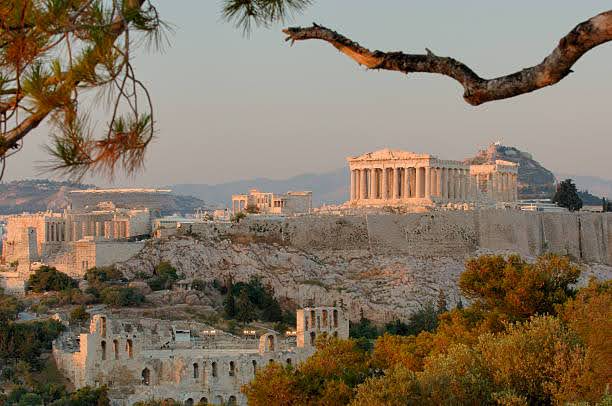
Athens is a dream school tour destination for students fascinated by mythology, democracy, architecture, and the roots of Western civilization. With ruins rising above modern cafes and historical tales hiding behind every marble column, it turns textbooks into real-life adventures.
Begin at the Acropolis, where students can climb to the Parthenon, stand where Socrates once debated, and look out over a city that blends ancient brilliance with modern buzz. The Acropolis Museum adds context, displaying original artifacts and telling stories through interactive digital installations.
At Agora, students learn how Greek democracy functioned, explore temples dedicated to gods like Hephaestus, and gain insight into civic life in classical times. Guided mythology tours bring legends to life—stories of Athena, Zeus, and the Olympians are tied to actual landmarks across the city.
Workshops in Greek pottery, traditional dance, or even mock-philosophy debates help students embody ancient practices. Educators can also take groups to Pnyx Hill, where public speech was born, for student-led discussions under the Athenian sun.
Local tavernas offer a taste of Greek cuisine—gyros, moussaka, and honey-soaked desserts—making culture deliciously tangible. Evening strolls through the Plaka district introduce students to local artisans and musical street performances.
Among school tour destinations in Europe, Athens is a must. It offers unforgettable context for literature, politics, philosophy, and art—all while giving students a chance to walk where legends once lived.
Best Time to Visit:
For school tour destinations that offer a blend of historical exploration and favorable weather, April to June and September to October are ideal for Athens. During these months, students can enjoy mild temperatures while delving into the city’s rich ancient history.
Must-Visit Places:
- Acropolis of Athens: Home to the Parthenon, this ancient citadel offers insights into classical architecture and Greek mythology.
- Acropolis Museum: A modern museum housing artifacts from the Acropolis, providing context to the ancient ruins.
- Ancient Agora: Once the heart of ancient Athens, this site offers a glimpse into the city’s political and social life.
- National Archaeological Museum: Greece’s largest archaeological museum, showcasing artifacts from various periods of Greek history.
- Plaka District: A historic neighborhood with neoclassical architecture, offering cultural immersion and local crafts.
Activities to Do:
- Guided Historical Tours: Explore ancient sites with expert guides, enhancing understanding of Greek history and mythology.
- Greek Language Workshops: Participate in basic language sessions to connect more deeply with the local culture.
- Traditional Greek Cooking Classes: Learn to prepare classic dishes like moussaka and tzatziki, fostering cultural appreciation.
- Folk Dance Lessons: Engage in traditional Greek dances, promoting physical activity and cultural understanding.
- Visits to Local Markets: Experience the vibrant atmosphere of Athenian markets, learning about local produce and commerce.
Local Cuisine to Try:
- Moussaka: A layered dish with eggplant, minced meat, and béchamel sauce, reflecting Greek culinary traditions.
- Souvlaki: Grilled meat skewers served with pita bread and sauces, a popular street food.
- Spanakopita: A savory pie filled with spinach and feta cheese, showcasing Greek pastry techniques.
- Baklava: A sweet dessert made of layers of filo pastry, nuts, and honey syrup.
- Greek Yogurt with Honey: A simple yet delicious treat, often enjoyed as a dessert or snack.
Educational Highlights:
Athens stands out among school tour destinations for its unparalleled access to ancient history and culture. Students can explore well-preserved ruins, engage with interactive museum exhibits, and participate in cultural workshops, providing a comprehensive educational experience that brings ancient Greece to life.
11. Copenhagen: Living Green in Scandinavia
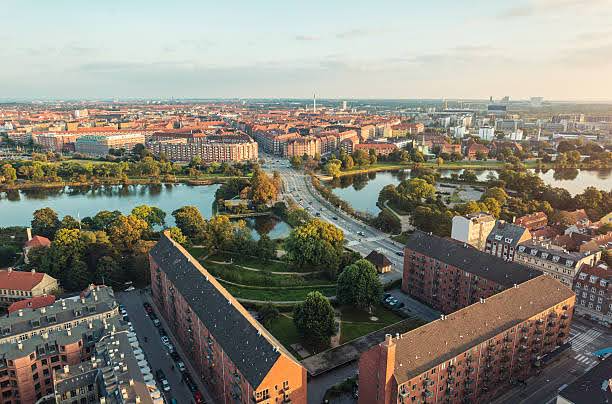
Copenhagen is one of the most forward-thinking school tour destinations in 2025—perfect for students curious about sustainability, smart city design, and Scandinavian culture. It’s a city where bikes outnumber cars, wind power fuels daily life, and innovation meets hygge (comfort and coziness).
Students can begin with a tour of CopenHill, a power plant with a ski slope on its roof. It’s a living example of how waste-to-energy technology works—and how cities can creatively reimagine their infrastructure. Workshops here explore clean energy, circular economies, and environmental policy in action.
At the Copenhagen Science City, students can visit university research hubs and innovation labs focused on green tech, biotech, and future cities. Many offer youth-oriented programs or speaker sessions with local scientists and sustainability leaders.
Culture is just as important. At Tivoli Gardens, students enjoy Denmark’s rich tradition of storytelling and design. Tours through Nyhavn and the National Museum of Denmark explore the country’s Viking history, maritime heritage, and literary giants like Hans Christian Andersen.
Bicycle tours are popular and educational—they highlight how the city is structured for eco-friendly living. Students often stay in green-certified hostels and enjoy local cuisine centered around organic and plant-based dishes.
Copenhagen stands out among school tour destinations by showing students that a modern city can be both cutting-edge and environmentally responsible. It’s an inspiring example of what tomorrow’s world can look like—if we build it right.
Best Time to Visit:
For school tour destinations that emphasize sustainability and cultural richness, May to September is ideal for Copenhagen. During these months, students can enjoy mild weather, extended daylight hours, and participate in various educational and cultural activities throughout the city.
Must-Visit Places:
- Tivoli Gardens: Established in 1843, this historic amusement park offers a blend of entertainment, history, and architecture, making it a unique learning environment.
- National Museum of Denmark: Provides comprehensive exhibits on Danish history and culture, including Viking artifacts and medieval collections.
- The Blue Planet Aquarium: Northern Europe’s largest aquarium, offering insights into marine biodiversity and conservation efforts.
- Copenhagen Botanical Garden: Home to over 13,000 plant species, this garden serves as a living laboratory for botany and ecology studies.
- Kronborg Castle: Located in Helsingør, this UNESCO World Heritage Site is famously known as Elsinore in Shakespeare’s “Hamlet,” offering lessons in literature and history.
Activities to Do:
- Bicycle Tours: Explore the city’s extensive cycling infrastructure while learning about urban planning and sustainable transportation.
- Canal Cruises: Discover Copenhagen’s architecture and history from its waterways, providing a unique perspective on the city’s development.
- Workshops on Renewable Energy: Participate in educational sessions focused on Denmark’s advancements in wind energy and sustainable practices.
- Visits to Christiania: Engage in discussions about alternative societies and urban development in this self-proclaimed autonomous neighborhood.
- Culinary Classes: Learn to prepare traditional Danish dishes, fostering cultural appreciation and understanding.
Local Cuisine to Try:
- Smørrebrød: Open-faced sandwiches featuring a variety of toppings, reflecting Denmark’s culinary traditions.
- Frikadeller: Danish meatballs made from pork or beef, often served with potatoes and gravy.
- Rødgrød med Fløde: A traditional dessert made from red berries and served with cream.
- Stegt Flæsk: Crispy pork belly served with parsley sauce and potatoes, considered Denmark’s national dish.
- Wienerbrød: Known internationally as Danish pastries, these sweet treats are a staple in Danish bakeries.
Educational Highlights:
Copenhagen stands out among school tour destinations for its commitment to sustainability, innovative urban design, and rich cultural heritage. Students can gain firsthand experience in green living practices, explore historical sites, and engage in interactive learning experiences that align with various academic disciplines. The city’s emphasis on education and environmental consciousness makes it an exemplary destination for comprehensive student tours.
12. Rome: Reliving Gladiators and Art
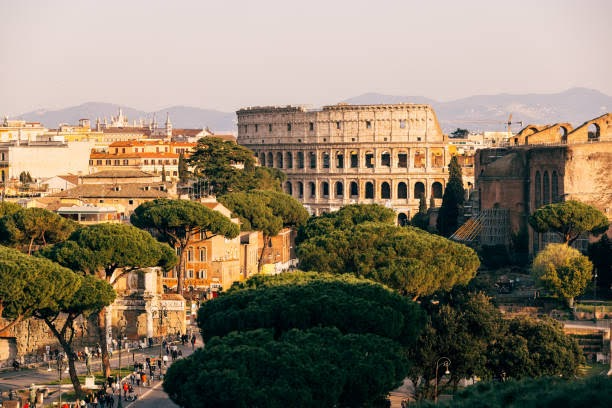
Rome is one of the most legendary school tour destinations in the world—where every street corner has a story, and ancient marvels stand beside modern espresso bars. For students, it’s an unforgettable exploration of architecture, politics, art, and religion.
The journey often starts at the Colosseum, where students learn about gladiator culture, Roman engineering, and entertainment in ancient society. Guided tours include tales of strategy, brutality, and civic identity. Just nearby, the Roman Forum reveals the ruins of old government buildings, temples, and basilicas—shedding light on politics, religion, and urban planning.
Art and spirituality come alive in Vatican City. Students can marvel at Michelangelo’s Sistine Chapel, visit St. Peter’s Basilica, and explore the vast Vatican Museums. These sites introduce discussions on Renaissance art, faith, and world influence.
Workshops on Roman mosaics, Latin roots in modern languages, or even Italian cooking can be added for a hands-on experience. Evening walking tours through Piazza Navona, Trevi Fountain, and Pantheon let students experience how history seamlessly blends with daily life.
Gelato breaks, pizza-making classes, and visits to local trattorias also introduce students to Italy’s rich food culture. Educational scavenger hunts are a great way to keep groups engaged as they explore centuries of history.
Among school tour destinations, Rome captures the imagination like no other. It transforms classical education into lived experience, offering a timeless journey where students feel the heartbeat of ancient civilization with every step.
Best Time to Visit:
For school tour destinations that offer a blend of historical exploration and comfortable weather, April to June and September to October are ideal for Rome. During these months, students can enjoy mild temperatures and fewer crowds, enhancing their learning experience.
Must-Visit Places:
- Colosseum and Roman Forum: Explore the grandeur of ancient Roman architecture and gain insights into the empire’s history.
- Vatican Museums and Sistine Chapel: Discover Renaissance art and Michelangelo’s masterpieces, offering a deep dive into art history.
- Pantheon: An architectural marvel that has stood the test of time, showcasing Roman engineering prowess.
- Trevi Fountain: Experience Baroque art and learn about the cultural significance of this iconic landmark.
- Capitoline Museums: The oldest public museums in the world, housing a vast collection of art and artifacts.
Activities to Do:
- Guided Historical Tours: Engage with expert guides to delve into Rome’s rich past, enhancing historical understanding.
- Art Workshops: Participate in sessions that explore classical art techniques, fostering creativity and appreciation for art history.
- Cultural Immersion Programs: Experience daily Roman life through language classes and local interactions, promoting cultural awareness.
- Culinary Classes: Learn to prepare traditional Roman dishes, combining gastronomy with cultural education.
- Visits to Local Markets: Explore markets like Campo de’ Fiori to understand local commerce and daily life.
Local Cuisine to Try:
- Cacio e Pepe: A simple yet flavorful pasta dish made with Pecorino Romano cheese and black pepper.
- Carbonara: A rich pasta dish featuring eggs, cheese, pancetta, and pepper, showcasing Roman culinary tradition.
- Carciofi alla Giudia: Deep-fried artichokes, a staple of Roman Jewish cuisine.
- Supplì: Fried rice balls filled with mozzarella, offering a taste of Roman street food.
- Maritozzo: A sweet bun filled with whipped cream, perfect for a traditional Roman breakfast.
Educational Highlights:
Rome stands out among school tour destinations for its unparalleled historical and cultural offerings. Students can walk through ancient ruins, admire Renaissance art, and immerse themselves in a city that has shaped Western civilization. The diverse educational opportunities in Rome provide a comprehensive learning experience that combines history, art, culture, and gastronomy.
13. Paris: Mastering Art and History
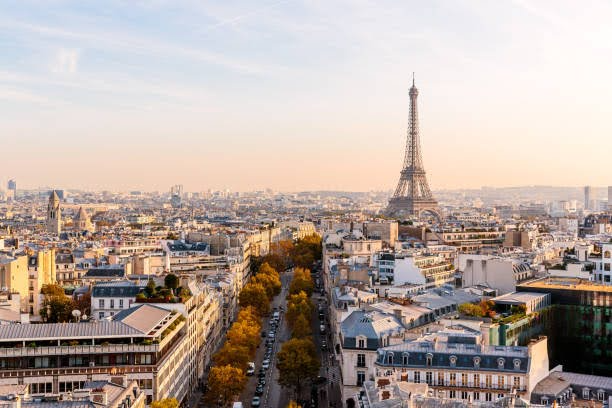
Paris is more than just romance—it’s one of the most iconic school tour destinations in 2025 for students interested in art, revolution, architecture, and the heart of European culture. It’s a city that has inspired generations of thinkers, creators, and changemakers.
Begin the adventure at the Louvre Museum, home to the Mona Lisa and thousands of masterpieces from around the world. Guided student tours break down complex artistic movements and bring ancient civilizations to life through sculpture, painting, and design. Art and history classes find a living canvas here.
Students can walk the Champs-Élysées, visit Notre-Dame Cathedral, and learn about Gothic architecture and Paris’s turbulent past—from the French Revolution to the rise of Napoleon. A trip to the Palace of Versailles offers a glimpse into royal extravagance and the political tensions that sparked major change.
For literary and cultural connections, a stroll through Montmartre and a visit to Shakespeare and Company inspire discussions on creative freedom. Students studying French language can engage in cultural exchanges or immersive café conversations.
Workshops on impressionist painting, French cuisine, or the history of fashion give students a hands-on Parisian experience. Don’t forget the educational Seine River cruise, offering panoramic views of historic bridges and monuments.
As a school tour destination, Paris offers a beautiful blend of knowledge, creativity, and elegance. It leaves students with a sense of wonder—and the feeling that they’ve walked through the pages of European history.
Best Time to Visit:
For school tour destinations that offer a rich tapestry of art and history, April to June and September to October are ideal for Paris. These periods provide pleasant weather and fewer crowds, enhancing the educational experience.
Must-Visit Places:
- Eiffel Tower: An iconic symbol of Paris, offering panoramic views and insights into architectural innovation.
- Louvre Museum: Home to masterpieces like the Mona Lisa, providing a comprehensive journey through art history.
- Musée d’Orsay: Showcasing Impressionist and Post-Impressionist works in a former railway station.
- Palace of Versailles: A testament to royal grandeur, offering lessons in French history and architecture.
- Cité des Sciences et de l’Industrie: Europe’s largest science museum, promoting scientific curiosity among students.
Activities to Do:
- Seine River Cruise: Explore Paris’s landmarks from the water, enhancing understanding of the city’s geography.
- Perfume Creation Workshop: Engage in a sensory experience by crafting personalized fragrances.
- French Cooking Class: Learn to prepare traditional dishes, fostering cultural appreciation through cuisine.
- Art Workshops: Participate in sessions that delve into various artistic techniques and styles.
- Historical Walking Tours: Discover the stories behind Paris’s neighborhoods and monuments.
Local Cuisine to Try:
- Croissants: Flaky pastries that are a staple of French breakfasts.
- Baguettes: Traditional French bread, perfect for sandwiches or as an accompaniment.
- Crêpes: Thin pancakes that can be sweet or savory, offering a versatile culinary experience.
- Ratatouille: A vegetable medley that showcases the flavors of Provence.
- Macarons: Colorful almond meringue cookies with various fillings, a delightful treat.
Educational Highlights:
Paris stands out among school tour destinations for its unparalleled blend of art, history, and culture. Students can immerse themselves in world-renowned museums, explore historic landmarks, and engage in interactive workshops that bring learning to life. The city’s rich heritage offers endless opportunities for educational enrichment.
14. Edinburgh: Discovering Castles and Science
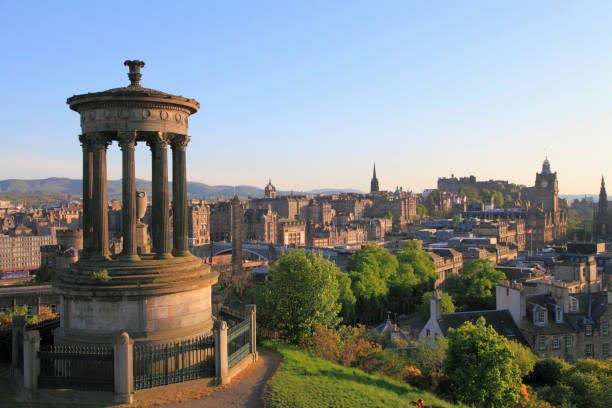
Edinburgh is one of the most atmospheric and intellectually vibrant school tour destinations in Europe. Set against a backdrop of gothic spires and medieval castles, this Scottish capital offers students a mix of ancient tradition, literary brilliance, and scientific innovation.
The journey begins at Edinburgh Castle, where students can explore royal chambers, military museums, and learn about battles that shaped British and Scottish history. The Royal Mile leads them through cobbled streets filled with tales of philosophers, poets, and inventors.
At The National Museum of Scotland, students dive into everything from dinosaurs to steam engines to space exploration. Interactive exhibits make science exciting, while galleries on Scottish innovation highlight inventors like Alexander Graham Bell and James Watt.
For literature lovers, this is the land of J.K. Rowling, Robert Louis Stevenson, and Sir Walter Scott. Harry Potter-themed walking tours are a favorite, as are visits to the Writers’ Museum, where students trace the evolution of storytelling through Scottish voices.
Natural beauty is never far in Edinburgh. A hike up Arthur’s Seat offers geological insight and panoramic views, perfect for geography or biology classes. The Camera Obscura and World of Illusions combines physics, perception, and optical tricks—turning science into a playful adventure.
As one of the most balanced school tour destinations, Edinburgh gives students an education that spans castles to chemistry, myths to modern tech. It’s thoughtful, immersive, and utterly unforgettable.
Best Time to Visit:
For school tour destinations that offer a blend of historical exploration and scientific discovery, May to September is ideal for Edinburgh. During these months, students can enjoy mild weather while exploring the city’s rich heritage and engaging in interactive learning experiences.
Must-Visit Places:
- Edinburgh Castle: A historic fortress offering panoramic views and insights into Scotland’s royal history.
- Dynamic Earth: An interactive science center that takes students on a journey through Earth’s history and geology.
- National Museum of Scotland: A diverse collection ranging from natural history to technology, providing a comprehensive educational experience.
- Camera Obscura and World of Illusions: A fun-filled attraction combining optical illusions with historical exhibits.
- Royal Botanic Garden Edinburgh: A vast collection of plant species, perfect for biology and environmental studies.
Activities to Do:
- Guided Historical Tours: Explore the Royal Mile and Old Town, delving into Edinburgh’s rich past.
- Science Workshops: Participate in hands-on activities at Dynamic Earth, enhancing understanding of Earth sciences.
- Art and Culture Sessions: Engage in creative workshops inspired by Scottish traditions and folklore.
- Nature Walks: Discover local flora and fauna in the Royal Botanic Garden, promoting environmental awareness.
- Interactive Exhibits: Experience immersive displays at the National Museum of Scotland, covering various academic subjects.
Local Cuisine to Try:
- Haggis: A traditional Scottish dish made from sheep’s offal, oats, and spices.
- Scottish Tablet: A sweet confection made from sugar, condensed milk, and butter.
- Cullen Skink: A hearty soup made with smoked haddock, potatoes, and onions.
- Shortbread: A classic buttery biscuit, perfect for a sweet treat.
- Cranachan: A dessert combining whipped cream, whisky, honey, and raspberries.
Educational Highlights:
Edinburgh stands out among school tour destinations for its unique combination of historical landmarks and scientific institutions. Students can immerse themselves in the city’s medieval past while engaging with cutting-edge scientific exhibits. This blend of old and new provides a dynamic learning environment that caters to a wide range of academic interests.
15. Barcelona: Admiring Gaudí and the Coast
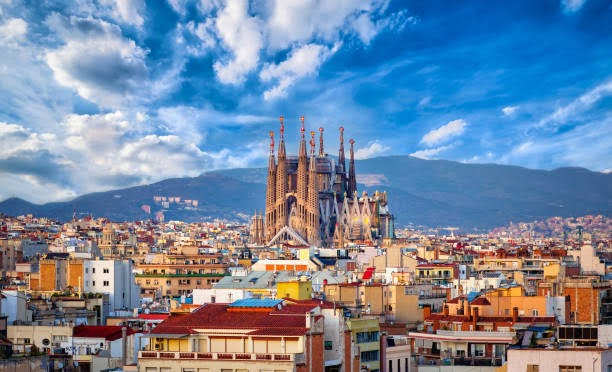
Barcelona is one of the most visually striking school tour destinations in 2025. It’s where creativity meets coastline, and students can explore centuries of Catalan culture, art, and architecture—all under the Mediterranean sun.
The heart of any school trip here begins with Antoni Gaudí. Students will be mesmerized by the whimsical beauty of the Sagrada Família, a still-unfinished basilica that blends gothic tradition with surreal design. At Park Güell, they can study how natural forms inspired architecture, while learning about urban planning and innovation.
Barcelona’s Gothic Quarter invites history students to walk through medieval alleys, Roman ruins, and political landmarks like Plaça Sant Jaume. Art lovers can explore the Picasso Museum, which showcases the artist’s early works and his connection to the city.
A trip to La Boqueria Market turns into a sensory lesson in local flavors, Spanish culture, and food heritage. Students can also join cooking classes to learn how to make paella or tapas, combining cultural learning with hands-on fun.
Beach walks along the Barceloneta district give a relaxed end to each day, and sports fans can visit Camp Nou, the home stadium of FC Barcelona, for an inspiring look at teamwork and legacy.
Barcelona shines among school tour destinations because it fuses artistic flair, Mediterranean charm, and rich history—all in a way that excites young minds and encourages creative thinking.
Best Time to Visit:
For school tour destinations that combine architectural marvels and coastal charm, April to June and September to October are ideal for Barcelona. During these months, students can enjoy pleasant weather while exploring the city’s rich cultural heritage and beautiful beaches.
Must-Visit Places:
- La Sagrada Família: Antoni Gaudí’s masterpiece basilica, renowned for its intricate facades and towering spires, offering insights into modernist architecture.
- Park Güell: A vibrant public park adorned with colorful mosaics and whimsical structures, reflecting Gaudí’s unique artistic vision.
- Casa Batlló and Casa Milà (La Pedrera): Iconic buildings showcasing Gaudí’s innovative designs and contributions to Catalan modernism.
- Barceloneta Beach: A popular seaside destination where students can relax and experience the Mediterranean coastal environment.
- Gothic Quarter (Barri Gòtic): A historic neighborhood with narrow medieval streets, offering a glimpse into Barcelona’s past.
Activities to Do:
- Architecture Tours: Explore Gaudí’s masterpieces and other modernist landmarks, enhancing understanding of architectural styles.
- Art Workshops: Participate in creative sessions inspired by local artists, fostering appreciation for Catalan art.
- Cultural Immersion Programs: Engage in activities that introduce students to Spanish traditions, language, and customs.
- Beach Clean-Up Initiatives: Promote environmental awareness through hands-on conservation efforts along the coastline.
- Interactive Museum Visits: Discover exhibits at institutions like the Picasso Museum, offering educational experiences in art history.
Local Cuisine to Try:
- Paella: A traditional rice dish with various ingredients like seafood or vegetables, reflecting Spain’s culinary diversity.
- Tapas: Small plates of assorted dishes, allowing students to sample a variety of local flavors.
- Churros with Chocolate: Fried dough pastries served with rich chocolate sauce, a favorite treat among locals and visitors.
- Escalivada: A Catalan dish of grilled vegetables, showcasing the region’s emphasis on fresh produce.
- Crema Catalana: A creamy dessert similar to crème brûlée, flavored with citrus and cinnamon.
Educational Highlights:
Barcelona stands out among school tour destinations for its fusion of artistic innovation and historical depth. Students can delve into the works of Gaudí, explore medieval neighborhoods, and engage in cultural activities that enrich their global perspective. The city’s dynamic environment offers a multifaceted educational experience that combines creativity, history, and community engagement.
16. Amsterdam: Cycling Through History and Ideas
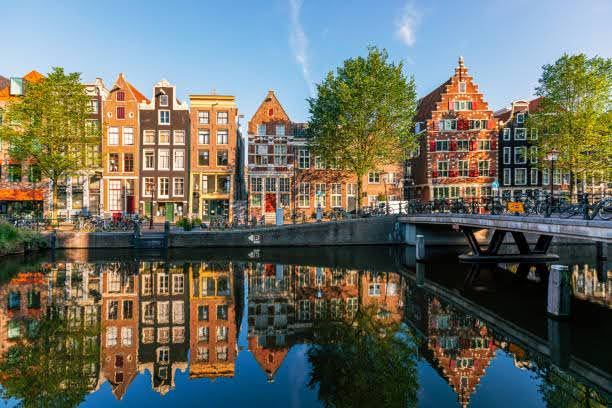
Amsterdam is a city of canals, bicycles, and bold ideas—making it one of the most progressive and thought-provoking school tour destinations in Europe. It’s a place where students can explore social history, science, and global citizenship in an open, engaging environment.
The tour often begins with a visit to the Anne Frank House, where students walk through the secret annex and reflect on the power of courage and the cost of intolerance. It’s a deeply emotional and educational experience that encourages empathy and awareness.
Museums like the Rijksmuseum and Van Gogh Museum introduce students to Dutch masters and post-impressionist art in ways that are visually stunning and deeply personal. The NEMO Science Museum, on the other hand, offers interactive STEM activities in a building shaped like a giant ship—ideal for hands-on learners.
Cycling tours through the city’s safe, bike-friendly streets provide an active way to learn about Dutch urban planning, environmental practices, and community-focused living. Workshops on water management and sustainable design are often included, especially near Amsterdam’s floating neighborhoods.
Students can also visit the Royal Palace, attend educational canal tours, and experience daily life in a place where tolerance, innovation, and art coexist seamlessly. The blend of historical reflection and future-forward thinking is what makes Amsterdam so unique.
Among school tour destinations, Amsterdam stands out for being equal parts educational and eye-opening. It shows students how cities can preserve the past while leading the way into the future.
Best Time to Visit:
For school tour destinations that offer a blend of historical exploration and comfortable weather, April to June and September to October are ideal for Amsterdam. During these months, students can enjoy mild temperatures and fewer crowds, enhancing their learning experience.
Must-Visit Places:
- Rijksmuseum: Home to masterpieces by Rembrandt and Vermeer, offering insights into Dutch art and history.
- Anne Frank House: A poignant museum dedicated to the Jewish wartime diarist, providing a powerful historical lesson.
- NEMO Science Museum: An interactive center where students can engage with hands-on science exhibits.
- Van Gogh Museum: Showcasing the works of the renowned artist, offering a deep dive into post-impressionist art.
- Zaanse Schans: A nearby village featuring historic windmills and traditional Dutch crafts, ideal for cultural immersion.
Activities to Do:
- Guided Bike Tours: Explore the city’s extensive cycling infrastructure while learning about its history and urban planning.
- Canal Cruises: Discover Amsterdam’s architecture and history from its waterways, providing a unique perspective on the city’s development.
- Science Workshops at NEMO: Participate in educational sessions focused on various scientific principles and innovations.
- Art Workshops: Engage in creative activities inspired by Dutch masters, fostering appreciation for art history.
- Visits to Local Markets: Explore markets like Albert Cuyp Market to understand local commerce and daily life.
Local Cuisine to Try:
- Stroopwafels: Thin waffle cookies filled with caramel syrup, a sweet treat beloved by locals.
- Haring: Raw herring served with onions and pickles, offering a taste of traditional Dutch seafood.
- Poffertjes: Small, fluffy pancakes dusted with powdered sugar, a popular street food.
- Bitterballen: Deep-fried meatballs, often enjoyed as a snack in local pubs.
- Dutch Cheese: Varieties like Gouda and Edam, reflecting the country’s rich dairy tradition.
Educational Highlights:
Amsterdam stands out among school tour destinations for its unique combination of historical landmarks and scientific institutions. Students can immerse themselves in the city’s rich past while engaging with cutting-edge scientific exhibits. This blend of old and new provides a dynamic learning environment that caters to a wide range of academic interests.
Region: Asia
Asia’s Essential School Tour Destinations
From futuristic cities and ancient temples to rainforests, coral reefs, and multicultural capitals, Asia’s school tour destinations in 2025 offer a powerful blend of education, inspiration, and adventure. This vast region gives students the chance to explore everything from the robotics labs of Tokyo and smart sustainability in Singapore, to the rich spiritual traditions of Delhi and Kyoto. Whether studying biodiversity in Hanoi, cultural resilience in Malaysia, or technological innovation in Seoul and Dubai, each destination immerses students in real-world learning beyond the classroom.
17. Singapore: Studying a Sustainable City
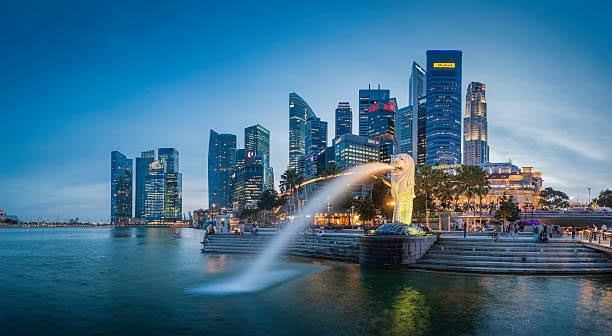
Singapore is one of the most advanced and inspiring school tour destinations in Asia, and 2025 is the perfect time for students to explore this smart, green city. Known for its cutting-edge urban planning and multicultural harmony, Singapore offers students lessons in technology, sustainability, and global citizenship.
A typical school tour kicks off at Gardens by the Bay, where students can explore the iconic Supertree Grove, learn about climate-responsive design, and experience the Cloud Forest’s indoor waterfall and mist-filled conservatory. It’s nature and science perfectly fused together.
Tech and innovation tours often include Singapore’s Smart Nation Gallery, where students dive into AI, urban solutions, and cybersecurity through interactive exhibits. Schools can arrange workshops at Science Centre Singapore, where hands-on activities range from robotics to biotechnology.
Singapore’s diversity shines in neighborhoods like Little India, Chinatown, and Kampong Glam, offering opportunities for students to explore world religions, heritage trails, and cultural exchanges. Food tours through hawker centers like Lau Pa Sat expose students to global flavors and culinary traditions.
A visit to Sentosa Island or Marina Barrage provides balance with fun, while also incorporating water management and sustainability education.
As one of the most forward-thinking school tour destinations, Singapore helps students see how high-tech living can harmonize with nature, culture, and community—all in one clean, safe, and inspiring setting.
Best Time to Visit:
For school tour destinations that offer a blend of educational experiences and favorable weather, February to April and July to September are ideal for Singapore. These periods provide pleasant weather and align with various cultural festivals, enhancing the learning experience.
Must-Visit Places:
- Science Centre Singapore: An interactive hub with over 850 exhibits across eight galleries, promoting scientific and technological education.
- Gardens by the Bay: A showcase of sustainable horticulture and architecture, featuring the iconic Supertree Grove and climate-controlled conservatories.
- National Museum of Singapore: The nation’s oldest museum, offering insights into Singapore’s history and culture through immersive exhibits.
- Singapore Botanic Gardens: A UNESCO World Heritage site, providing a living classroom for biodiversity and conservation studies.
- Marina Barrage: A dam and recreational area that demonstrates water sustainability and flood control measures.
Activities to Do:
- Cultural Cooking Classes: Participate in hands-on sessions to learn about Singapore’s diverse culinary heritage.
- Historical Bike Tours: Explore the city’s rich history and landmarks on guided cycling tours.
- Art Jamming Workshops: Engage in creative expression through guided art sessions, fostering teamwork and creativity.
- Madame Tussauds Educational Visits: Experience interactive exhibits and learn about notable figures in history and culture.
- Learning Journeys: Participate in curated educational tours that align with school curricula, covering topics from sustainability to cultural diversity.
Local Cuisine to Try:
- Hainanese Chicken Rice: A national dish featuring poached chicken and seasoned rice, accompanied by chili sauce and ginger paste.
- Laksa: A spicy noodle soup with a rich coconut milk base, reflecting Peranakan culinary influences.
- Char Kway Teow: Stir-fried flat rice noodles with seafood, Chinese sausage, and bean sprouts, offering a taste of local hawker fare.
- Satay: Grilled skewered meat served with peanut sauce, a popular street food across Southeast Asia.
- Kaya Toast: A traditional breakfast item consisting of toasted bread with kaya (coconut jam) and butter, typically served with soft-boiled eggs and coffee.
Educational Highlights:
Singapore stands out among school tour destinations for its emphasis on sustainability, innovation, and multiculturalism. Students can explore cutting-edge green technologies, delve into the nation’s rich cultural tapestry, and engage in interactive learning experiences that bridge classroom knowledge with real-world applications.
Do You Know About Our Summer Camps in Singapore?
Embassy Camps’ summer programs in Singapore offer an exceptional blend of education and adventure, designed to equip students with essential skills for the future. These camps provide a unique opportunity for students to enhance their English proficiency through immersive experiences with native-speaking instructors. Beyond language skills, participants engage in activities that foster leadership, teamwork, and innovation, including AI applications, business startup projects, and mental arithmetic. Set against the backdrop of Singapore’s rich multicultural heritage and modern infrastructure, the camps include guided excursions to iconic landmarks such as Gardens by the Bay and the ArtScience Museum. With a strong emphasis on safety and personal growth, Embassy Camps ensure a supportive environment where students from over 30 nationalities come together to learn and thrive.
Discover more about these transformative experiences at Embassy Camps – Summer Camps in Singapore.
18.Tokyo: Merging Tech and Temples
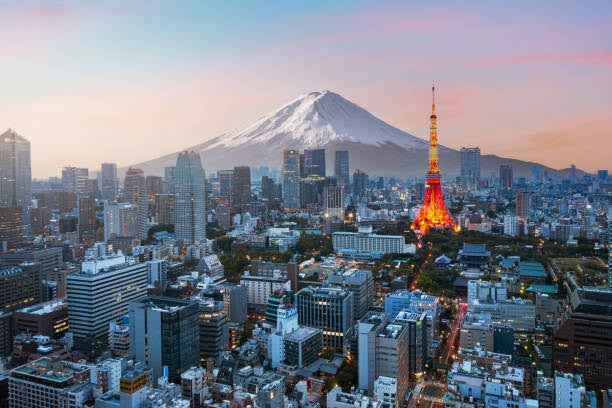
Tokyo is one of the most fascinating school tour destinations in the world—a vibrant mix of futuristic tech, ancient temples, and cultural depth. It offers students a chance to experience two extremes: the rush of innovation and the calm of tradition.
Begin with the ultra-modern side of the city in Odaiba, where students can visit the Miraikan (National Museum of Emerging Science and Innovation) and see exhibits on robotics, space, and artificial intelligence. They can even meet ASIMO, Honda’s humanoid robot, and learn how Japan leads in robotics engineering.
Next, dive into the past at Asakusa, where students explore Sensō-ji Temple, Tokyo’s oldest Buddhist temple. Traditional workshops in calligraphy, origami, or kimono-wearing offer cultural immersion and creative expression.
For pop culture and media studies, districts like Akihabara and Harajuku showcase anime, fashion, and design. Meanwhile, the Edo-Tokyo Museum provides historical context about the city’s transformation over the centuries.
Nature walks in Ueno Park, especially during cherry blossom season, allow for quiet reflection and group journaling. Students can also enjoy a peaceful visit to Meiji Shrine, set in a tranquil forest.
Tokyo’s bullet trains, efficient metro, and clean infrastructure teach valuable lessons in urban design and public transportation. Food tours—complete with sushi-making classes—round out the sensory adventure.
Tokyo is one of those rare school tour destinations that offers something for every interest—tech, history, art, and culture—making it an unforgettable experience for any student ready to see the future and the past come together.
Best Time to Visit:
For school tour destinations that offer a blend of technological innovation and cultural heritage, March to May and September to November are ideal for Tokyo. These periods provide pleasant weather, allowing students to comfortably explore the city’s diverse attractions.
Must-Visit Places:
- Miraikan (National Museum of Emerging Science and Innovation): An interactive museum showcasing Japan’s advancements in science and technology, featuring exhibits like the Geo-Cosmos and humanoid robots.
- teamLab Planets TOKYO: An immersive digital art museum where students can engage with large-scale, interactive installations that blend art, science, and technology.
- Meiji Shrine: A historic Shinto shrine surrounded by a tranquil forest, offering insights into Japan’s spiritual traditions.
- Asakusa and Sensō-ji Temple: Tokyo’s oldest temple, providing a glimpse into the city’s rich cultural and religious history.
- Akihabara: A district renowned for its electronics shops and pop culture, reflecting Tokyo’s modern technological landscape.
Activities to Do:
- Sushi-Making Class: Participate in hands-on sessions to learn the art of sushi preparation, fostering cultural appreciation through cuisine.
- Tea Ceremony Experience: Engage in traditional Japanese tea ceremonies, understanding the cultural significance and rituals involved.
- Calligraphy Workshop: Learn the basics of Japanese calligraphy, enhancing understanding of the language and artistic expression.
- Visit to Robotics Labs: Explore cutting-edge robotics facilities to witness Japan’s technological innovations firsthand.
- Disaster Prevention Learning Center: Participate in simulations of natural disasters to understand emergency preparedness and safety measures.
Local Cuisine to Try:
- Ramen: A flavorful noodle soup with various regional styles, offering a staple of Japanese comfort food.
- Okonomiyaki: A savory pancake filled with diverse ingredients, reflecting Japan’s culinary creativity.
- Tempura: Lightly battered and fried seafood or vegetables, showcasing the delicate flavors of Japanese cuisine.
- Mochi: Chewy rice cakes often filled with sweet red bean paste, a traditional Japanese dessert.
- Takoyaki: Octopus-filled dough balls, a popular street food originating from Osaka but widely enjoyed in Tokyo.
Educational Highlights:
Tokyo stands out among school tour destinations for its seamless integration of ancient traditions and cutting-edge technology. Students can explore historic temples and shrines, engage with interactive science exhibits, and experience the dynamic energy of a city that continually shapes global trends. This multifaceted environment offers a comprehensive educational experience that bridges the past and the future.
19. Xi’an: Meeting the Terracotta Warriors
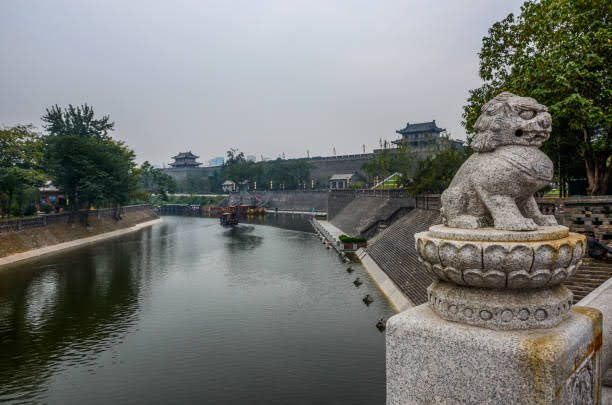
Xi’an is one of the most historically powerful school tour destinations in 2025, especially for students curious about ancient civilizations, archaeology, and dynastic China. As the eastern end of the Silk Road and former capital of 13 dynasties, this city offers stories buried beneath centuries of earth—and now brought to life.
The main highlight is, of course, the Terracotta Army, a massive underground mausoleum of over 8,000 life-sized warriors built to guard Emperor Qin Shi Huang in the afterlife. Students walk through excavation pits, witness ongoing discoveries, and learn about ancient Chinese beliefs, craftsmanship, and military organization.
At the Shaanxi History Museum, students get a curated look into thousands of years of Chinese art, weaponry, pottery, and trade. Historical context here makes classroom lessons on the Silk Road, Confucianism, and the dynasties feel real.
The Ancient City Wall of Xi’an, one of the most complete in the world, is perfect for biking tours. Students can reflect on medieval defense systems while enjoying panoramic city views.
Cultural workshops in paper cutting, Chinese calligraphy, or dumpling-making offer hands-on immersion. Visits to the Great Mosque of Xi’an highlight the city’s Islamic influence and multicultural roots.
Among school tour destinations, Xi’an stands out for its archaeological depth, storytelling potential, and mix of tangible and intangible heritage. It’s a place where students can stand face-to-face with history—and understand how ancient worlds shaped the one they live in today.
Best Time to Visit:
For school tour destinations that offer a blend of historical exploration and comfortable weather, March to May and September to November are ideal for Xi’an. During these months, students can enjoy mild temperatures and fewer crowds, enhancing their learning experience.
Must-Visit Places:
- Terracotta Army Museum: Explore the life-sized terracotta sculptures depicting the armies of Qin Shi Huang, the first Emperor of China. This UNESCO World Heritage Site offers insights into ancient Chinese funerary art and military history.
- Xi’an City Wall: Walk or cycle along one of the oldest and best-preserved city walls in China, providing panoramic views of the city and a glimpse into its ancient defense systems.
- Muslim Quarter: Experience the vibrant culture and cuisine of Xi’an’s Muslim community, with bustling markets and historic mosques.
- Shaanxi History Museum: Discover artifacts spanning thousands of years, offering a comprehensive overview of Chinese history and culture.
- Big Wild Goose Pagoda: Visit this iconic Buddhist pagoda, a symbol of the city’s rich religious heritage and architectural prowess.
Activities to Do:
- Terracotta Warrior Workshops: Engage in hands-on activities where students can create miniature replicas of the warriors, fostering a deeper understanding of ancient craftsmanship.
- Historical Tours: Participate in guided tours of the city’s ancient sites, including the City Wall and pagodas, to learn about Xi’an’s significance in Chinese history.
- Culinary Classes: Learn to prepare traditional dishes like dumplings and noodles, offering a taste of local culinary traditions.
- Cultural Performances: Attend traditional music and dance shows that showcase the region’s rich artistic heritage.
- Calligraphy Lessons: Practice the art of Chinese calligraphy, gaining insight into the language and artistic expression.
Local Cuisine to Try:
- Roujiamo: Often referred to as the Chinese hamburger, this savory meat sandwich is a local favorite.
- Biangbiang Noodles: Thick, hand-pulled noodles served with a variety of toppings, known for their unique name and hearty flavor.
- Yangrou Paomo: A traditional dish consisting of crumbled flatbread soaked in a flavorful mutton soup.
- Dumplings: Sample a variety of dumplings filled with meats, vegetables, or sweet pastes, often enjoyed during festivals.
- Persimmon Cakes: Sweet pastries made from dried persimmons, offering a taste of local dessert traditions.
Educational Highlights:
Xi’an stands out among school tour destinations for its rich tapestry of history, culture, and art. Students can delve into the ancient world through the Terracotta Army, explore the city’s diverse cultural influences in the Muslim Quarter, and engage in interactive learning experiences that bring history to life. The city’s blend of ancient traditions and modern vibrancy provides a comprehensive educational journey that resonates with learners of all ages.
20. Malaysia: Discovering Multicultural Harmony
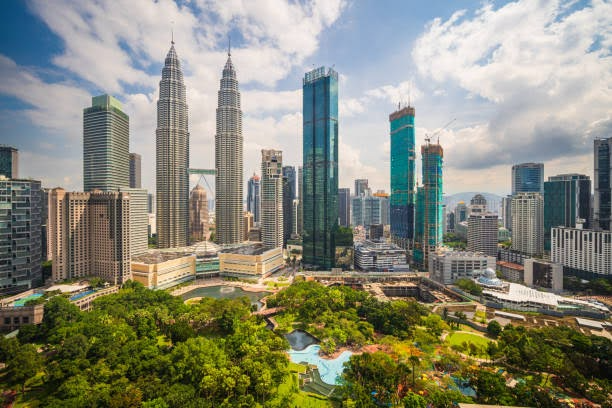
Malaysia is one of the most dynamic school tour destinations in Asia—ideal for students who want to explore nature, culture, and coexistence in a beautifully diverse setting. With Malay, Chinese, Indian, and Indigenous cultures thriving side-by-side, students learn what it truly means to live in a multicultural society.
Start the journey in Kuala Lumpur, where students visit the Petronas Twin Towers, learn about Malaysia’s development, and explore Islamic Arts Museum Malaysia—a stunning venue for understanding architecture, design, and faith. City tours through Chinatown and Little India spark conversations about culture, tradition, and unity.
In Penang, the UNESCO-listed George Town becomes a colorful classroom. Street art walks, heritage site explorations, and local cooking classes help students connect with daily life while learning about colonial history and Southeast Asian trade routes.
For nature lovers, Langkawi and Borneo offer rainforest treks, marine conservation centers, and eco-lodges where students can study biodiversity, sustainability, and Indigenous communities.
Workshops in batik painting, traditional music, or wildlife education are common, and visits to orangutan sanctuaries or mangrove swamps can spark a love for environmental science.
As one of the most inclusive school tour destinations in 2025, Malaysia shows students how different backgrounds can coexist, how nature and technology can balance, and how learning thrives when students step outside the classroom.
Best Time to Visit:
For school tour destinations that offer a blend of cultural exploration and natural beauty, March to May and September to November are ideal for Malaysia. During these months, students can enjoy pleasant weather while engaging in various educational activities across the country.
Must-Visit Places:
- Kuala Lumpur: Explore the iconic Petronas Towers, delve into interactive exhibits at Petrosains, and experience the vibrant Batu Caves.
- Malacca: Discover the rich history of this UNESCO World Heritage site, known for its colonial architecture and cultural heritage.
- Penang: Visit George Town, another UNESCO World Heritage site, renowned for its unique architectural and cultural townscape.
- Borneo: Engage with wildlife conservation efforts at the Sepilok Orangutan Rehabilitation Centre and the Bornean Sun Bear Conservation Centre.
- Cameron Highlands: Experience the cool climate and visit tea plantations, providing insights into agriculture and environmental science.
Activities to Do:
- Cultural Workshops: Participate in batik drawing classes and traditional cooking sessions to immerse in Malaysian culture.
- Environmental Conservation Projects: Take part in community service projects focusing on wildlife conservation and sustainable practices.
- Historical Tours: Explore historical sites in Malacca and Penang, enhancing understanding of Malaysia’s colonial past.
- Nature Excursions: Embark on guided tours in national parks like Taman Negara, promoting environmental awareness and biodiversity studies.
- Language and Cultural Immersion: Engage with local communities to learn about Malaysia’s diverse languages and traditions.
Local Cuisine to Try:
- Nasi Lemak: Considered the national dish, featuring rice cooked in coconut milk, served with various accompaniments.
- Char Kway Teow: A flavorful stir-fried noodle dish, popular in Penang.
- Roti Canai: A type of flatbread served with curry, reflecting Indian culinary influence.
- Laksa: A spicy noodle soup with regional variations, combining Chinese and Malay flavors.
- Satay: Grilled meat skewers served with peanut sauce, a favorite across Southeast Asia.
Educational Highlights:
Malaysia stands out among school tour destinations for its multicultural society, rich history, and commitment to environmental conservation. Students can gain a comprehensive understanding of Southeast Asian cultures, participate in meaningful community service, and explore diverse ecosystems, making Malaysia an enriching educational destination.
Do You know About our Summer camps in Malaysia?
Embassy Camps’ summer programs in Malaysia offer an exceptional blend of education and adventure, designed to equip students with essential skills for the future. These camps provide a unique opportunity for students to enhance their English proficiency through immersive experiences with native-speaking instructors. Beyond language skills, participants engage in activities that foster leadership, teamwork, and innovation, including AI applications, business startup projects, and mental arithmetic. Set against the backdrop of Malaysia’s rich multicultural heritage and modern infrastructure, the camps include guided excursions to iconic landmarks such as the Batu Caves and Petrosains Science Discovery Centre. With a strong emphasis on safety and personal growth, Embassy Camps ensure a supportive environment where students from over 30 nationalities come together to learn and thrive.
Discover more about these transformative experiences at Embassy Camps – Summer Camps in Malaysia.
21. Kyoto: Exploring Samurai and Serenity
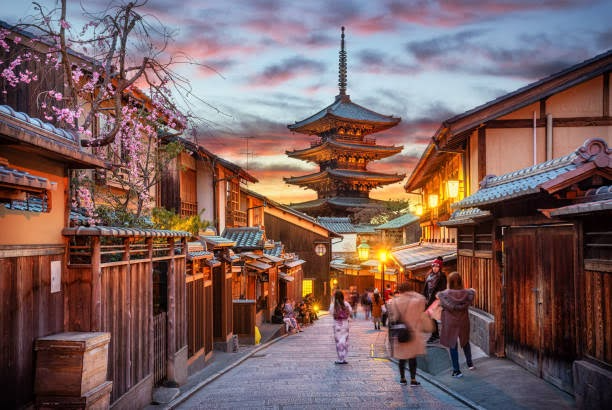
Kyoto is one of the most peaceful and tradition-rich school tour destinations in Asia. Once Japan’s imperial capital, it offers students a rare glimpse into ancient Japanese culture, Zen philosophy, and craftsmanship that’s been preserved for centuries.
The journey begins at Fushimi Inari Shrine, famous for its endless tunnels of bright orange torii gates. As students walk the forested path, they’ll learn about Shinto beliefs, traditional rituals, and the spiritual relationship between people and nature in Japanese culture.
Another must-visit is the Kyoto Samurai & Ninja Museum, where students can dress in period attire, practice sword techniques, and participate in historical reenactments that make feudal Japan come to life. At Kinkaku-ji (The Golden Pavilion) and Ryoan-ji Zen Garden, students reflect on minimalism, architecture, and mindfulness.
Tea ceremony workshops and calligraphy classes give students hands-on access to centuries-old traditions. Kyoto is also a great place for exploring kimono culture, handmade crafts, and regional cuisine like matcha desserts or bento box building.
In the Arashiyama Bamboo Grove, students walk through towering green stalks while learning about biodiversity, environmental design, and sustainability. Paired with a visit to Kyoto’s Imperial Palace or a local temple stay, it becomes an all-senses experience.
Kyoto is perfect for students of history, art, environmental studies, and mindfulness. As a school tour destination, it encourages slower learning, deeper thinking, and a beautiful respect for heritage.
Best Time to Visit:
For school tour destinations that offer a blend of cultural richness and natural beauty, late March to early April is ideal for Kyoto. During this period, students can witness the breathtaking cherry blossoms, participate in traditional festivals, and enjoy comfortable weather conducive to outdoor educational activities.
Must-Visit Places:
- Fushimi Inari Taisha: Famous for its thousands of vermilion torii gates, this shrine offers insights into Shinto traditions and Japanese spirituality.
- Kinkaku-ji (Golden Pavilion): A Zen Buddhist temple adorned in gold leaf, reflecting the harmony between architecture and nature.
- Arashiyama Bamboo Grove: A serene forest of towering bamboo stalks, providing a unique sensory experience and lessons in environmental conservation.
- Kiyomizu-dera Temple: An iconic temple offering panoramic views of Kyoto, exemplifying traditional Japanese architecture.
- Nijo Castle: A UNESCO World Heritage Site showcasing feudal-era architecture and the lifestyle of samurai lords.
Activities to Do:
- Tea Ceremony Participation: Engage in the art of the Japanese tea ceremony, fostering appreciation for cultural rituals and mindfulness.
- Kimono Wearing Experience: Dress in traditional attire and stroll through historic districts, enhancing cultural immersion.
- Samurai and Ninja Workshops: Participate in interactive sessions to learn about Japan’s martial history and discipline.
- Calligraphy Classes: Practice the art of Japanese calligraphy, understanding the aesthetics and philosophy behind each stroke.
- Zen Meditation Sessions: Experience guided meditation in tranquil temple settings, promoting mental well-being and focus.
Local Cuisine to Try:
- Kaiseki Ryori: A traditional multi-course meal emphasizing seasonal ingredients and meticulous presentation.
- Yudofu: A simple yet flavorful tofu dish, often enjoyed in temple settings.
- Matcha Sweets: Delicacies infused with powdered green tea, reflecting Kyoto’s tea culture.
- Nishiki Market Delights: Explore a variety of local snacks and street foods, offering a taste of Kyoto’s culinary diversity.
- Shojin Ryori: Buddhist vegetarian cuisine focusing on balance and harmony, ideal for understanding dietary practices linked to spirituality.
Educational Highlights:
Kyoto stands out among school tour destinations for its profound historical significance, preserved traditions, and emphasis on harmony between humans and nature. Students can delve into Japan’s rich cultural tapestry through hands-on experiences, fostering global awareness and personal growth.
22. Delhi: Experiencing India’s Past and Present
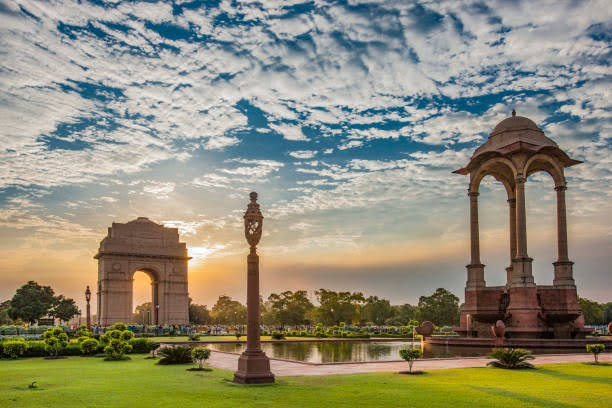
Delhi is one of the most immersive school tour destinations in 2025—where every street tells a story, every monument holds centuries of history, and modern life pulses alongside ancient wonder. As India’s capital, it’s a dynamic introduction to South Asia’s culture, politics, and diversity.
Begin at the Red Fort and Humayun’s Tomb, where students trace Mughal history and Islamic architecture. These landmarks spark lessons in empire, craftsmanship, and art. A visit to India Gate and Rashtrapati Bhavan (Presidential Palace) opens up discussions on independence, democracy, and India’s role in global politics.
Students also experience spiritual diversity firsthand with visits to the Lotus Temple (Baháʼí Faith), Akshardham Temple (Hinduism), and Jama Masjid (Islam)—offering a rich comparison of religious beliefs, architectural styles, and community impact.
Local markets like Chandni Chowk become cultural classrooms where students explore trade, tradition, and street food in real time. Guided food tours offer tastings of parathas, samosas, and sweets—perfect for learning through flavor!
In New Delhi, museums like the National Gallery of Modern Art and Gandhi Smriti give students insight into India’s post-colonial identity, art movements, and nonviolent resistance.
Delhi blends chaos with calm, modernity with memory. Among school tour destinations, it’s ideal for students studying history, religion, politics, urbanization, and culture. It’s raw, real, and deeply transformational.
Best Time to Visit:
For school tour destinations that offer a blend of historical exploration and comfortable weather, October to March is ideal for Delhi. During these months, students can enjoy mild temperatures and participate in various cultural festivals, enhancing their learning experience.
Must-Visit Places:
- Red Fort: A UNESCO World Heritage site, this 17th-century fort offers insights into Mughal architecture and India’s colonial history.
- Qutub Minar: The tallest brick minaret in the world, showcasing Indo-Islamic architecture from the 12th century.
- India Gate: A war memorial honoring Indian soldiers, surrounded by lush lawns ideal for educational discussions.
- National Science Centre: An interactive museum with exhibits on science and technology, promoting hands-on learning.
- Swaminarayan Akshardham: A modern temple complex that combines traditional craftsmanship with exhibitions on Indian culture and values.
Activities to Do:
- Heritage Walks in Old Delhi: Explore the narrow lanes, markets, and historic sites, understanding the city’s rich tapestry.
- Workshops at Triveni Kala Sangam: Participate in art, music, and dance sessions at this renowned cultural center.
- Visits to Hauz Khas Village: Experience the fusion of medieval history with contemporary art and fashion scenes.
- Educational Tours at IIT Delhi: Engage with cutting-edge research and innovation at one of India’s premier engineering institutes.
- Exploration of Bahai Lotus Temple: Understand the principles of unity and peace at this architectural marvel.
Local Cuisine to Try:
- Chole Bhature: Spicy chickpeas served with deep-fried bread, a North Indian favorite.
- Paranthas from Paranthe Wali Gali: Stuffed flatbreads with various fillings, offering a taste of traditional Delhi street food.
- Butter Chicken: A creamy tomato-based curry that’s a staple in Delhi’s Punjabi cuisine.
- Jalebi: Deep-fried sweet spirals soaked in syrup, commonly enjoyed during festivals.
- Gol Gappe (Pani Puri): Crispy hollow balls filled with spicy water, tamarind chutney, and fillings, providing a burst of flavors.
Educational Highlights:
Delhi stands out among school tour destinations for its unique blend of ancient heritage and modern advancements. Students can delve into India’s rich history through its monuments and museums, while also engaging with contemporary innovations in science and technology. This juxtaposition offers a comprehensive learning experience, fostering a deeper understanding of India’s diverse culture and progress.
23. Seoul: Diving Into Tech and Tradition
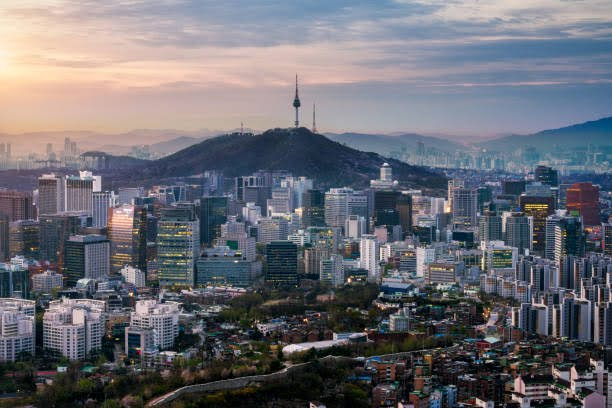
Seoul is one of the most balanced school tour destinations in Asia—where K-pop, palaces, cutting-edge technology, and street food all exist in harmony. Students in 2025 will experience a city that reflects South Korea’s rise as a global cultural and tech powerhouse, while staying rooted in deep traditions.
Start the adventure at Gyeongbokgung Palace, where students can wear hanbok (traditional clothing) and join guided tours through royal grounds while learning about Joseon-era governance and Confucian values. At the nearby National Folk Museum, students dive into Korean heritage—from food rituals to social customs.
To see the modern side, students can visit Samsung Innovation Museum or the Digital Media City, where they’ll explore AI, robotics, and South Korea’s global tech footprint. A stop at N Seoul Tower provides panoramic city views and a lesson in urban design and tourism.
Pop culture fans will love walking through Hongdae and Gangnam, where K-pop, street art, and fashion take center stage. Workshops in Korean cooking, K-beauty science, or taekwondo offer exciting hands-on learning.
Students also explore Korean spirituality with visits to Jogyesa Temple or through temple stay programs that teach mindfulness, meditation, and monastic life.
Seoul offers one of the most dynamic school tour destinations in 2025. It opens young minds to innovation, cultural pride, resilience, and global influence—all in one sleek, welcoming city.
Best Time to Visit:
For school tour destinations that offer a blend of technological innovation and rich cultural heritage, March to May and September to November are ideal for Seoul. These periods provide pleasant weather, allowing students to comfortably explore the city’s diverse attractions and participate in various educational activities.
Must-Visit Places:
- Gyeongbokgung Palace: Experience the grandeur of Korea’s Joseon Dynasty at this iconic palace, where students can learn about royal history and traditional architecture.
- Bukchon Hanok Village: Wander through this preserved neighborhood of traditional Korean houses, offering insights into historical lifestyles and cultural practices.
- N Seoul Tower: Enjoy panoramic views of the city from this landmark, which also serves as a hub for cultural exhibitions and interactive experiences.
- Dongdaemun Design Plaza (DDP): Explore this futuristic architectural marvel that hosts design exhibitions, workshops, and events, blending creativity with innovation.
- National Museum of Korea: Delve into Korea’s rich history through extensive collections of artifacts, artworks, and educational programs.
Activities to Do:
- Taekwondo Workshops: Participate in sessions that teach the fundamentals of Korea’s traditional martial art, promoting discipline and physical fitness.
- K-Pop Dance Classes: Engage in the energetic world of Korean pop culture by learning dance routines from popular K-pop songs.
- Traditional Tea Ceremonies: Experience the art of Korean tea preparation, understanding its cultural significance and etiquette.
- Technology Museum Visits: Explore museums dedicated to Korea’s advancements in technology, offering hands-on exhibits and interactive learning.
- Cultural Craft Workshops: Create traditional Korean crafts, such as hanji (paper) art or mask-making, fostering creativity and cultural appreciation.
Local Cuisine to Try:
- Bibimbap: A harmonious mix of rice, vegetables, meat, and spicy gochujang sauce, offering a balanced and flavorful meal.
- Kimchi: Fermented vegetables, primarily cabbage, seasoned with spices, serving as a staple side dish rich in probiotics.
- Tteokbokki: Spicy stir-fried rice cakes, a popular street food known for its chewy texture and bold flavors.
- Samgyeopsal: Grilled pork belly slices enjoyed with various accompaniments, providing a communal dining experience.
- Hotteok: Sweet pancakes filled with brown sugar, nuts, and cinnamon, commonly found in street markets.
Educational Highlights:
Seoul stands out among school tour destinations for its seamless integration of cutting-edge technology and deep-rooted traditions. Students can immerse themselves in a dynamic learning environment that encompasses historical exploration, cultural activities, and technological innovation. From participating in traditional ceremonies to engaging with modern advancements, Seoul offers a comprehensive educational experience that broadens horizons and fosters global understanding.
24. Bangkok: Navigating Temples and Markets
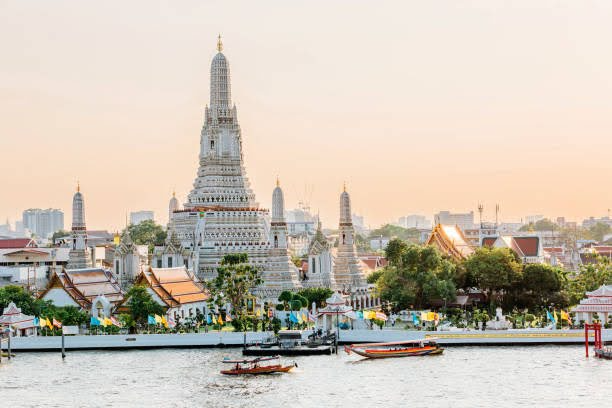
Bangkok is a sensory-rich school tour destination that blends tradition, spirituality, and urban buzz. In 2025, it continues to be a favorite for students looking to explore Southeast Asia’s living heritage—from golden temples to bustling street markets.
Begin at the breathtaking Grand Palace and Wat Phra Kaew (Temple of the Emerald Buddha), where students learn about Thai royal history, Buddhist symbolism, and traditional architecture. At Wat Pho, home of the massive reclining Buddha, students can also study ancient Thai massage and holistic healing.
A river cruise along the Chao Phraya River offers a different view of the city, with historical narration and photo ops of riverside shrines and colonial buildings. In nearby neighborhoods like Chinatown or Banglamphu, students engage with multiculturalism and local storytelling.
Bangkok’s floating markets and mega malls provide rich opportunities to explore economics, marketing, and globalization. Food tours introduce students to Thai cuisine—from pad thai and mango sticky rice to the chemistry behind herbal drinks and curries.
Workshops in Thai cooking, fruit carving, or traditional dance allow for cultural expression. Visits to the Jim Thompson House Museum and local art centers introduce Thai silk, architecture, and design thinking.
Bangkok is also a great launchpad for conversations on urban development, tourism, and sustainability. It’s one of the most vibrant school tour destinations that truly lets students “feel” a place—its rhythms, its rituals, and its remarkable energy.
Best Time to Visit:
For school tour destinations that offer a blend of cultural exploration and comfortable weather, November to February is ideal for Bangkok. During these cooler months, students can explore the city’s rich heritage and vibrant markets without the intense heat.
Must-Visit Places:
- Grand Palace & Wat Phra Kaew: Marvel at the intricate architecture and the revered Emerald Buddha, gaining insights into Thailand’s royal history.
- Wat Arun (Temple of Dawn): Experience the stunning riverside temple known for its towering spires and ornate design.
- Jim Thompson House: Explore the traditional Thai-style house of the American entrepreneur who revitalized the Thai silk industry.
- Chatuchak Weekend Market: Navigate one of the world’s largest markets, offering a practical lesson in commerce and local culture.
- Science Centre for Education: Engage with interactive exhibits, including a planetarium and aquarium, fostering scientific curiosity.
Activities to Do:
- Cultural Workshops: Participate in traditional Thai dance and cooking classes to immerse in local customs.
- Canal Tours: Discover Bangkok’s historic waterways, understanding the city’s development and daily life along the canals.
- Volunteer Programs: Engage in community service, such as assisting at local schools or environmental clean-up projects, promoting social responsibility.
- Visit to Ayutthaya: Take a guided tour to the ancient capital, exploring temple ruins and learning about Thailand’s rich history.
- Interactive Museum Visits: Explore museums like the Children’s Discovery Museum, offering hands-on learning experiences.
Local Cuisine to Try:
- Pad Thai: Savor the world-famous stir-fried noodle dish, a staple of Thai cuisine.
- Som Tum (Papaya Salad): Experience the spicy and tangy flavors of this traditional salad.
- Mango Sticky Rice: Enjoy the sweet combination of ripe mangoes and coconut-infused sticky rice.
- Tom Yum Goong: Taste the hot and sour shrimp soup, known for its bold flavors.
- Thai Iced Tea: Refresh with this sweet and creamy beverage, perfect for cooling down.
Educational Highlights:
Bangkok stands out among school tour destinations for its dynamic blend of ancient traditions and modern advancements. Students can delve into Thailand’s rich history through its temples and palaces, engage with interactive science exhibits, and participate in community service, fostering a well-rounded educational experience.
Region: Middle East & Africa
Africa’s Dynamic School Tour Destinations
—where ancient civilizations, cultural resilience, and groundbreaking innovation come together. From the pyramids of Cairo and the Apartheid lessons of Cape Town to the futuristic skylines of Dubai and the green rebirth of Kigali, this region invites students to experience deep history, global awareness, and environmental leadership firsthand. These destinations spark meaningful conversations about justice, identity, progress, and sustainability—making every step a lesson in empathy, perspective, and possibility.
26. Dubai: Exploring Innovation in the Desert
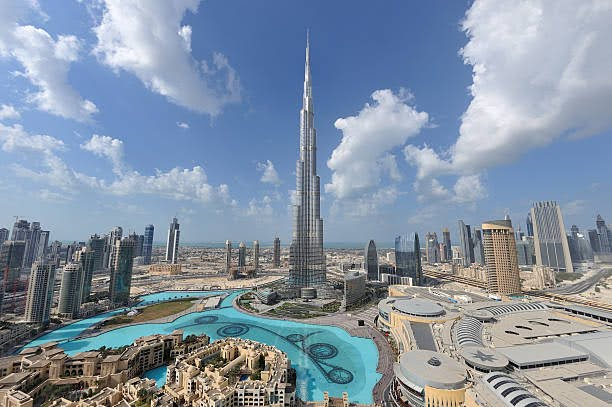
Dubai is one of the most futuristic and luxurious school tour destinations in 2025—perfect for students interested in architecture, engineering, business, sustainability, and global culture. It’s a place where deserts meet skyscrapers, and where the impossible seems routine.
Begin with Burj Khalifa, the tallest building in the world. Students can take guided tours that dive into structural engineering, urban planning, and the future of smart cities. At the base, Dubai Mall hosts immersive experiences like VR Park, the Dubai Aquarium, and edutainment zones like KidZania, where students roleplay careers in a mini-city environment.
For history, Al Fahidi Historical District and Dubai Museum in Al Bastakiya walk students through the city’s humble fishing village roots, Bedouin culture, and pre-oil economy. Visits to the Sheikh Mohammed Centre for Cultural Understanding spark conversations on Islamic customs, Emirati hospitality, and interfaith dialogue.
STEM and sustainability-focused students can explore Dubai Expo Legacy Sites, including Terra – The Sustainability Pavilion, where innovation meets climate action. Educational tours of Masdar City or solar farms can also be arranged.
Round off with desert safaris, dune science workshops, and visits to the Museum of the Future, where students explore AI, space tech, and smart materials through interactive exhibits.
Dubai stands out among school tour destinations as a playground of possibility—where students can learn about tomorrow’s challenges through the lens of today’s boldest ideas.
Best Time to Visit:
For educational tours focusing on innovation and technology, the optimal time to visit Dubai is from November to March. During these months, the weather is cooler and more conducive to outdoor activities and exploration.
Must-Visit Places:
- Museum of the Future: An architectural marvel and a hub for futuristic concepts, this museum offers immersive experiences in space exploration, climate change, and artificial intelligence. Its unique torus-shaped design symbolizes humanity’s continuous pursuit of knowledge.
- Expo City Dubai: Formerly the site of Expo 2020, it now serves as a center for innovation and sustainability. Students can engage in guided tours focusing on technology, architecture, and global cultural exchanges.
- The Sustainable City: A model for eco-friendly living, this community showcases renewable energy solutions, sustainable agriculture, and waste management practices. It’s an excellent case study for environmental science and urban planning.
Activities to Do:
- Innovation Workshops: Participate in hands-on sessions at Expo City Dubai, exploring cutting-edge technologies and sustainable solutions.
- Sustainability Tours: Explore The Sustainable City to learn about green building practices, solar energy utilization, and sustainable farming techniques.
- Academic Engagements: Attend seminars or short courses at institutions within Dubai’s academic hubs to understand the city’s educational landscape and its emphasis on innovation.
Local Cuisine to Try:
- Shawarma: A popular Middle Eastern dish consisting of marinated meat roasted on a spit and served in a wrap.
- Al Harees: A traditional Emirati dish made of wheat and meat, slow-cooked to a porridge-like consistency.
- Luqaimat: Sweet dumplings drizzled with date syrup, often enjoyed during festivals.
Educational Highlights:
Dubai serves as a living laboratory for innovation, sustainability, and futuristic design. Students can witness firsthand the integration of cutting-edge technology in urban development, explore models of sustainable living, and engage with institutions at the forefront of educational advancement. The city’s commitment to shaping a forward-thinking society makes it an unparalleled destination for immersive learning experiences.
Do You Know About Our Summer Camps in Dubai?
Embassy Camps’ summer programs in Dubai offer an unparalleled fusion of education and excitement, set against the backdrop of one of the world’s most dynamic cities. Designed for students aged 9 to 17, these camps focus on mastering English proficiency, leadership development, and cutting-edge technological skills, including artificial intelligence and virtual reality. Participants engage in interactive workshops and hands-on projects that foster creative problem-solving and critical thinking. Beyond the classroom, students explore Dubai’s iconic landmarks, such as the Museum of the Future and the Miracle Garden, providing a rich cultural immersion. With a commitment to safety and personal growth, Embassy Camps create a supportive environment where students from diverse backgrounds come together to learn, innovate, and build lifelong friendships.
Discover more about these transformative experiences at Embassy Camps – Summer Camps in Dubai.
27. Cape Town: Learning From Apartheid to Nature
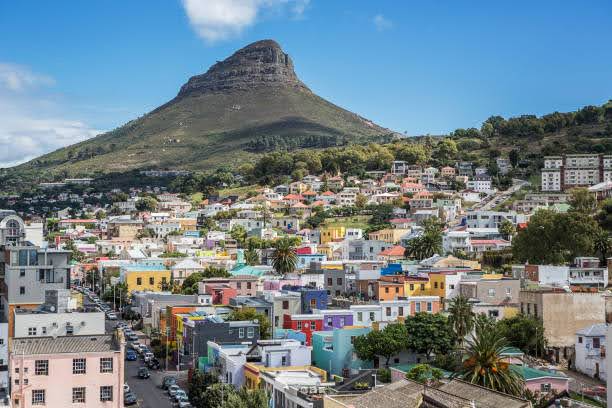
Cape Town is one of the most emotionally powerful and visually stunning school tour destinations in Africa. From its dark history under apartheid to its breathtaking landscapes and biodiversity, this South African city offers a balanced, deeply educational experience.
Start with the city’s complex history at Robben Island, where Nelson Mandela was imprisoned for 18 years. Guided by former inmates, students learn firsthand about racial segregation, human rights, and the strength of nonviolent resistance. The tour leaves a lasting impression, sparking meaningful discussions about justice and leadership.
In the city center, District Six Museum and the Apartheid Museum provide historical context and explore how Cape Town continues to reconcile its past with its future. Interactive exhibits and student-led dialogue sessions are common features.
But Cape Town is also a playground for geography and environmental science. Students can take a cable car up Table Mountain, hike through Cape Point Nature Reserve, and learn about ecosystems unique to the Cape Floral Kingdom. Visits to Boulders Beach (home to African penguins) and Two Oceans Aquarium offer fun, eco-focused learning.
Workshops on conservation, marine biology, or even urban farming projects give students hands-on, purpose-driven education. Visits to local townships and cultural centers also introduce them to everyday life, crafts, and music.
As one of the most impactful school tour destinations, Cape Town teaches resilience, awareness, and the importance of protecting both people and the planet.
Best Time to Visit:
For school tour destinations that offer a blend of historical exploration and natural beauty, March to May and September to November are ideal for Cape Town. These periods provide mild weather, allowing students to comfortably engage in various educational activities.
Must-Visit Places:
- Robben Island: Explore the former prison where Nelson Mandela was incarcerated, gaining insights into South Africa’s struggle for freedom.
- District Six Museum: Understand the impact of apartheid-era forced removals and the resilience of displaced communities.
- Table Mountain: Ascend this iconic landmark to study unique biodiversity and geological formations.
- Cape of Good Hope: Discover the rich maritime history and diverse ecosystems at this southernmost point.
- Kirstenbosch National Botanical Garden: Learn about South Africa’s indigenous flora in one of the world’s most renowned botanical gardens.
Activities to Do:
- Township Tours: Engage with local communities to understand contemporary social dynamics and cultural practices.
- Environmental Conservation Projects: Participate in initiatives like beach clean-ups and wildlife conservation efforts.
- Cultural Workshops: Experience traditional music, dance, and art forms unique to South African heritage.
- Historical Reenactments: Attend performances that depict significant events from South Africa’s past.
- Science Center Visits: Explore interactive exhibits that promote STEM education and innovation.
Local Cuisine to Try:
- Bobotie: A spiced minced meat dish baked with an egg-based topping, reflecting Cape Malay influences.
- Bunny Chow: A hollowed-out loaf filled with curry, originating from the Indian community in Durban.
- Boerewors: Traditional South African sausage, often enjoyed during braais (barbecues).
- Melktert: A sweet milk tart dessert with a cinnamon-dusted crust.
- Rooibos Tea: A caffeine-free herbal tea native to South Africa, known for its health benefits.
Educational Highlights:
Cape Town stands out among school tour destinations for its profound historical significance and ecological diversity. Students can delve into the complexities of apartheid, engage with vibrant cultures, and explore unique natural landscapes. This multifaceted experience fosters critical thinking, empathy, and a deeper appreciation for global history and environmental stewardship.
28. Cairo: Decoding Egypt’s Ancient Wonders
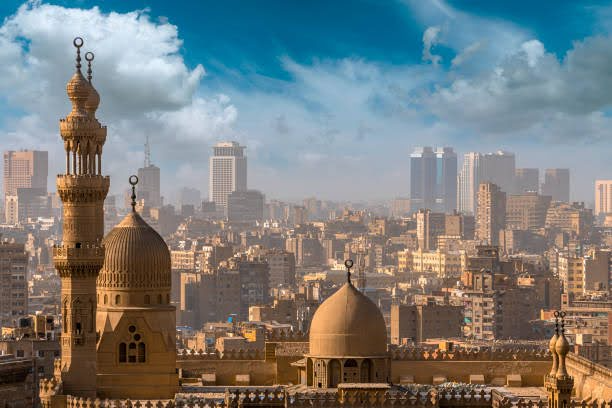
Cairo is one of the most iconic school tour destinations in the world, offering students the chance to literally walk through history. This ancient city, once the heart of the pharaohs, delivers immersive experiences in archaeology, mythology, and civilization studies.
The journey begins with the Giza Pyramids and Great Sphinx—global wonders that continue to amaze young minds. Students can explore tombs, ride camels across the desert, and study ancient engineering techniques that defy modern logic. Educational guides explain how geometry, astronomy, and religion shaped pyramid design.
At the Grand Egyptian Museum, students see artifacts like Tutankhamun’s treasures, mummies, statues, and tools that tell the story of Egypt’s dynasties. Many schools organize scavenger hunts or curated sessions to make these collections more engaging.
Back in the city, visits to Islamic Cairo, Coptic Cairo, and Khan El-Khalili Bazaar expose students to religious diversity, medieval architecture, and bustling marketplaces. It’s a vibrant way to explore how ancient and modern life intertwine.
Workshops in hieroglyphics, papyrus-making, or even Egyptian cooking provide creative, hands-on learning. Nile River cruises with storytelling or stargazing sessions add an unforgettable twist.
Cairo is more than just ancient stones—it’s a city of stories, spirituality, and scholarship. It’s one of the few school tour destinations where students leave feeling like they’ve touched the origins of human civilization.
Best Time to Visit:
For school tour destinations that offer a blend of historical exploration and comfortable weather, October to April is ideal for Cairo. During these months, students can enjoy mild temperatures while delving into the city’s rich tapestry of ancient and modern attractions.
Must-Visit Places:
- Pyramids of Giza & The Sphinx: Explore the only surviving Wonder of the Ancient World and the enigmatic Sphinx, providing insights into ancient Egyptian civilization.
- Grand Egyptian Museum: Discover the world’s largest archaeological museum, housing extensive collections, including the complete treasures of Tutankhamun.
- Egyptian Museum in Tahrir: Delve into over 130,000 artifacts, offering a comprehensive overview of Egypt’s pharaonic history.
- Khan el-Khalili Bazaar: Experience the vibrant atmosphere of Cairo’s historic market, ideal for cultural immersion and understanding local commerce.
- Manial Palace and Museum: Visit this architectural gem showcasing a blend of Islamic styles and royal collections.
Activities to Do:
- Guided Tours of Ancient Sites: Engage in educational tours of Saqqara’s Step Pyramid and Memphis, the ancient capital.
- Interactive Workshops: Participate in hieroglyphics decoding sessions and traditional craft-making, enhancing hands-on learning.
- Cultural Performances: Attend traditional music and dance shows, offering insights into Egypt’s rich cultural heritage.
- Educational Cruises on the Nile: Embark on short cruises to understand the river’s significance in Egypt’s history and daily life.
- Visits to the Children’s Civilization and Creativity Center: Explore interactive exhibits designed to educate children about Egypt’s history and future.
Local Cuisine to Try:
- Koshari: A hearty mix of rice, lentils, pasta, and tomato sauce, topped with crispy onions.
- Ful Medames: Stewed fava beans seasoned with olive oil, garlic, and lemon juice.
- Molokhia: A green leafy soup made from jute leaves, often served with rice or bread.
- Taameya: Egyptian-style falafel made from fava beans, offering a unique twist on the classic dish.
- Basbousa: A sweet semolina cake soaked in syrup, commonly enjoyed as a dessert.
Educational Highlights:
Cairo stands out among school tour destinations for its unparalleled access to ancient monuments and rich cultural experiences. Students can gain a deeper understanding of Egypt’s historical significance through immersive activities and visits to world-renowned sites. The city’s blend of ancient wonders and vibrant modern life offers a comprehensive educational journey that bridges past and present.
29. Marrakech: Immersing in Moroccan Culture
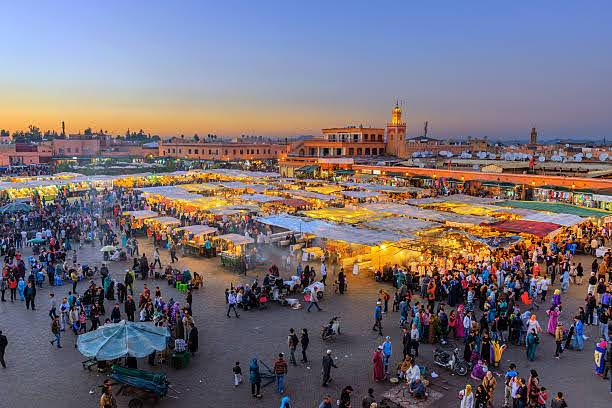
Marrakech is one of the most colorful and culturally immersive school tour destinations in Africa. From its maze-like markets to its centuries-old palaces, this Moroccan city offers students a rich experience of Islamic art, Arabic culture, and North African history.
The journey begins in the Medina, a UNESCO World Heritage Site where students can navigate souks filled with textiles, spices, lanterns, and traditional crafts. Guided walking tours highlight the city’s trading history, artisan economy, and architectural marvels like Bahia Palace and Ben Youssef Madrasa—an ancient Islamic school where geometry, symmetry, and spirituality blend beautifully.
At Jemaa el-Fnaa Square, students witness snake charmers, storytellers, and traditional musicians—providing a real-time understanding of oral tradition and street culture. Visits to the Museum of Marrakech and Dar Si Said Museum deepen learning about Berber culture, Islamic art, and colonial influences.
Workshops in Moroccan tile-making (zellige), calligraphy, or tagine cooking give students a chance to create, taste, and connect with local traditions.
Day trips to the Atlas Mountains or Sahara Desert introduce lessons on geography, nomadic lifestyles, and sustainable tourism. Some schools also partner with local NGOs to explore community development or environmental conservation projects.
Marrakech is one of the most unforgettable school tour destinations for its fusion of history, hands-on activities, and sensory discovery. It’s perfect for students studying world cultures, art, religion, and sustainable living.
Best Time to Visit:
For school tour destinations that offer a blend of cultural exploration and comfortable weather, March to May and September to November are ideal for Marrakech. These periods provide pleasant temperatures, allowing students to fully engage with the city’s rich heritage and vibrant atmosphere.
Must-Visit Places:
- Ben Youssef Madrasa: Explore this historic Islamic college renowned for its stunning Saadian architecture and intricate carvings, offering insights into Morocco’s educational and religious history.
- Jemaa el-Fnaa Square: Experience the heart of Marrakech’s medina, where students can observe traditional performances, local crafts, and the dynamic energy of Moroccan street life.
- Bahia Palace: Visit this 19th-century palace to learn about Moroccan architectural styles and the lifestyles of the elite during that era.
- House of Photography of Marrakesh: Delve into Morocco’s visual history through a vast collection of photographs spanning from the 1870s to the 1950s, providing a unique perspective on the country’s cultural evolution.
- Cyber Parc Arsat Moulay Abdeslam: Discover this historic garden transformed into a modern educational space, featuring interactive exhibits on environmental sustainability and telecommunications.
Activities to Do:
- Moroccan Cooking Classes: Engage in hands-on culinary workshops where students can learn to prepare traditional dishes, enhancing their understanding of Moroccan culture through cuisine.
- Pottery Workshops: Participate in crafting sessions to create traditional Moroccan ceramics, fostering creativity and appreciation for local artisanship.
- Guided Medina Tours: Navigate the labyrinthine streets of Marrakech’s old city with expert guides, uncovering historical sites and learning about the city’s development over centuries.
- Visits to the Museum of African Contemporary Art Al Maaden (MACAAL): Explore contemporary African art exhibitions, encouraging discussions on modern artistic expressions and cultural dialogues.
- Cultural Performances: Attend traditional music and dance shows to experience the rich tapestry of Moroccan performing arts.
Local Cuisine to Try:
- Tagine: Savor this iconic slow-cooked stew, typically made with meat, vegetables, and aromatic spices, reflecting the essence of Moroccan flavors.
- Couscous: Enjoy the national dish of Morocco, consisting of steamed semolina grains served with meat and vegetables.
- Harira: Taste this hearty soup made with tomatoes, lentils, chickpeas, and spices, traditionally consumed during Ramadan.
- Mint Tea: Experience the ritual of Moroccan mint tea, a symbol of hospitality and an integral part of social gatherings.
- Pastilla: Try this sweet and savory pie made with layers of thin pastry, pigeon or chicken, almonds, and cinnamon, showcasing the complexity of Moroccan cuisine.
Educational Highlights:
Marrakech stands out among school tour destinations for its unique blend of historical significance, cultural richness, and artistic vibrancy. Students can immerse themselves in centuries-old traditions, engage with contemporary art scenes, and gain a comprehensive understanding of Morocco’s diverse heritage. This multifaceted experience fosters global awareness, critical thinking, and a deeper appreciation for cultural diversity.
30. Nairobi: Tracking Wildlife and Progress
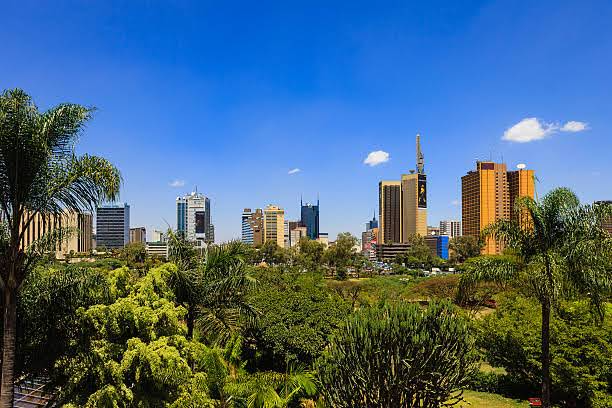
Nairobi is a unique school tour destination where modern African cities meet untamed nature. It’s the only capital in the world with a national park on its doorstep—and a place where students can learn about wildlife conservation, entrepreneurship, and environmental stewardship up close.
Begin with a visit to Nairobi National Park, where students can go on a safari just minutes from the city. Lions, rhinos, giraffes, and zebras roam against a backdrop of skyscrapers—offering an unforgettable lesson in biodiversity and conservation challenges.
At the David Sheldrick Wildlife Trust, students meet orphaned baby elephants and learn about anti-poaching efforts, animal rehabilitation, and the complex relationships between humans and wildlife. Visits to the Giraffe Centre add more hands-on interaction and lessons in ecosystem balance.
In the heart of Nairobi, students can explore Kibera, one of Africa’s largest informal settlements, through guided educational tours that highlight urban development, youth empowerment, and social innovation. Many school groups engage in service learning or project-based activities with local students or non-profits.
Museums like the Nairobi National Museum and Karen Blixen Museum explore Kenya’s colonial past, art, and natural history. Cultural workshops in beadwork, drumming, or Swahili cooking round out the experience.
As one of Africa’s most dynamic school tour destinations, Nairobi teaches resilience, coexistence, and responsibility—giving students insight into both wild landscapes and vibrant urban change.
Best Time to Visit:
For school tour destinations that offer a blend of wildlife exploration and cultural experiences, June to October and January to February are ideal for Nairobi. These dry seasons provide optimal conditions for wildlife viewing and outdoor educational activities.
Must-Visit Places:
- Nairobi National Park: Just 7 km from the city center, this park offers students a unique opportunity to observe diverse wildlife, including endangered black rhinos, lions, and giraffes, against the backdrop of Nairobi’s skyline.
- Giraffe Centre: An educational sanctuary dedicated to the conservation of the endangered Rothschild giraffe, where students can learn about wildlife conservation efforts and even feed the giraffes from a raised platform.
- National Museums of Kenya: Located on Museum Hill, this institution offers extensive exhibits on Kenya’s cultural, historical, and natural heritage, providing a comprehensive learning experience for students.
- Karura Forest: An urban forest reserve that serves as an outdoor classroom for environmental education, featuring biodiversity trails, waterfalls, and historical sites like the Mau Mau caves.
- Bomas of Kenya: A cultural center that showcases traditional Kenyan homesteads and offers performances of music and dance from various ethnic groups, enriching students’ understanding of Kenya’s diverse cultures.
Activities to Do:
- Wildlife Conservation Workshops: Participate in interactive sessions at Nairobi National Park’s Wildlife Conservation Education Centre, focusing on ecological preservation and species protection.
- Cultural Tours: Engage in guided tours of Nairobi’s historical sites and markets, providing insights into the city’s development and cultural dynamics.
- Community Service Projects: Collaborate with local organizations on service-learning projects, fostering social responsibility and community engagement.
- Environmental Education Programs: Explore Karura Forest’s educational trails and participate in activities that promote environmental awareness and conservation.
- Art and Craft Workshops: Attend sessions at local art centers to learn about traditional Kenyan crafts and artistic expressions.
Local Cuisine to Try:
- Nyama Choma: Grilled meat, often goat or beef, served with accompaniments like ugali and kachumbari.
- Ugali: A staple maize flour dish, typically served as a side to meats and vegetables.
- Sukuma Wiki: Collard greens sautéed with onions and tomatoes, commonly served with ugali.
- Chapati: A soft, layered flatbread influenced by Indian cuisine, enjoyed with various stews.
- Mandazi: A slightly sweet, fried dough snack, often enjoyed with tea.
Educational Highlights:
Nairobi stands out among school tour destinations for its unique juxtaposition of urban development and natural ecosystems. Students can delve into wildlife conservation efforts, explore rich cultural traditions, and engage with community initiatives, providing a holistic educational experience that emphasizes both environmental stewardship and social awareness.
31. Accra: Opening Ghana’s Historical Doors
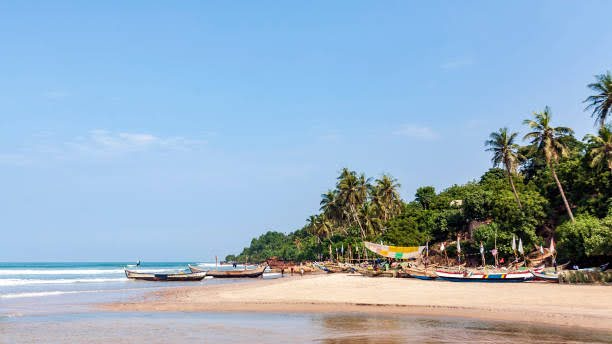
Accra is one of the most meaningful school tour destinations in West Africa. It offers students an eye-opening journey through African history, identity, and resilience—from the legacy of colonialism and slavery to modern Pan-African culture and youth empowerment.
Begin with a visit to the Cape Coast Castle or Elmina Castle, both UNESCO World Heritage Sites where students walk through the haunting “Door of No Return.” Guided by local historians, these tours offer deep discussions on the transatlantic slave trade, resistance movements, and African diaspora history.
Back in Accra, the W.E.B. Du Bois Memorial Centre and Kwame Nkrumah Mausoleum highlight Ghana’s role in African independence and global civil rights. These sites help students connect past struggles to present-day social justice movements.
In the Arts Centre for National Culture, students can engage with local artisans, drummers, and dancers—experiencing Ghanaian culture through storytelling, craft, and rhythm. Workshops in kente weaving, batik printing, or traditional cooking provide hands-on learning.
Visits to Jamestown, one of Accra’s oldest districts, offer a glimpse into colonial-era architecture, street art, and community-led initiatives in urban regeneration. Students can also explore sustainability themes with visits to Eco-Schools or community farms.
Accra’s mix of history, creativity, and youth-driven energy makes it a deeply impactful school tour destination. It encourages global awareness, cultural pride, and conversations about where we come from—and where we’re going.
Best Time to Visit:
For school tour destinations that offer a blend of cultural exploration and favorable weather, October to March is ideal for Accra. During these months, students can comfortably engage in outdoor educational activities and immerse themselves in the city’s rich history.
Must-Visit Places:
- Kwame Nkrumah Memorial Park: Explore the final resting place of Ghana’s first president, featuring a museum that chronicles the nation’s journey to independence.
- W. E. B. Du Bois Memorial Centre: Delve into the life and works of the renowned African-American scholar and Pan-Africanist, housed in his former residence.
- Jamestown: Wander through one of Accra’s oldest districts, known for its colonial architecture, lighthouses, and vibrant community life.
- Museum of Science and Technology: Engage with exhibits that showcase Ghana’s advancements in science and technology, fostering curiosity and innovation.
- Legon Botanical Gardens: Experience a blend of education and recreation in this expansive garden, offering activities like canopy walks and canoeing amidst diverse flora.
Activities to Do:
- Cultural Workshops: Participate in traditional drumming, dancing, and kente weaving sessions to gain hands-on experience of Ghanaian culture.
- Educational Tours: Visit institutions like the University of Ghana to understand the country’s academic landscape and engage with local students.
- Community Service Projects: Collaborate with local organizations on initiatives that promote social responsibility and cultural exchange.
- Historical Site Visits: Explore landmarks such as Independence Square and Makola Market to comprehend Ghana’s socio-political evolution.
- Environmental Conservation Activities: Engage in programs at places like the Kokrobitey Institute, focusing on sustainable design and ecological awareness.
Local Cuisine to Try:
- Waakye: A hearty dish of rice and beans, often served with a variety of sides like boiled eggs, spaghetti, and fried plantains.
- Banku and Tilapia: Fermented corn and cassava dough served with grilled tilapia and spicy pepper sauce.
- Kenkey and Fried Fish: Fermented corn dough balls paired with fried fish and a blend of hot pepper sauce and vegetables.
- Chinchinga: Spicy grilled meat skewers, commonly enjoyed as street food.
- Bofrot: Sweet, deep-fried dough balls, similar to doughnuts, often enjoyed as a snack.
Educational Highlights:
Accra stands out among school tour destinations for its rich tapestry of history, culture, and innovation. Students can delve into Ghana’s journey from colonialism to independence, engage with local communities, and explore the nation’s strides in science and technology. This multifaceted experience fosters global awareness, critical thinking, and a deeper appreciation for cultural diversity.
32. Tunis: Revisiting Carthage and Souks
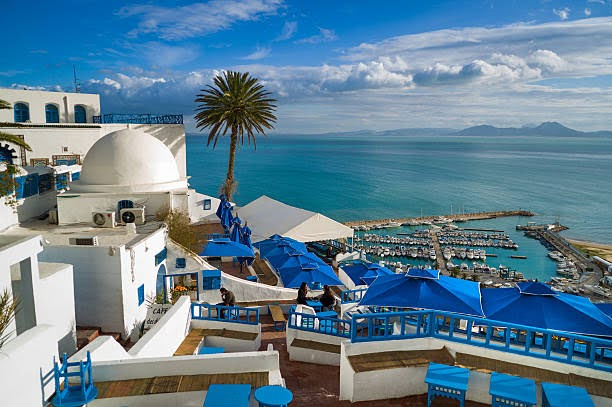
Tunis is one of North Africa’s most underrated yet enriching school tour destinations. From the ruins of ancient Carthage to the winding alleys of the Medina, it offers students a fascinating blend of archaeology, religion, architecture, and trade.
The journey begins at the archaeological site of Carthage, once Rome’s greatest rival. Students can explore Punic ports, Roman villas, and ancient amphitheaters while learning about early Mediterranean empires, naval warfare, and cross-cultural exchange. It’s history on a grand, windswept scale.
At the Bardo Museum, students encounter one of the world’s largest collections of Roman mosaics and artifacts from across Tunisia’s Islamic and Byzantine eras. The museum’s layout encourages curiosity across time periods—from prehistoric tools to Ottoman calligraphy.
In the heart of Tunis Medina, a UNESCO World Heritage Site, students step into a living labyrinth of souks, mosques, madrasas, and artisan workshops. Guided tours teach them about North African trade history, Islamic architecture, and the legacy of the Arab Spring.
Workshops in Arabic calligraphy, Tunisian tile-making (zellige), or couscous cooking offer students creative connections to local culture. Day trips to Sidi Bou Said, with its blue-and-white coastal charm, round out the experience with reflections on aesthetics, tourism, and preservation.
Tunis is a rare school tour destination where students explore both ancient civilizations and modern identity, all while walking streets filled with scent, sound, and stories that connect Africa to the Arab world and beyond.
Best Time to Visit:
For school tour destinations that offer a blend of historical exploration and pleasant weather, March to May and September to November are ideal for Tunis. These periods provide comfortable temperatures, allowing students to fully engage with the city’s rich cultural and historical offerings.
Must-Visit Places:
- Bardo National Museum: Explore one of Africa’s most significant museums, renowned for its extensive collection of Roman mosaics and artifacts from various civilizations that have influenced Tunisia.
- Cité des Sciences (Science City): Engage with interactive exhibits covering astronomy, biology, and technology, offering students a hands-on learning experience.
- Medina of Tunis: Wander through this UNESCO World Heritage site, characterized by its labyrinthine alleys, vibrant souks, and historic architecture.
- Ruins of Carthage: Delve into the remnants of this ancient city, including the Antonine Baths and Byrsa Hill, to understand the historical significance of Carthage in Mediterranean history.
- Sidi Bou Said: Visit this picturesque coastal town known for its blue-and-white architecture and artistic heritage, offering panoramic views of the Mediterranean Sea.
Activities to Do:
- Guided Tours of Historical Sites: Participate in educational tours of Carthage, the Bardo Museum, and the Medina to gain insights into Tunisia’s rich history.
- Cultural Workshops: Engage in traditional crafts, music, and dance workshops to immerse students in Tunisian culture.
- Science Demonstrations at Cité des Sciences: Attend interactive science demonstrations and planetarium shows to enhance understanding of scientific concepts.
- Exploration of Sidi Bou Said: Stroll through the artistic town, visit local galleries, and learn about the influence of Tunisian art and architecture.
- Cooking Classes: Participate in traditional Tunisian cooking classes to learn about local cuisine and culinary traditions.
Local Cuisine to Try:
- Brik: A crispy pastry filled with egg, tuna, and herbs, offering a delightful combination of textures and flavors.
- Couscous: A staple dish made from steamed semolina grains, typically served with meat and vegetables in a flavorful broth.
- Lablabi: A hearty chickpea soup seasoned with garlic, cumin, and harissa, often garnished with pieces of bread.
- Makroudh: A sweet pastry made from semolina dough filled with dates and nuts, then fried and soaked in honey.
- Bambalouni: A Tunisian doughnut, deep-fried and sprinkled with sugar, commonly enjoyed as a street snack.
Educational Highlights:
Tunis stands out among school tour destinations for its rich tapestry of history, culture, and science. Students can explore ancient civilizations through archaeological sites, engage with interactive scientific exhibits, and immerse themselves in the vibrant local culture. This multifaceted experience fosters critical thinking, cultural appreciation, and a deeper understanding of Tunisia’s role in global history.
33. Kigali: Witnessing Rwanda’s Green Rise
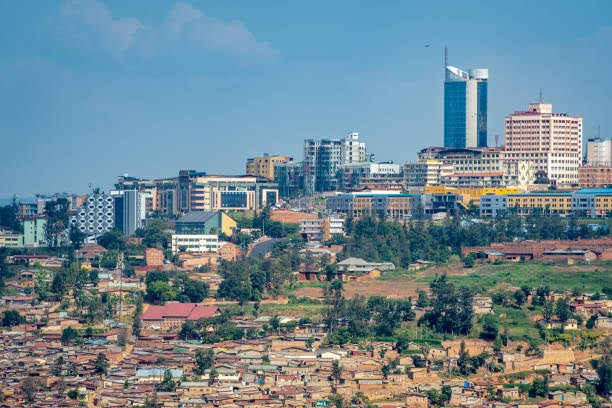
Kigali is one of the most powerful school tour destinations in Africa—not just for its past, but for the remarkable way it has built its future. As Rwanda’s capital, Kigali invites students to explore themes of reconciliation, innovation, and sustainability like nowhere else.
The experience begins at the Kigali Genocide Memorial, where students learn about the 1994 Rwandan Genocide through survivor testimonies, exhibits, and reflection gardens. It’s a difficult but essential stop that sparks deep discussions about peacebuilding, memory, and the importance of empathy in leadership.
But Kigali is not defined by tragedy—it’s a beacon of progress. Students can visit innovation hubs like Kigali Innovation City and meet young entrepreneurs working in tech, finance, and agriculture. Many tours include visits to women-led cooperatives, sustainable farms, or youth centers, giving students insight into community resilience and economic growth.
Environmental education is big here. Kigali is one of the cleanest cities in Africa, thanks to national plastic bans and monthly “Umuganda” community clean-up days. Students often join these efforts as part of cultural exchange and service learning.
Trips to nearby Volcanoes National Park for gorilla conservation lessons or Lake Kivu for ecology fieldwork add a natural science layer to the itinerary.
Kigali is a school tour destination that opens hearts and sharpens minds. It teaches students about justice, recovery, and how even the deepest wounds can lead to a greener, stronger future.
Best Time to Visit:
For school tour destinations that offer a blend of historical exploration and favorable weather, June to September is ideal for Kigali. These months fall within the dry season, providing comfortable conditions for outdoor educational activities and site visits.
Must-Visit Places:
- Kigali Genocide Memorial: A profound site commemorating the 1994 genocide against the Tutsi, serving as both a place of remembrance and education.
- Kandt House Museum: Housed in the former residence of German explorer Richard Kandt, this museum offers insights into Rwanda’s natural history and colonial past.
- Rwanda Art Museum: Located in the former presidential palace, it showcases contemporary Rwandan art and includes remnants of the plane crash that triggered the 1994 genocide.
- Nyandungu Urban Wetland Eco-Tourism Park: A restored wetland area promoting environmental education and sustainable tourism.
- Inema Arts Center: A vibrant hub for contemporary African art, offering workshops and exhibitions by local artists.
Activities to Do:
- Educational Tours: Participate in guided visits to historical sites like the Kigali Genocide Memorial and Kandt House Museum to understand Rwanda’s history and reconciliation efforts.
- Art Workshops: Engage in creative sessions at Inema Arts Center, fostering artistic expression and cultural appreciation.
- Environmental Studies: Explore Nyandungu Eco-Park to learn about wetland ecosystems and conservation practices.
- Cultural Exchanges: Interact with local communities to gain insights into Rwandan traditions and daily life.
- STEM Learning: Visit Kigali Innovation City to observe Rwanda’s advancements in technology and innovation.
Local Cuisine to Try:
- Isombe: A dish made from cassava leaves cooked with groundnuts and served with rice or plantains.
- Brochettes: Grilled meat skewers, commonly found in local eateries.
- Akabenz: Fried pork often enjoyed with local beverages.
- Igisafuriya: A hearty stew combining meat, vegetables, and spices.
- Urwagwa: A traditional banana beer brewed in rural areas.
Educational Highlights:
Kigali stands out among school tour destinations for its commitment to education, sustainability, and reconciliation. Students can delve into Rwanda’s complex history, witness its strides in environmental conservation, and engage with its burgeoning arts scene. This multifaceted experience fosters global awareness, critical thinking, and a deeper appreciation for cultural resilience.
34. Lagos: Pulsing With Culture and Energy
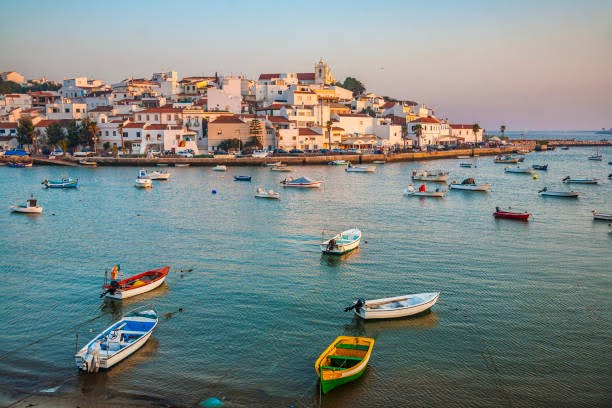
Lagos is one of the most energetic and culturally rich school tour destinations in Africa. As Nigeria’s largest city and a booming creative capital, Lagos introduces students to urban innovation, entrepreneurship, music, fashion, and West African heritage—all in one vibrant package.
The journey kicks off with a tour of Freedom Park, a former colonial prison turned cultural space. Students learn about Nigeria’s independence movement, creative activism, and how art is used for storytelling and protest. Visits to The National Museum offer deeper dives into traditional masks, artifacts, and the history of the Benin and Yoruba kingdoms.
In Lekki, students can walk the Lekki Conservation Centre’s canopy walkway, Africa’s longest, while studying wetlands, biodiversity, and sustainable tourism. The Nike Art Gallery and local textile workshops introduce students to traditional and contemporary art forms, including batik, tie-dye, and sculpture.
Workshops in Afrobeat dance, drumming, or Nollywood filmmaking give students active, joyful entry points into Nigeria’s cultural scene. Culinary experiences include jollof rice tasting sessions, market visits, and even cooking classes with local chefs.
Lagos also showcases entrepreneurship in action. Student groups often tour fintech startups, youth-led ventures, or innovation hubs like CcHub, where real-world business problems are tackled with tech and design thinking.
Among school tour destinations, Lagos stands out for its creative fire and youthful energy. It encourages students to think boldly, express themselves freely, and experience African excellence in full color.
Best Time to Visit:
For school tour destinations that offer a blend of cultural exploration and favorable weather, November to March is ideal for Lagos. These months fall within the dry season, providing comfortable conditions for outdoor educational activities and site visits.
Must-Visit Places:
- Lekki Conservation Centre: Explore Nigeria’s premier urban nature reserve, featuring Africa’s longest canopy walkway, diverse wildlife, and educational exhibits on environmental conservation.
- Nigerian National Museum: Delve into Nigeria’s rich history through extensive collections of traditional art, archaeological artifacts, and ethnographic exhibits.
- John Randle Centre for Yoruba Culture and History: Engage with interactive displays that celebrate Yoruba myths, deities, and customs, offering a vibrant insight into Yoruba heritage.
- Jaekel House: Visit this restored colonial mansion housing photographic archives and artifacts from Nigeria’s railway history, providing a glimpse into the nation’s colonial past.
- Nike Art Gallery: Discover one of West Africa’s largest art galleries, showcasing a vast collection of Nigerian artworks and promoting indigenous artists.
Activities to Do:
- Environmental Education at Lekki Conservation Centre: Participate in guided tours and workshops focusing on biodiversity, conservation, and sustainable practices.
- Historical Exploration at Jaekel House: Engage with Nigeria’s colonial and railway history through curated exhibits and storytelling sessions.
- Cultural Immersion at John Randle Centre: Experience Yoruba culture through interactive exhibits, traditional performances, and culinary tastings.
- Art Workshops at Nike Art Gallery: Participate in hands-on art sessions, learning traditional techniques from local artists.
- Community Engagement in Makoko: Explore the floating village of Makoko to understand urban resilience and community dynamics in a unique setting.
Local Cuisine to Try:
- Jollof Rice: A flavorful one-pot dish made with rice, tomatoes, and spices, often served with fried plantains and grilled meat.
- Suya: Spicy skewered meat coated with a peanut-based spice mix, commonly enjoyed as street food.
- Efo Riro: A rich vegetable soup made with spinach, tomatoes, and assorted meats or fish.
- Moi Moi: Steamed bean pudding made from blended black-eyed peas, peppers, and onions.
- Akara: Deep-fried bean cakes, crispy on the outside and soft inside, often eaten as a snack or breakfast item.
Educational Highlights:
Lagos stands out among school tour destinations for its dynamic blend of history, culture, and innovation. Students can explore ecological conservation at Lekki Conservation Centre, delve into Nigeria’s rich heritage at the National Museum and John Randle Centre, and engage with contemporary art at Nike Art Gallery. These experiences foster critical thinking, cultural appreciation, and a deeper understanding of Nigeria’s role in global history and environmental stewardship.
Region: South America
South America’s Thrilling School Tour Destinations
South America’s school tour destinations in 2025 are bursting with energy, color, and adventure. This region invites students to trek through Incan ruins in Peru, study biodiversity in the Galápagos Islands, explore revolutionary art in Bogotá, and dance through the cultural rhythms of Buenos Aires. From ancient civilizations and colonial legacies to volcanic landscapes and urban innovation, South America offers an unforgettable classroom without walls. Each destination is a living lesson in geography, history, culture, and environmental science—perfect for students ready to think big, explore deeply, and experience learning at its most exciting.
35. Machu Picchu: Climbing Into Inca History

Machu Picchu is not just a destination—it’s a journey into one of the world’s greatest mysteries. As one of the top historical school tour destinations in 2025, this Incan citadel hidden high in the Andes Mountains lets students walk in the footsteps of an ancient civilization that mastered engineering, agriculture, and astronomy.
Most tours start in Cusco, the former Incan capital. Here, students explore Sacsayhuamán Fortress, local markets, and museums that explain the Inca worldview, the Spanish conquest, and how indigenous culture lives on today.
The real magic begins with the journey to Machu Picchu—either by scenic train or multi-day trek through the Sacred Valley. Along the way, students learn about terraced farming, sacred landscapes, and the deep relationship between the Inca and nature.
At Machu Picchu, students explore temples, observatories, and stone structures that align perfectly with the stars. Guides explain how the Incas built this marvel without mortar, how it was rediscovered in 1911, and how it remains a global symbol of resilience and innovation.
Workshops in Quechua language, Andean weaving, or traditional music give added cultural depth. Many groups also visit community projects or sustainable farms to explore modern challenges like tourism impact and cultural preservation.
Machu Picchu is more than just one of the most beautiful school tour destinations—it’s a powerful place of learning. It teaches students about connection—to history, nature, and human ingenuity.
Best Time to Visit:
For school tour destinations that offer a blend of historical exploration and favorable weather, May to October is ideal for visiting Machu Picchu. These months fall within the dry season in the Andes, providing clearer skies and more stable conditions for trekking and outdoor educational activities.
Must-Visit Places:
- Machu Picchu: Explore the iconic Incan citadel, a UNESCO World Heritage site, to study its architectural ingenuity and historical significance.
- Sacred Valley: Visit ancient sites like Ollantaytambo and Pisac to understand Incan urban planning and agricultural practices.
- Cusco: Discover the former capital of the Inca Empire, rich in archaeological sites and colonial architecture.
- Moray and Maras: Investigate the circular terraces of Moray and the salt mines of Maras to learn about Incan agricultural experimentation and resource management.
Activities to Do:
- Guided Tours: Participate in educational tours of Machu Picchu and surrounding archaeological sites to gain insights into Incan civilization.
- Cultural Workshops: Engage in traditional weaving and pottery workshops in local communities to experience indigenous crafts.
- Community Service: Collaborate on service projects in rural villages, such as infrastructure improvements or educational support, fostering social responsibility.
- Language Immersion: Practice Spanish through interactions with local residents and structured language activities.
Local Cuisine to Try:
- Ceviche: A dish of fresh fish marinated in citrus juices, reflecting Peru’s coastal culinary traditions.
- Lomo Saltado: A stir-fry combining beef, vegetables, and spices, showcasing the fusion of Peruvian and Chinese influences.
- Aji de Gallina: A creamy chicken stew made with aji peppers, offering a taste of traditional Peruvian comfort food.
- Chicha Morada: A sweet beverage made from purple corn, flavored with fruits and spices, commonly enjoyed throughout Peru.
Educational Highlights:
Machu Picchu stands out among school tour destinations for its unparalleled insights into Incan engineering, astronomy, and society. Students can immerse themselves in hands-on learning experiences, from archaeological exploration to cultural exchanges, fostering global awareness and a deeper appreciation for ancient civilizations.
36. Galápagos Islands: Observing Evolution Live
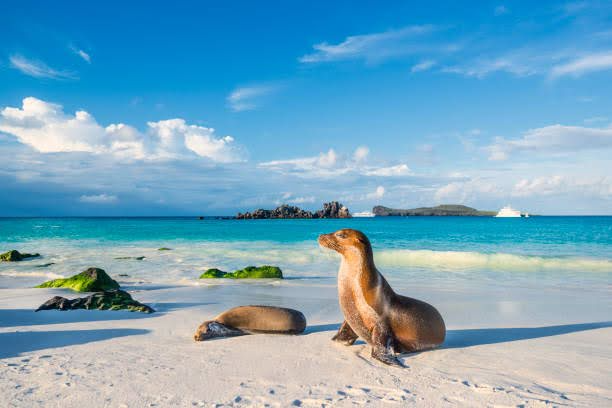
The Galápagos Islands are one of the most scientifically rich school tour destinations on the planet. For students studying biology, environmental science, or evolution, this Ecuadorian archipelago offers a living lab where Darwin’s theories come to life—literally.
Located 600 miles off the coast of Ecuador, the Galápagos are home to wildlife found nowhere else on Earth. Students can snorkel alongside sea lions, hike past giant tortoises, observe blue-footed boobies in mating dances, and see marine iguanas sunbathe on lava rocks—all in their natural, unbothered habitat.
Many school tours partner with local science centers or guides from the Charles Darwin Research Station, where students learn about conservation efforts, invasive species management, and habitat restoration. Guided nature walks focus on adaptation, biodiversity, and how volcanic activity shaped the islands.
Each island offers something different: Santa Cruz for scientific learning, Isabela for volcano hikes, San Cristóbal for pristine beaches and eco-projects. Transportation between them adds to the adventure.
Onboard educational cruises or island-hopping trips include marine biology lessons, group journaling, photography projects, and conservation-focused workshops.
As one of the most impactful school tour destinations for environmental awareness, the Galápagos gives students a once-in-a-lifetime chance to study evolution, witness fragile ecosystems, and understand their role in protecting the planet.
Best Time to Visit:
For school tour destinations that offer a blend of wildlife exploration and favorable weather, December to May is ideal for the Galápagos Islands. These months constitute the warm season, characterized by calm seas, clear skies, and excellent conditions for snorkeling and observing active wildlife.
Must-Visit Places:
- Charles Darwin Research Station (Santa Cruz Island): A center for scientific research and conservation efforts, providing insights into the unique biodiversity of the Galápagos.
- Isabela Island: The largest island in the archipelago, home to diverse wildlife and volcanic landscapes.
- San Cristóbal Island: Known for its rich history and as the location where Darwin first landed in the Galápagos.
- Santa Cruz Highlands: Lush highland areas offering opportunities to observe giant tortoises in their natural habitat.
- Los Gemelos (Twin Craters): Impressive sinkholes formed by collapsed magma chambers, surrounded by Scalesia forests.
Activities to Do:
- Wildlife Observation: Study endemic species such as marine iguanas, blue-footed boobies, and Galápagos tortoises in their natural environments.
- Snorkeling and Diving: Explore the rich marine life, including sea lions, reef sharks, and colorful fish, in the clear waters surrounding the islands.
- Volcano Hiking: Trek across volcanic landscapes to learn about the geological processes that formed the islands.
- Conservation Projects: Participate in local conservation efforts, such as habitat restoration and species monitoring.
- Cultural Exchange: Engage with local communities to understand the human aspect of life in the Galápagos.
Local Cuisine to Try:
- Encocado de Pescado: Fish cooked in a rich coconut sauce, reflecting coastal Ecuadorian flavors.
- Bolón de Verde: Fried green plantain dumplings often stuffed with cheese or meat.
- Ceviche: A dish made from fresh seafood marinated in citrus juices, commonly served with popcorn or plantain chips.
- Arroz con Menestra y Carne Asada: Rice served with lentils and grilled meat, a staple in Ecuadorian cuisine.
- Empanadas de Viento: Cheese-filled pastries that are deep-fried and sprinkled with sugar.
Educational Highlights:
The Galápagos Islands offer unparalleled opportunities to study evolution, ecology, and conservation. Students can observe species that inspired Darwin’s theory of natural selection, engage in hands-on scientific research, and learn about the delicate balance between human activity and environmental preservation. This immersive experience fosters a deep understanding of biodiversity and the importance of protecting unique ecosystems.
37. São Paulo: Feeling Brazil’s Urban Pulse

São Paulo is one of the most energetic and intellectually vibrant school tour destinations in South America. As Brazil’s largest city, it’s a melting pot of cultures, ideas, and social movements—a perfect classroom for students interested in urban studies, art, economics, and diversity.
The journey begins in Avenida Paulista, the city’s financial and cultural hub. Students explore the São Paulo Museum of Art (MASP), famous for its striking design and Latin American art collections. Nearby, the Museum of the Portuguese Language offers interactive exhibits on language evolution, colonization, and cultural identity.
Street art is a major draw here. At Beco do Batman in Vila Madalena, students walk through alleyways covered in vibrant murals and learn about graffiti as a tool for political expression and social commentary.
For business and innovation tours, visits to tech hubs, startups, or even Embraer’s aviation facilities give students a taste of Latin American entrepreneurship and global industry.
Food markets like Mercadão introduce Brazil’s diverse culinary heritage—from tropical fruits to pastéis and mortadella sandwiches. Cooking classes or capoeira workshops add physical and cultural engagement.
São Paulo’s rhythm is fast, but its lessons run deep. Among school tour destinations, it’s ideal for students who want to understand modern megacities—where inequality, innovation, art, and activism collide in complex, inspiring ways.
Best Time to Visit:
For school tour destinations that offer a blend of cultural exploration and favorable weather, April to October is ideal for São Paulo. These months fall within the city’s dry season, providing comfortable temperatures and minimal rainfall, which are conducive to outdoor educational activities and city tours.
Must-Visit Places:
- Avenida Paulista: The city’s cultural and financial heart, lined with museums, cultural centers, and architectural landmarks. Notable sites include the São Paulo Museum of Art (MASP), renowned for its impressive art collection and distinctive architecture.
- Ibirapuera Park: A vast urban park offering green spaces, museums, and cultural institutions, ideal for educational outings and leisure.
- Pinacoteca do Estado: One of Brazil’s most important art museums, housing a vast collection of Brazilian art from the 19th century onwards.
- Municipal Market of São Paulo (Mercadão): A bustling marketplace where students can explore local cuisine and culture, famous for its mortadella sandwiches.
- Catavento Museum: An interactive science museum designed to engage students with exhibits on physics, biology, and technology.
Activities to Do:
- Art and Cultural Tours: Explore the city’s rich artistic heritage through guided visits to museums and cultural centers.
- Urban Studies: Examine São Paulo’s urban development, architecture, and public spaces to understand the dynamics of a major metropolis.
- Culinary Workshops: Participate in cooking classes to learn about traditional Brazilian dishes and ingredients.
- Community Engagement: Engage with local organizations to understand social initiatives and community development projects.
- Language Practice: Enhance Portuguese language skills through immersive experiences and interactions with locals.
Local Cuisine to Try:
- Feijoada: A hearty stew of black beans and various meats, considered Brazil’s national dish.
- Pão de Queijo: Cheese-filled bread rolls made from tapioca flour, a popular snack across Brazil.
- Mortadella Sandwich: A generously filled sandwich made with mortadella sausage, a specialty of São Paulo’s Municipal Market.
- Virado à Paulista: A traditional São Paulo dish consisting of rice, beans, pork chops, collard greens, and fried bananas.
- Brigadeiro: A sweet chocolate truffle made with condensed milk and cocoa powder, commonly enjoyed at celebrations.
Educational Highlights:
São Paulo stands out among school tour destinations for its dynamic blend of cultural diversity, historical significance, and urban development. Students can delve into Brazil’s rich artistic traditions, explore the complexities of urban planning, and engage with social initiatives that shape the city’s landscape. This multifaceted experience fosters a comprehensive understanding of contemporary Brazilian society and its global connections.
38. Buenos Aires: Dancing Through Argentine History
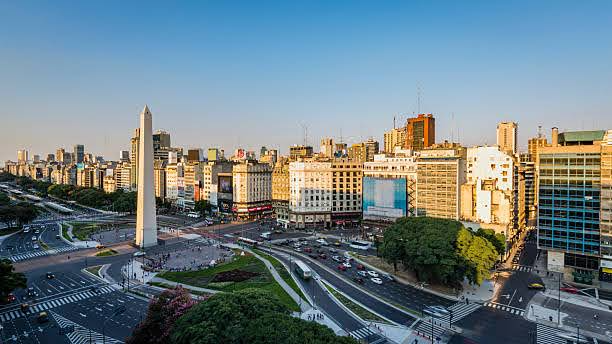
Buenos Aires is one of the most artistic and emotionally rich school tour destinations in South America. It’s a city where European elegance blends with Latin passion, and students can experience political revolutions, poetry, tango, and philosophy—all on the same street.
A school tour here starts at Plaza de Mayo, where students visit the Casa Rosada, Metropolitan Cathedral, and Cabildo to learn about Argentina’s independence, the Dirty War, and the Mothers of the Plaza de Mayo. These landmarks spark emotional connections and critical thought around human rights and democracy.
Literature and arts come alive in La Boca, where students explore colorful buildings, tango street performances, and the legacy of writer Jorge Luis Borges. At the Museo de Arte Latinoamericano de Buenos Aires (MALBA), they’ll dive into 20th-century Latin American modernism.
Workshops in tango dancing or Spanish poetry interpretation turn art into participation. Culinary tours or empanada-making classes offer a flavorful way to understand Argentine identity.
Educational visits to Recoleta Cemetery, where Eva Perón is buried, open conversations on fame, politics, and public memory. And day trips to a gaucho ranch outside the city teach students about rural life, cattle culture, and Argentina’s agricultural economy.
Buenos Aires is a school tour destination that moves students—literally and emotionally. It helps them feel the heartbeat of a nation through music, language, and resilience.
Best Time to Visit:
For school tour destinations that offer a blend of cultural exploration and favorable weather, March to May (autumn) and September to November (spring) are ideal for Buenos Aires. These periods offer mild temperatures and vibrant city life, perfect for educational excursions and outdoor activities.
Must-Visit Places:
- Plaza de Mayo & Casa Rosada: The political heart of Argentina, where students can delve into the nation’s rich history and witness the iconic presidential palace.
- La Boca & Caminito: A colorful neighborhood known for its vibrant street art, tango performances, and the famous Boca Juniors stadium.
- San Telmo Market: A historic market offering a mix of antiques, local crafts, and traditional foods, providing insights into Argentine culture.
- Recoleta Cemetery: An architectural marvel and the final resting place of notable figures, including Eva Perón, offering lessons in art, history, and politics.
- Teatro Colón: One of the world’s premier opera houses, renowned for its acoustics and opulent design, offering guided tours and performances.
Activities to Do:
- Tango Lessons: Engage in the traditional dance of Argentina, understanding its cultural significance and expressive art form.
- Cooking Classes: Learn to prepare classic Argentine dishes like empanadas and alfajores, immersing in the country’s culinary traditions.
- Street Art Tours: Explore neighborhoods like Palermo to study urban art and its role in social commentary.
- Spanish Language Workshops: Participate in language sessions to enhance communication skills and cultural understanding.
- Day Trips to Estancias: Visit traditional ranches to experience gaucho culture, horseback riding, and rural Argentine life.
Local Cuisine to Try:
- Asado: A traditional barbecue featuring various cuts of meat, reflecting Argentina’s rich grilling culture.
- Empanadas: Pastry turnovers filled with meats, cheeses, or vegetables, varying by region and tradition.
- Milanesa: Breaded and fried meat cutlets, often served with mashed potatoes or in sandwiches.
- Choripán: A popular street food consisting of chorizo sausage in crusty bread, typically topped with chimichurri.
- Alfajores: Sweet cookies filled with dulce de leche and coated in chocolate or powdered sugar.
Educational Highlights:
Buenos Aires stands out among school tour destinations for its dynamic blend of history, art, and culture. Students can explore the city’s European-influenced architecture, engage in traditional dances, and delve into the nation’s complex political past. This immersive experience fosters a deeper appreciation for Argentina’s diverse heritage and contemporary society.
39. Santiago: Conquering Andes and Cityscapes
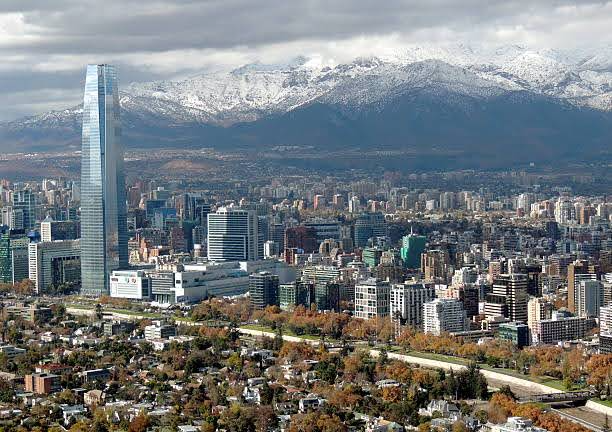
Santiago, Chile’s capital, is one of the most geographically stunning and intellectually rewarding school tour destinations in South America. Nestled between the snowcapped Andes and rolling vineyards, this city combines political history, environmental awareness, and forward-thinking urbanism in one dynamic package.
Begin with a trip to La Moneda Palace, Chile’s presidential office, where students can learn about Salvador Allende, the 1973 military coup, and the country’s transition to democracy. Nearby, Museo de la Memoria y los Derechos Humanos offers a powerful exploration of dictatorship-era repression and Chile’s continued journey toward justice and healing.
Art and literature come alive through visits to Museo Nacional de Bellas Artes and Pablo Neruda’s house, La Chascona, where students explore Chile’s poetic soul and artistic rebellion. Urban development tours take students to Barrio Lastarria and Providencia, where innovative public spaces and green city initiatives thrive.
Geography classes become immersive with day trips to Cajón del Maipo for glacial hiking, water resource studies, and geology-focused treks through the Andes. Science students can explore sustainable energy solutions with visits to solar farms or eco-focused communities.
Culinary workshops on Chilean empanadas, pebre salsa, and native ingredients add flavor to the experience. Spanish immersion programs and local exchanges also make language learning come to life.
Santiago shines as a school tour destination for students ready to explore political transformation, environmental resilience, and Latin America’s modern identity—against one of the world’s most breathtaking backdrops.
Best Time to Visit:
For school tour destinations that offer a blend of cultural exploration and favorable weather, March to May (autumn) and September to November (spring) are ideal for Santiago. These periods provide mild temperatures and fewer tourists, enhancing the educational experience.
Must-Visit Places:
- Cerro San Cristóbal: A prominent hill offering panoramic views of Santiago and the Andes, accessible via funicular or cable car.
- La Moneda Palace: The presidential palace, rich in political history and architecture.
- Barrio Lastarria: A bohemian neighborhood known for its cultural venues, including the Museo de Bellas Artes and the Museo de Artes Visuales.
- Parque Quinta Normal: A large park housing several museums, such as the Natural History Museum and the Artequin Museum.
- Sky Costanera: The tallest building in Latin America, featuring an observation deck with 360-degree views of the city.
Activities to Do:
- Historical Tours: Explore Santiago’s rich history through guided visits to landmarks like La Moneda Palace and Plaza de Armas.
- Cultural Workshops: Engage in art and music workshops in Barrio Lastarria, immersing in local traditions.
- Science and Nature Exploration: Visit the Granjaventura petting zoo and Parque Metropolitano for interactive learning experiences.
- Language Immersion: Participate in Spanish language classes and interact with local students for practical application.
- Day Trips: Organize excursions to nearby destinations like Valparaíso and Viña del Mar for coastal experiences.
Local Cuisine to Try:
- Empanadas: Pastries filled with meat, cheese, or seafood, a staple in Chilean cuisine.
- Pastel de Choclo: A corn pie layered with meat, eggs, and olives, showcasing traditional flavors.
- Completo: A Chilean-style hot dog topped with tomatoes, avocado, and mayonnaise.
- Mote con Huesillos: A sweet beverage made from wheat and dried peaches, popular during warmer months.
- Cazuela: A hearty soup with meat, potatoes, and corn, reflecting home-style cooking.
Educational Highlights:
Santiago stands out among school tour destinations for its blend of historical significance, cultural richness, and natural beauty. Students can delve into Chile’s political history, engage with vibrant arts scenes, and explore diverse ecosystems, fostering a comprehensive understanding of the country’s heritage and contemporary life.
40. Bogotá: Unearthing Colombia’s Gold and Grit

Bogotá is one of the most fascinating and fast-evolving school tour destinations in 2025. Colombia’s capital sits high in the Andes and offers a layered experience of colonial history, indigenous heritage, social justice, and creative rebirth.
Start in La Candelaria, the city’s historic heart. Students can explore colonial churches, narrow alleys, and vibrant murals while discussing Spanish conquest, independence, and modern identity. At Plaza Bolívar, they’ll see government buildings and understand Colombia’s democratic system, complete with its struggles and reforms.
The Gold Museum (Museo del Oro) is a highlight, displaying over 55,000 pieces of pre-Hispanic gold and artifacts. Students learn how metallurgy, symbolism, and trade shaped indigenous societies long before European arrival. This ties beautifully into lessons on archaeology, anthropology, and cultural resilience.
At the Botero Museum, art and politics come together through oversized sculptures and thought-provoking paintings. Student workshops often include cartooning, street art, or even music inspired by Colombia’s Afro-Caribbean and Andean fusion.
For science or environmental studies, students can visit Monserrate Hill for biodiversity lessons and panoramic city views, or explore Bogotá’s cycling infrastructure and green transport efforts. Sustainability workshops at urban farms and conservation centers add hands-on experience.
Bogotá is a school tour destination that breaks stereotypes and builds global thinkers. It helps students understand transformation—not just of cities, but of people—through resilience, creativity, and a renewed sense of national pride.
Best Time to Visit:
For school tour destinations that offer a blend of cultural exploration and favorable weather, December to March and July to August are ideal for Bogotá. These months typically experience drier conditions, making them suitable for outdoor educational activities and city tours.
Must-Visit Places:
- Museo del Oro (Gold Museum): Home to over 55,000 pre-Hispanic gold artifacts, this museum offers insights into Colombia’s rich indigenous heritage.
- La Candelaria: Bogotá’s historic district, characterized by colonial architecture, vibrant street art, and cultural landmarks like Plaza Bolívar.
- Museo Botero: Features works by renowned Colombian artist Fernando Botero and other international artists, providing a comprehensive art experience.
- Monserrate Hill: Offers panoramic views of the city and houses a historic church, accessible via funicular or cable car.
- Plaza Bolívar: The main square surrounded by significant buildings like the Cathedral Primada and the Capitolio Nacional, central to Colombia’s history.
Activities to Do:
- Guided Walking Tours: Explore La Candelaria’s cobblestone streets, learning about Bogotá’s colonial past and contemporary culture.
- Museum Visits: Engage with Colombia’s history and art through visits to the Museo del Oro and Museo Botero.
- Street Art Exploration: Discover Bogotá’s dynamic street art scene, particularly in neighborhoods like La Candelaria.
- Cultural Workshops: Participate in traditional music or dance classes to immerse in local customs.
- Language Practice: Enhance Spanish skills through interactions with locals and educational programs.
Local Cuisine to Try:
- Ajiaco: A traditional chicken and potato soup flavored with the herb guasca, often served with corn, avocado, and capers.
- Arepas: Cornmeal cakes that can be grilled, baked, or fried, commonly filled with cheese or meats.
- Bandeja Paisa: A hearty platter featuring beans, rice, ground meat, chorizo, fried egg, plantain, and arepa.
- Empanadas: Fried or baked pastries filled with meats, potatoes, or cheese, often accompanied by spicy sauces.
- Chicha: A traditional fermented corn drink, reflecting indigenous culinary traditions.
Educational Highlights:
Bogotá offers a multifaceted educational experience, blending historical exploration with cultural immersion. Students can delve into Colombia’s rich past through museum visits, understand contemporary societal dynamics via street art tours, and engage with local communities to gain a comprehensive understanding of the nation’s identity.
41. Lima: Tasting Peru’s Past and Present
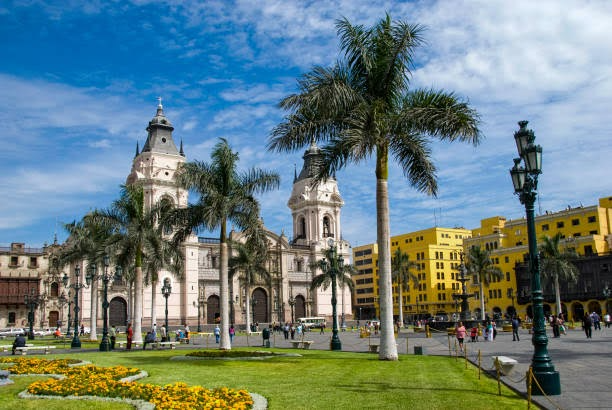
Lima is one of the most deliciously diverse school tour destinations in South America. As Peru’s coastal capital, it’s a hub for students interested in history, gastronomy, archaeology, and how ancient and modern worlds collide in everyday life.
Start at Plaza Mayor, the historic center of colonial Lima. Here, students tour the Government Palace, Lima Cathedral, and San Francisco Monastery, diving into Peru’s Spanish colonial past and Catholic influence. It’s a great starting point for understanding how Latin American societies were shaped.
But the real magic happens when students explore Museo Larco, which holds one of the world’s best collections of pre-Columbian art. They’ll learn about the Moche, Nazca, and Inca civilizations, uncovering how their social structures, rituals, and designs influenced today’s culture.
Lima is also Latin America’s culinary capital. Food tours or cooking workshops introduce students to ceviche, anticuchos, and picarones while exploring the relationship between geography, biodiversity, and cuisine. Visits to local markets like Mercado de Surquillo give students a sensory learning experience on food systems and economics.
Science or geography classes can include field trips along the Pacific coast to study marine ecosystems or urban planning in cliffside neighborhoods like Barranco and Miraflores.
Lima is a school tour destination that blends the intellectual with the flavorful—it teaches students that culture isn’t just seen or read; it’s something you taste, walk through, and carry with you.
Best Time to Visit:
For school tour destinations that offer a blend of cultural exploration and favorable weather, May to October is ideal for Lima. These months fall within the dry season, providing clear skies and minimal rainfall, which are conducive to outdoor educational activities and city tours.
Must-Visit Places:
- Plaza de Armas & Historic Center: The heart of colonial Lima, featuring the Cathedral of Lima and the Government Palace.
- Museo Larco: A renowned museum housing pre-Columbian art and artifacts, offering insights into Peru’s ancient civilizations.
- Barranco District: A bohemian neighborhood known for its vibrant street art, historic architecture, and cultural landmarks like the Bridge of Sighs.
- Miraflores District: A modern area overlooking the Pacific Ocean, home to parks, shopping centers, and the famous Malecón promenade.
- Parque de la Reserva: Features the Magic Water Circuit, a series of illuminated fountains that provide interactive and educational experiences.
Activities to Do:
- Historical Tours: Explore Lima’s colonial past through guided visits to its historic center and museums.
- Culinary Workshops: Participate in cooking classes to learn how to prepare traditional Peruvian dishes like ceviche and lomo saltado.
- Cultural Exchanges: Engage with local communities to understand contemporary Peruvian society and traditions.
- Language Immersion: Enhance Spanish language skills through interactive sessions and real-life practice in local settings.
- Art and Music Exploration: Visit galleries and attend performances to experience Peru’s rich artistic heritage.
Local Cuisine to Try:
- Ceviche: Fresh fish marinated in citrus juices, a staple of Peruvian coastal cuisine.
- Lomo Saltado: A stir-fry dish combining beef, tomatoes, onions, and fries, reflecting Chinese-Peruvian fusion.
- Aji de Gallina: A creamy chicken stew made with aji amarillo peppers and walnuts.
- Anticuchos: Grilled meat skewers, traditionally made from beef heart, seasoned with spices.
- Suspiro a la Limeña: A sweet dessert made from caramelized milk and meringue, originating from Lima.
Educational Highlights:
Lima offers a multifaceted educational experience, blending historical exploration with cultural immersion. Students can delve into Peru’s rich past through museum visits, understand contemporary societal dynamics via neighborhood tours, and engage with local communities to gain a comprehensive understanding of the nation’s identity.
42. Quito: Standing on the Equator’s Edge

Quito is one of the most geographically and historically unique school tour destinations in South America. As the world’s second-highest capital, set high in the Andes, it’s a place where students can study ancient cultures, colonial legacies, and scientific phenomena—all in a single field trip.
Begin in Quito’s Old Town, a UNESCO World Heritage Site packed with baroque churches, plazas, and monasteries. Students explore La Compañía de Jesús, San Francisco Church, and Plaza Grande, learning about the Spanish conquest, Catholic influence, and mestizo culture that define Ecuador’s identity.
Then it’s off to the Middle of the World Monument (Mitad del Mundo)—where students literally straddle the equator. Here, they learn about hemispheres, gravity, GPS technology, and Incan astronomy through interactive experiments and exhibits.
At the Intiñan Museum, nearby, students conduct fun science challenges like balancing eggs on nails and watching water spin in different directions—perfect for physics and geography lessons.
For nature and environmental studies, schools often organize trips to Cotopaxi National Park or the nearby Mindo Cloud Forest, where students can observe biodiversity, conservation efforts, and volcanic geology. Quito is also a common launchpad for Galápagos add-ons.
Cultural immersion continues with workshops in traditional Ecuadorian crafts, cooking, or Quechua language basics. Students can explore indigenous perspectives that are deeply rooted in Ecuadorian identity.
Quito is an unforgettable school tour destination. It helps students feel the physical divide of hemispheres while bridging the human connections between cultures, time periods, and ecosystems.
Best Time to Visit:
For school tour destinations that offer a blend of cultural exploration and favorable weather, June to September is ideal for Quito. These months constitute the dry season, characterized by minimal rainfall and clearer skies, which are conducive to outdoor educational activities and city tours.
Must-Visit Places:
- Mitad del Mundo (Middle of the World Monument): Experience standing on the equator line and explore interactive exhibits that demonstrate the unique properties of being at the Equator.
- Centro Histórico (Historic Center): A UNESCO World Heritage site, this area is rich in colonial architecture, churches, and museums, offering insights into Quito’s history.
- TelefériQo: A cable car ride that provides panoramic views of the city and access to hiking trails on the Pichincha Volcano.
- Museo Nacional del Ecuador (MuNA): Showcases Ecuador’s history from ancient to modern times, with notable archaeological collections.
- Parque La Carolina: A large urban park featuring botanical gardens and recreational spaces, ideal for educational outings.
Activities to Do:
- Cultural Workshops: Participate in traditional music, dance, and art workshops to immerse in local customs.
- Language Immersion: Enhance Spanish skills through interactive sessions and real-life practice in local settings.
- Community Engagement: Engage with local organizations to understand social initiatives and community development projects.
- Culinary Classes: Learn to prepare traditional Ecuadorian dishes, gaining hands-on experience in local cuisine.
- Environmental Education: Explore nearby ecological reserves to study biodiversity and conservation efforts.
Local Cuisine to Try:
- Locro de Papa: A hearty potato and cheese soup, often garnished with avocado and served with toasted corn.
- Llapingachos: Fried potato patties stuffed with cheese, typically served with sausage, salad, and peanut sauce.
- Bolón de Verde: Mashed green plantain balls mixed with cheese or meat, commonly eaten for breakfast.
- Empanadas de Viento: Fried pastries filled with cheese and sprinkled with sugar, offering a sweet and savory flavor.
- Canelazo: A warm alcoholic beverage made from cinnamon, sugar, and aguardiente, popular in the Andean region.
Educational Highlights:
Quito stands out among school tour destinations for its unique geographical location on the equator, rich historical heritage, and vibrant cultural scene. Students can engage in diverse learning experiences, from exploring colonial architecture and museums to participating in community service and environmental conservation projects. This multifaceted approach fosters a comprehensive understanding of Ecuador’s societal and ecological dynamics.
Region: Oceania
Oceania’s Unique School Tour Destinations
Oceania’s school tour destinations in 2025 promise unforgettable learning adventures shaped by nature, Indigenous heritage, and hands-on exploration. From snorkeling the Great Barrier Reef in Cairns to climbing volcanic peaks in Auckland and studying cultural expression in Melbourne, this region blends immersive education with jaw-dropping landscapes. Whether exploring Polynesian traditions in Rarotonga or tackling glacier hikes in Queenstown, students experience learning through storytelling, sustainability, and outdoor discovery. Oceania is where adventure meets awareness—and where every lesson leaves a lasting impact.
43. Sydney: Hearing Indigenous Ocean Tales
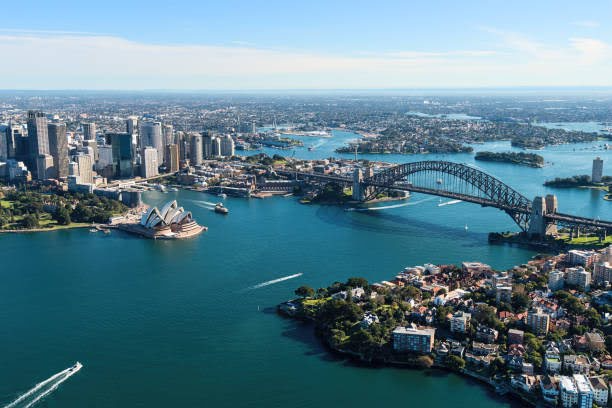
Best Time to Visit: September to November or March to May (spring or fall—mild weather and smaller crowds)
Sydney is one of the most dynamic school tour destinations in Oceania, combining urban sophistication with deep-rooted Aboriginal heritage and iconic landscapes. It’s a city that encourages exploration—both of history and identity.
A school tour typically begins at the Sydney Opera House, not just for its architecture, but for the cultural performances and workshops it hosts. Students learn about modern Australia’s creative energy through music, storytelling, and theater.
Then, at the Royal Botanic Garden, students can participate in Aboriginal heritage tours, where they learn about bush medicine, local Dreamtime stories, and Indigenous knowledge systems tied to the land and sea. These sessions offer powerful lessons in sustainability and perspective.
Nearby, The Rocks district opens a window into Sydney’s colonial beginnings, with walking tours explaining early settler history, convict labor, and the city’s urban development.
For marine studies, Taronga Zoo and the SEA LIFE Sydney Aquarium provide access to conservation programs and up-close learning with Australia’s unique wildlife. Many tours include time at Bondi Beach, where students can learn about coastal erosion, surf science, and beach safety.
Sydney blends history, art, ecology, and social awareness in one incredible package. It’s a school tour destination that gives students a full sensory experience—from the sounds of the ocean to the stories of the land’s First People.
Best Time to Visit:
For school tour destinations that offer a blend of cultural exploration and favorable weather, September to November (spring) and March to May (autumn) are ideal for Sydney. These periods provide mild temperatures and fewer tourists, enhancing the educational experience.
Must-Visit Places:
- The Rocks Aboriginal Dreaming Tour: Led by Aboriginal guides, this 90-minute walking tour explores the historic Rocks area, sharing stories of the Gadigal people and their connection to land and water.
- Barangaroo Reserve: Students can explore the site’s rich Aboriginal history and cultural significance, connecting with the world’s oldest living culture through engagement with Aboriginal guides.
- Royal Botanic Garden’s Aboriginal Heritage Tour: This 90-minute tour introduces students to native plants used by the Gadigal people for food and medicine, offering insights into traditional ecological knowledge.
- Centennial Parklands’ Aboriginal School Excursions: Programs connect students with the local Bidjigal and Gadigal country, teaching about the natural environment and its use by First Nations Peoples.
- Tribal Warrior Cultural Cruise: Experience Aboriginal culture, history, and stories on a Sydney Harbour cruise, learning about the significance of the land and sea to the Eora Nation.
Activities to Do:
- Cultural Workshops: Participate in bushfood cooking, weaving, and Aboriginal art workshops to gain hands-on experience of Indigenous culture.
- Storytelling Sessions: Engage with Dreamtime stories and learn about the spiritual connections to the land and sea.
- Art and Music Exploration: Attend performances and exhibitions showcasing contemporary and traditional Aboriginal art and music, such as those featured in the Sydney Biennale.
- Environmental Education: Explore local ecosystems and learn about traditional land management practices from Aboriginal perspectives.
Local Cuisine to Try:
- Bush Tucker Tasting: Sample native ingredients like wattleseed, finger lime, and kangaroo, which are integral to Aboriginal cuisine.
- Traditional Dishes: Experience meals prepared using traditional methods, such as cooking in underground ovens.
Educational Highlights:
Sydney’s array of Aboriginal cultural experiences offers students a comprehensive understanding of Indigenous heritage, from ancient traditions to contemporary practices. Engaging with local communities and participating in hands-on activities fosters a deeper appreciation for Australia’s First Nations Peoples and their enduring connection to the land and sea
44. Queenstown: Mastering Geology and Thrills

Queenstown, New Zealand, is one of the most thrilling and naturally stunning school tour destinations in the world. Known as the “adventure capital,” it’s perfect for geography, geology, and outdoor education programs.
Set on Lake Wakatipu and surrounded by the Southern Alps, Queenstown is an outdoor classroom like no other. Students can start with a gondola ride up Bob’s Peak, where they learn about plate tectonics, mountain formation, and glacial activity—all while soaking in panoramic views.
Field trips to Fiordland National Park or Milford Sound offer real-world lessons in erosion, biodiversity, and conservation. At these UNESCO sites, students can study rainforests, fjords, and marine ecosystems with expert guides.
Queenstown also specializes in adventure education. Activities like ziplining, jet boating, white-water rafting, or canyoning are paired with leadership and safety workshops—building confidence, teamwork, and resilience.
Maori cultural experiences, including storytelling, haka performances, and visits to sacred sites, introduce students to New Zealand’s Indigenous heritage and deep spiritual connections to land and water.
Science and ecology programs often include visits to Kiwi conservation centers or glacier studies in nearby Mount Aspiring National Park.
Queenstown is more than just breathtaking—it’s bold, educational, and transformative. As a school tour destination, it challenges students physically, mentally, and culturally, making every lesson feel like an adventure.
Best Time to Visit:
For school tour destinations that offer a blend of geological exploration and favorable weather, December to February is ideal for Queenstown. These summer months provide warm temperatures and longer daylight hours, which are conducive to outdoor educational activities and adventure experiences.
Must-Visit Places:
- Skyline Gondola & Luge: Ascend Bob’s Peak for panoramic views of Queenstown and Lake Wakatipu, followed by an exhilarating luge ride down the mountain.
- TSS Earnslaw & Walter Peak Farm: Cruise across Lake Wakatipu on a historic steamship to a working high-country farm, offering insights into New Zealand’s pastoral heritage.
- Queenstown Gardens: Explore a diverse collection of native and exotic plants, heritage trees, and memorials in this lakeside botanical garden.
- Kiwi Birdlife Park: Engage with conservation efforts and observe native wildlife, including the iconic kiwi bird, in a naturalistic setting.
- Glenorchy & Paradise: Visit the picturesque village of Glenorchy and the nearby Paradise region, known for their stunning landscapes featured in various films.
Activities to Do:
- Geological Field Studies: Examine glacial formations, sedimentary rock structures, and the geomorphology of the Southern Alps region.
- Adventure Sports: Participate in activities such as jet boating, bungee jumping, and ziplining to study the physics and safety engineering behind these experiences.
- Cultural Workshops: Engage in Māori cultural experiences, including traditional crafts, storytelling, and understanding indigenous perspectives on land and nature.
- Environmental Science Projects: Conduct fieldwork on local ecosystems, biodiversity, and conservation practices in the surrounding natural reserves.
- Sustainable Tourism Studies: Analyze the impact of tourism on Queenstown’s environment and economy, exploring strategies for sustainable development.
Local Cuisine to Try:
- Fergburger: Sample gourmet burgers from the renowned local eatery, known for its inventive flavors and substantial portions.
- Pavlova: Enjoy this meringue-based dessert topped with fresh fruits, a favorite in New Zealand celebrations.
- Lamb Dishes: Savor various preparations of New Zealand lamb, reflecting the country’s strong sheep farming industry.
- Green-Lipped Mussels: Taste these native shellfish, often served steamed or in chowders, highlighting local seafood offerings.
- Hokey Pokey Ice Cream: Delight in this classic New Zealand treat featuring vanilla ice cream with honeycomb toffee pieces.
Educational Highlights:
Queenstown offers a unique combination of geological wonders and adventure-based learning opportunities. Students can delve into the study of glacial landscapes, participate in thrilling activities that demonstrate principles of physics and engineering, and engage with local cultures and environmental initiatives. This immersive experience fosters a comprehensive understanding of natural sciences, cultural studies, and sustainable tourism practices.
45. Rarotonga: Living Polynesian Traditions
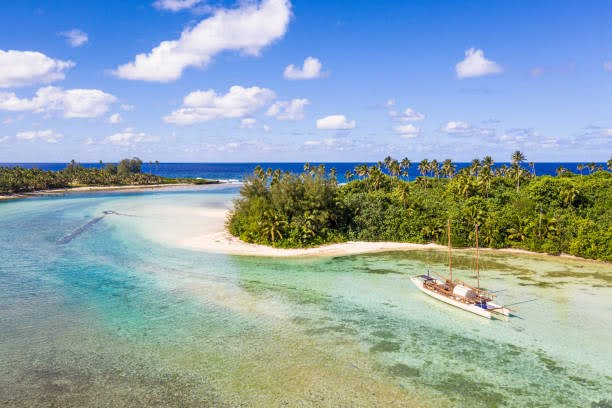
Best Time to Visit: May to October (dry season with clear skies and calm seas)
Rarotonga, the main island of the Cook Islands, is one of the most culturally immersive school tour destinations in Oceania. Surrounded by coral reefs and lush volcanic landscapes, it offers students the rare opportunity to learn through living culture, oral history, and environmental stewardship.
Begin with a village cultural immersion experience, where students engage directly with local families to learn about Polynesian traditions—like hula dance, traditional medicine, mat weaving, and cooking in earth ovens called umu. These interactions offer deep insight into community values, storytelling, and island life.
A visit to Te Vara Nui Village provides guided cultural performances and historical tours focused on genealogy, spiritual beliefs, and pre-colonial society. Students gain a better understanding of how ancient wisdom continues to shape modern Rarotongan identity.
Outdoor education thrives here. Schools often partner with marine conservation groups to snorkel in protected lagoons, study coral ecosystems, and learn about reef preservation. Land-based learning includes volcano hikes, ecology workshops, and sustainability projects on coconut farming and organic agriculture.
Language and anthropology modules can include basic lessons in Cook Islands Māori, introducing students to Indigenous perspectives on land, ancestry, and community.
As a school tour destination, Rarotonga offers rare authenticity. It’s a powerful setting for students to explore the meaning of place, identity, and sustainability in a world that’s constantly changing.
Best Time to Visit:
For school tour destinations that offer a blend of cultural exploration and favorable weather, May to October is ideal for Rarotonga. These months fall within the dry season, providing comfortable temperatures and minimal rainfall, which are conducive to outdoor educational activities and cultural experiences.
Must-Visit Places:
- Te Vara Nui Village: An immersive cultural center where students can learn about traditional Cook Islands customs, including dance, music, and crafts.
- Cook Islands National Museum: Located in Avarua, this museum offers insights into the nation’s history and heritage through various artifacts and exhibitions.
- Te Ara – Museum of Cultural Enterprise: Situated in Muri, this museum showcases the evolution of local businesses and cultural practices, providing a modern perspective on Polynesian traditions.
- Punanga Nui Market: A vibrant marketplace where students can explore local crafts, foods, and interact with artisans, gaining firsthand experience of the island’s economy and culture.
- Muri Lagoon: A picturesque spot ideal for snorkeling and understanding the island’s marine biodiversity.
Activities to Do:
- Cultural Workshops: Participate in traditional weaving, dance, and cooking classes to gain hands-on experience of Polynesian culture.
- Eco Tours: Engage in guided tours that focus on the island’s ecology, sustainability practices, and conservation efforts.
- Community Engagement: Visit local schools and community centers to interact with residents and understand daily life in Rarotonga.
- Marine Exploration: Take part in lagoon cruises and snorkeling excursions to study marine ecosystems and environmental challenges.
- Historical Site Visits: Explore ancient marae (ceremonial sites) and learn about the island’s pre-colonial history and traditions.
Local Cuisine to Try:
- Ika Mata: A traditional dish made from raw fish marinated in citrus juice and coconut cream.
- Rukau: Taro leaves cooked with coconut cream, often served as a side dish.
- Poke: A dessert made from mashed fruit and arrowroot, baked and topped with coconut cream.
- Umukai: A traditional feast where food is cooked in an underground oven, offering a communal dining experience.
- Tropical Fruits: Enjoy fresh local fruits like pawpaw, mangoes, and bananas, which are staples in the island’s diet.
Educational Highlights:
Rarotonga offers a rich tapestry of cultural and ecological learning opportunities. Students can immerse themselves in Polynesian traditions, understand sustainable living practices, and engage with the local community to gain a comprehensive perspective of life in the Cook Islands. The island’s unique blend of history, culture, and natural beauty makes it an exceptional destination for educational tours.
46. Melbourne: Blending Art and Urban Life

Melbourne is one of the most creative, intellectual, and student-friendly school tour destinations in Oceania. Known as Australia’s cultural capital, it offers the perfect blend of modern city living, historical depth, and hands-on learning across art, architecture, and innovation.
Start at Federation Square, the city’s civic heart and a hub of art, design, and discussion. Here, students visit the Ian Potter Centre and ACMI (Australian Centre for the Moving Image) to explore Australian art, film, media, and digital storytelling.
Melbourne’s laneways and street art tours offer a dynamic way to learn about urban culture, political expression, and design thinking. Students can even take graffiti or digital design workshops to create their own visual messages.
For history, the Old Melbourne Gaol provides chilling insights into colonial justice, law, and the infamous story of Ned Kelly. At the Immigration Museum, students engage with stories of migration, identity, and diversity that have shaped modern Australia.
STEM-focused students can visit Scienceworks, take part in robotics labs, or explore Melbourne’s status as a “smart city” through sustainability tours and urban planning projects. Language and humanities learners can enjoy literary walking tours and international food trails through neighborhoods like Carlton and Footscray.
With its progressive energy, multicultural neighborhoods, and world-class institutions, Melbourne is a school tour destination that sparks creativity, critical thinking, and cultural empathy.
Best Time to Visit:
For school tour destinations that offer a blend of cultural exploration and favorable weather, September to November (spring) and March to May (autumn) are ideal for Melbourne. These periods provide mild temperatures and fewer tourists, enhancing the educational experience.
Must-Visit Places:
- National Gallery of Victoria (NGV): Australia’s oldest and most visited art museum, currently hosting the record-breaking Yayoi Kusama exhibition, which has attracted over 480,000 visitors since December 2024.
- ACMI (Australian Centre for the Moving Image): Located in Federation Square, ACMI is Australia’s national museum of screen culture, featuring interactive exhibits on film, television, and digital art.
- Hosier Lane: A renowned laneway celebrated for its vibrant street art, offering students a firsthand look at Melbourne’s dynamic urban art scene.
- Federation Square: A cultural precinct housing major institutions like the NGV and ACMI, as well as the Koorie Heritage Trust, which showcases Indigenous art and culture.
- Lyon Housemuseum: A unique fusion of private residence and contemporary art museum, displaying the Lyon Collection of Australian contemporary art.
Activities to Do:
- Street Art Tours: Engage in guided tours led by local street artists, exploring Melbourne’s laneways and learning about the techniques and stories behind the artworks.
- Art Workshops: Participate in hands-on art workshops at institutions like ArtPlay, which offers creative programs designed with, for, and by children and families.
- Cultural Discovery Tours: Explore Melbourne’s rich history and diverse culture through walking tours that cover historic sites, architecture, and urban development.
- Interactive Exhibitions: Experience interactive exhibits at ACMI, such as the “Story of the Moving Image,” which delves into the evolution of screen culture.
Local Cuisine to Try:
- Flat White Coffee: Melbourne is renowned for its coffee culture; trying a flat white at a local café is a must.
- Meat Pies: A classic Australian snack, often enjoyed with tomato sauce.
- Vegemite on Toast: A quintessential Australian breakfast item, offering a unique taste experience.
- Lamingtons: Sponge cake squares coated in chocolate and coconut, a beloved Australian dessert.
- Chiko Rolls: An Australian snack inspired by Chinese spring rolls, filled with meat and vegetables.
Educational Highlights:
Melbourne offers a multifaceted educational experience, blending art, history, and urban development. Students can explore world-class museums, engage in creative workshops, and delve into the city’s rich cultural tapestry through interactive tours and exhibits.
47. Auckland: Scaling Māori and Volcanic Heights
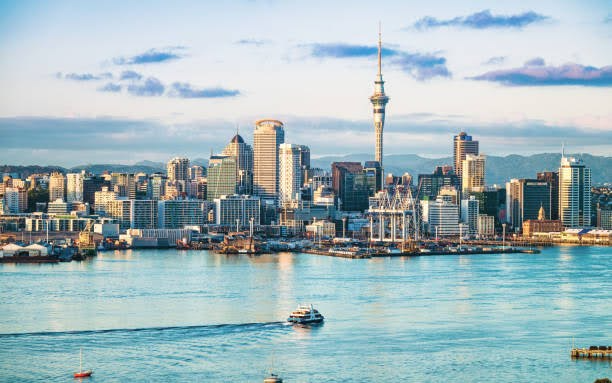
Auckland is one of the most balanced and enriching school tour destinations in Oceania. Known as the “City of Sails,” it offers students a unique blend of Māori heritage, volcanic landscapes, and vibrant city life—all wrapped into a safe, welcoming learning environment.
Begin with a cultural journey at the Auckland War Memorial Museum, where students explore Māori artifacts, carvings, and taonga (treasures). Guided experiences often include live haka performances and workshops on language, tribal structure, and oral storytelling—giving powerful insight into New Zealand’s Indigenous roots.
Outdoor education here is extraordinary. Students can hike Mt. Eden (Maungawhau) or Rangitoto Island, both dormant volcanoes offering panoramic views and lessons in geology, plate tectonics, and environmental conservation. Interactive learning about Auckland’s volcanic field makes geography come alive.
At Sea Life Kelly Tarlton’s Aquarium, students get up-close with marine biodiversity, Antarctic exploration exhibits, and conservation efforts. Many tours also include coastal walks and eco-activities along Mission Bay or Waitematā Harbour.
Workshops in Māori weaving, music, or green architecture tie traditional knowledge with modern innovation. Students often interact with youth-led environmental groups working on water protection and sustainability projects.
Auckland is a school tour destination where science, culture, and leadership intersect. It encourages students to look inward and outward—to understand the land and its people, and to think globally while acting locally.
Best Time to Visit:
For school tour destinations that offer a blend of cultural exploration and favorable weather, March to May (autumn) and September to November (spring) are ideal for Auckland. These periods provide mild temperatures and fewer tourists, enhancing the educational experience.
Must-Visit Places:
- Maungawhau / Mount Eden: Auckland’s highest volcanic cone, offering panoramic views and insights into Māori history through the Te Ipu Kōrero o Maungawhau visitor center.
- Maungakiekie / One Tree Hill: Once the largest Māori pā (fortified village) in New Zealand, this site provides a deep dive into pre-colonial Māori society.
- Māngere Mountain: Home to the Māngere Mountain Education Centre, offering guided tours that explore the mountain’s geological features and Māori heritage.
- Rangitoto Island: The youngest and largest volcano in the Auckland Volcanic Field, accessible by ferry, featuring unique lava fields and native bush.
- Auckland War Memorial Museum: Houses extensive Māori cultural exhibits and offers educational programs on the region’s volcanic activity.
Activities to Do:
- Volcano Exploration: Participate in guided tours of Auckland’s volcanic cones, learning about their formation and significance in Māori culture.
- Māori Cultural Workshops: Engage in traditional Māori arts, crafts, and storytelling sessions to gain a deeper understanding of indigenous practices.
- Environmental Studies: Study the unique ecosystems of volcanic landscapes and discuss conservation efforts in the region.
- Interactive Museum Exhibits: Explore hands-on displays at local museums that illustrate the dynamic relationship between Auckland’s geology and its inhabitants.
Local Cuisine to Try:
- Hāngi: A traditional Māori method of cooking food using heated rocks buried in a pit oven, resulting in a distinctive smoky flavor.
- Kūmara (Sweet Potato): A staple in Māori cuisine, often roasted or included in various dishes.
- Rewena Bread: A traditional Māori sourdough bread made using a fermented potato starter.
- Seafood Delicacies: Enjoy fresh local seafood, including green-lipped mussels and pāua (abalone), integral to New Zealand’s coastal diet.
Educational Highlights:
Auckland’s unique combination of volcanic landscapes and rich Māori heritage offers students an immersive learning experience. Through hands-on activities, guided tours, and cultural exchanges, students can explore the interconnectedness of geology, ecology, and indigenous culture, fostering a comprehensive understanding of the region’s significance.
48. Cairns: Diving Into Reef and Rainforest
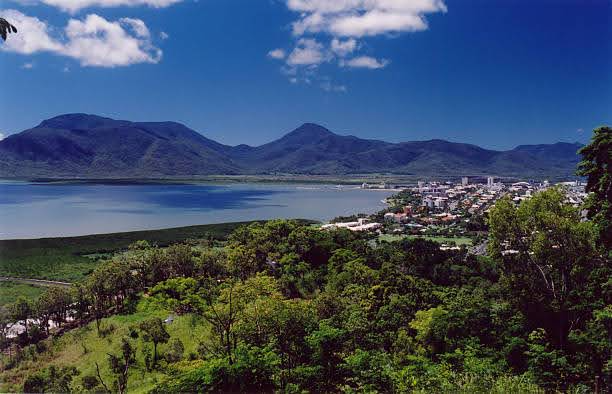
Cairns is one of the most adventure-filled and ecologically essential school tour destinations in the world. As the gateway to both the Great Barrier Reef and the Daintree Rainforest, it gives students the ultimate experience in biodiversity, climate education, and Indigenous wisdom.
Begin with a marine biology-focused excursion to the Great Barrier Reef. Snorkeling or glass-bottom boat tours bring students face-to-face with coral reefs, clownfish, sea turtles, and reef sharks. Onboard educators explain reef ecosystems, threats from bleaching, and what global efforts are doing to preserve this natural wonder.
Back on land, the Daintree Rainforest—one of the oldest in the world—offers canopy walks, river cruises, and guided Indigenous experiences. Students learn how the Kuku Yalanji people have lived in harmony with the rainforest for thousands of years, using it for medicine, shelter, and food.
At Tjapukai Aboriginal Cultural Park or similar centers, students engage in boomerang throwing, bush tucker tastings, and Dreamtime storytelling. These immersive activities build cross-cultural understanding and respect.
Cairns also offers sustainability workshops, reef restoration activities, and visits to wildlife sanctuaries focused on conservation education. The balance of science, culture, and action makes every moment meaningful.
As a school tour destination, Cairns is pure wonder. It shows students what’s at stake in the climate conversation—and what they can do to help protect it.
Best Time to Visit:
For school tour destinations that offer a blend of ecological exploration and favorable weather, May to October is ideal for Cairns. These months fall within the dry season, providing comfortable temperatures and minimal rainfall, which are conducive to outdoor educational activities and environmental studies.
Must-Visit Places:
- Great Barrier Reef: Embark on snorkeling or diving excursions to explore the world’s largest coral reef system, observing diverse marine life and coral formations.
- Daintree Rainforest: Participate in guided tours of the world’s oldest tropical rainforest, learning about its unique biodiversity and ecological significance.
- Cairns Aquarium: Discover over 15,000 aquatic animals across 10 ecosystems, offering insights into the region’s marine and freshwater habitats.
- Skyrail Rainforest Cableway: Experience a 7.5 km scenic cableway journey over the rainforest canopy, with stops for guided boardwalk tours and educational exhibits.
- Kuranda Scenic Railway: Travel through the Barron Gorge National Park on a historic railway, learning about the area’s natural and cultural history.
Activities to Do:
- Marine Biology Workshops: Engage in hands-on learning about coral ecosystems and marine conservation efforts.
- Rainforest Ecology Studies: Conduct fieldwork in the Daintree Rainforest, examining plant and animal interactions and ecological processes.
- Indigenous Cultural Experiences: Participate in programs that explore Aboriginal culture, including traditional practices and environmental knowledge.
- Wildlife Observation: Visit sanctuaries and parks to observe native Australian species, enhancing understanding of local fauna.
- Environmental Conservation Projects: Take part in initiatives focused on preserving the Great Barrier Reef and rainforest ecosystems.
Local Cuisine to Try:
- Barramundi: A popular local fish, often grilled or pan-fried, showcasing regional seafood flavors.
- Tropical Fruits: Enjoy fresh produce like mangoes, papayas, and lychees, abundant in the Cairns region.
- Bush Tucker: Sample traditional Aboriginal foods, including native herbs, spices, and meats.
- Macadamia Nuts: Taste locally grown nuts, used in various dishes and desserts.
- Lemon Myrtle Flavored Dishes: Experience meals infused with this native Australian herb, known for its citrusy flavor.
Educational Highlights:
Cairns offers an immersive educational experience, combining marine and rainforest ecosystems with cultural learning. Students can explore diverse habitats, engage in conservation efforts, and gain insights into Indigenous knowledge systems, fostering a comprehensive understanding of environmental and cultural interconnections.
Other Regions
Hidden School Tour Destinations Worldwide
49. Dominica: Watching Whales and Waves
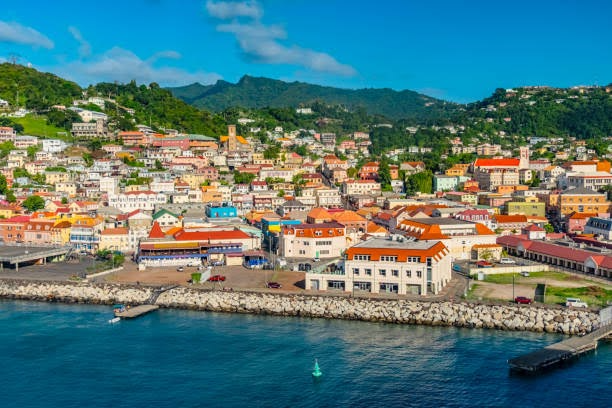
Dominica—often called the “Nature Island” of the Caribbean—is one of the most underrated school tour destinations in the world. It offers students the chance to engage with raw, untouched nature, marine science, and sustainable island living.
A highlight is whale watching, where students can witness sperm whales, dolphins, and other marine life in their natural habitat. Local ecotourism operators often include marine biology lessons onboard, covering species identification, ocean ecology, and climate impact.
On land, guided hikes through Morne Trois Pitons National Park—a UNESCO World Heritage Site—introduce students to hot springs, waterfalls, and the famous Boiling Lake, one of the world’s largest geothermal lakes. It’s a perfect case study in volcanoes, plate tectonics, and energy science.
Students also interact with local communities through eco-lodge programs and cultural exchanges. They learn about Creole culture, traditional herbal medicine, and organic farming techniques in harmony with the island’s ecosystem.
Dominica is a school tour destination that reconnects students with the natural world and shows how communities thrive while protecting it.
Best Time to Visit:
For school tour destinations that offer a blend of marine exploration and favorable weather, November to April is ideal for Dominica. These months provide optimal conditions for whale watching, snorkeling, and hiking through the island’s lush rainforests.
Must-Visit Places:
- Morne Trois Pitons National Park: A UNESCO World Heritage site featuring volcanic landscapes, the Boiling Lake, and Trafalgar Falls, offering students insights into geothermal activity and biodiversity.
- Champagne Reef: A unique snorkeling site where volcanic gases create effervescent waters, providing an unforgettable underwater experience.
- Indian River: Explore this serene river by boat, learning about mangrove ecosystems and the filming locations of “Pirates of the Caribbean.”
- Kalinago Territory: Visit the indigenous Kalinago people to understand their culture, traditions, and crafts, fostering cultural appreciation and awareness.
- Dominica Botanical Gardens: Discover diverse plant species and conservation efforts, including the Parrot Conservation and Research Centre dedicated to protecting endemic bird species.
Activities to Do:
- Whale and Dolphin Watching Tours: Observe sperm whales and other marine life in their natural habitat, enhancing understanding of marine biology and conservation.
- Hiking Expeditions: Trek through trails like the Waitukubuli National Trail, promoting physical activity and environmental education.
- Coral Reef Rehabilitation Programs: Participate in initiatives aimed at preserving marine ecosystems, offering hands-on conservation experience.
- Cultural Workshops: Engage in traditional cooking classes and craft-making sessions within the Kalinago community, fostering cultural exchange.
- Eco-Tourism Projects: Collaborate with local organizations on sustainability projects, emphasizing the importance of environmental stewardship.
Local Cuisine to Try:
- Callaloo Soup: A nutritious dish made from leafy greens, often combined with coconut milk and local spices.
- Mountain Chicken: Despite its name, this delicacy is actually a type of frog native to Dominica, offering a unique culinary experience.
- Saltfish and Bakes: A traditional breakfast featuring salted codfish served with fried dough.
- Sorrel Drink: A refreshing beverage made from hibiscus petals, commonly enjoyed during festive seasons.
- Cassava Bread: A staple food made from grated cassava, reflecting the island’s indigenous culinary practices.
Educational Highlights:
Dominica stands out among school tour destinations for its rich biodiversity, cultural heritage, and commitment to sustainability. Students can immerse themselves in hands-on learning experiences, from ecological conservation to cultural exchanges, fostering global awareness and environmental responsibility.
50. Iceland: Exploring Fire and Ice
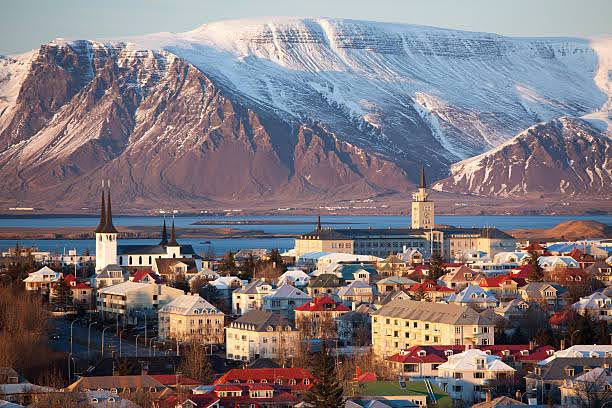
Iceland is a dream school tour destination for science, sustainability, and geography students. With its dramatic contrasts—glaciers, volcanoes, lava fields, and geysers—every landscape becomes a living laboratory.
Begin with the Golden Circle tour, where students witness Gullfoss Waterfall, Thingvellir National Park, and the erupting geysers of Strokkur. They’ll learn about rift valleys, tectonic plates, and Iceland’s place on the Mid-Atlantic Ridge.
Glacier walks and visits to Langjökull or Vatnajökull ice caps teach students about glacial movement, climate change, and freshwater preservation. Many tours include hands-on workshops with local climate researchers or geological experts.
At Hellisheiði Geothermal Power Plant, students explore how Iceland harnesses geothermal energy—making it one of the greenest countries on Earth. Visits to lava tunnels and volcano museums deepen the geological adventure.
Students also explore Icelandic folklore, Viking history, and sustainable fishing and farming practices, adding cultural context to scientific exploration.
Iceland is one of the most exciting and unique school tour destinations worldwide, giving students tangible insight into Earth sciences, renewable energy, and the future of sustainable living.
Best Time to Visit:
For school tour destinations that offer a blend of geological wonders and favorable weather, May to September is ideal for Iceland. These months provide milder temperatures and extended daylight hours, allowing students to fully engage with the country’s unique landscapes and natural phenomena.
Must-Visit Places:
- Golden Circle: A popular route encompassing Thingvellir National Park, the Geysir geothermal area, and Gullfoss waterfall, offering insights into tectonic activity and geothermal features.
- Perlan Museum: Located in Reykjavík, this museum features interactive exhibits on Icelandic nature, including a planetarium, ice cave, and glacier exhibitions.
- Skálanes Nature and Heritage Centre: Situated in East Iceland, this reserve offers educational programs on ecology, archaeology, and sustainability.
- Blue Lagoon: A renowned geothermal spa near Reykjavík, providing a unique experience of bathing in mineral-rich waters amidst a lava field.
- Reykjavík: The capital city offers cultural sites such as the National Museum of Iceland and the Saga Museum, enriching students’ understanding of Icelandic history and heritage.
Activities to Do:
- Glacier Hikes: Embark on guided tours of glaciers like Sólheimajökull, learning about glacial formations and climate change impacts.
- Geothermal Exploration: Visit geothermal areas to study volcanic activity, hot springs, and geysers, enhancing knowledge of Earth’s geothermal processes.
- Cultural Workshops: Participate in sessions on Icelandic folklore, including studies at the Icelandic Elf School, to understand local myths and traditions.
- Environmental Studies: Engage in conservation projects and ecological studies at nature reserves like Skálanes, promoting environmental awareness.
- Museum Visits: Explore museums in Reykjavík to delve into Iceland’s Viking history, art, and natural sciences.
Local Cuisine to Try:
- Skyr: A traditional Icelandic dairy product, similar to yogurt, known for its creamy texture and high protein content.
- Lamb Dishes: Icelandic lamb is renowned for its flavor, often prepared in stews or roasted.
- Seafood: Fresh fish like Arctic char and cod are staples in Icelandic cuisine, reflecting the country’s fishing heritage.
- Rúgbrauð: A dense, dark rye bread traditionally baked in geothermal heat, offering a unique taste experience.
- Pylsur: Icelandic hot dogs made from a blend of lamb, pork, and beef, typically served with various condiments.
Educational Highlights:
Iceland stands out among school tour destinations for its unparalleled geological features, commitment to sustainability, and rich cultural heritage. Students can explore active volcanoes, study renewable energy practices, and immerse themselves in a society that harmoniously blends tradition with innovation. This multifaceted experience fosters critical thinking, environmental stewardship, and a deeper appreciation for the natural world.
Conclusion
In 2025, the world is more connected, diverse, and inspiring than ever—and these 50 best school tour destinations prove that education doesn’t have to stay inside a classroom. Whether it’s exploring the pyramids of Cairo, witnessing evolution in the Galápagos, coding in Tokyo, or hiking through New Zealand’s volcanic landscapes, each destination offers something deeper than sightseeing: real-world learning, cultural empathy, and unforgettable experiences.
These journeys spark curiosity, develop leadership, and help students build a global mindset—one story, one step, and one destination at a time. As schools look toward shaping future-ready learners, these school tours are more than trips—they’re life-changing adventures that open minds and transform perspectives.

